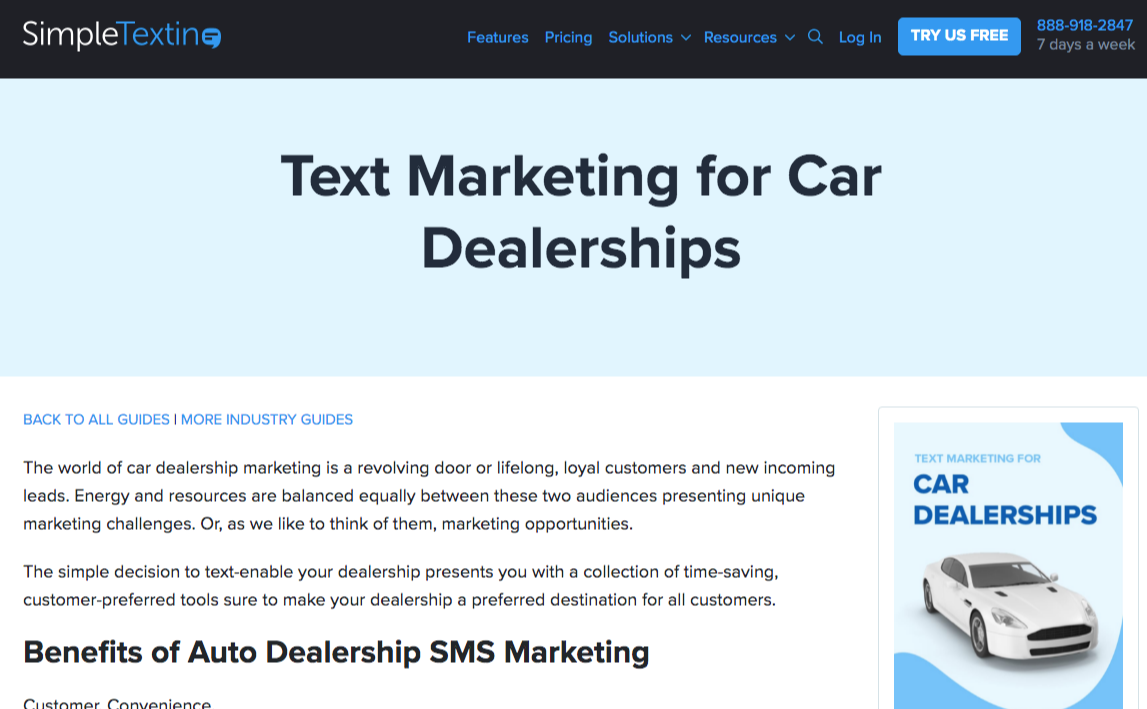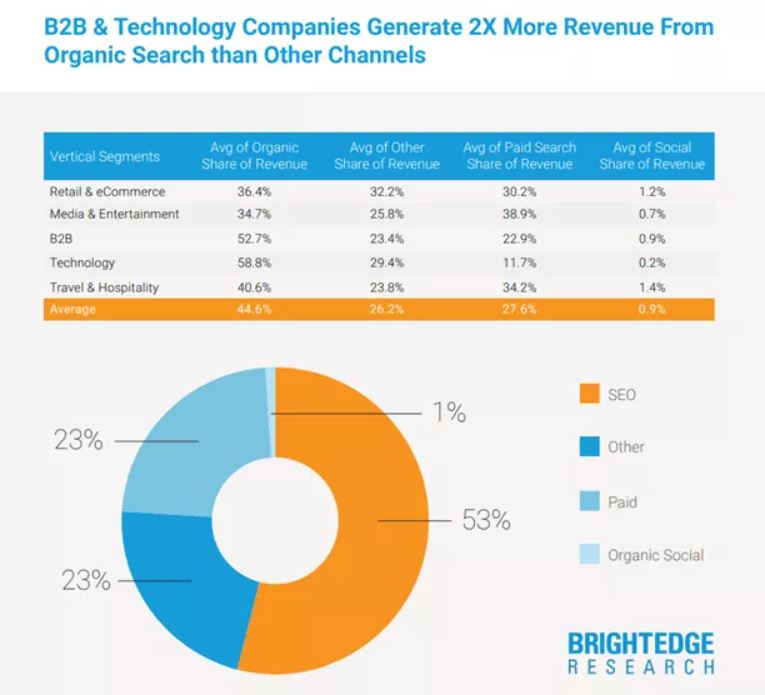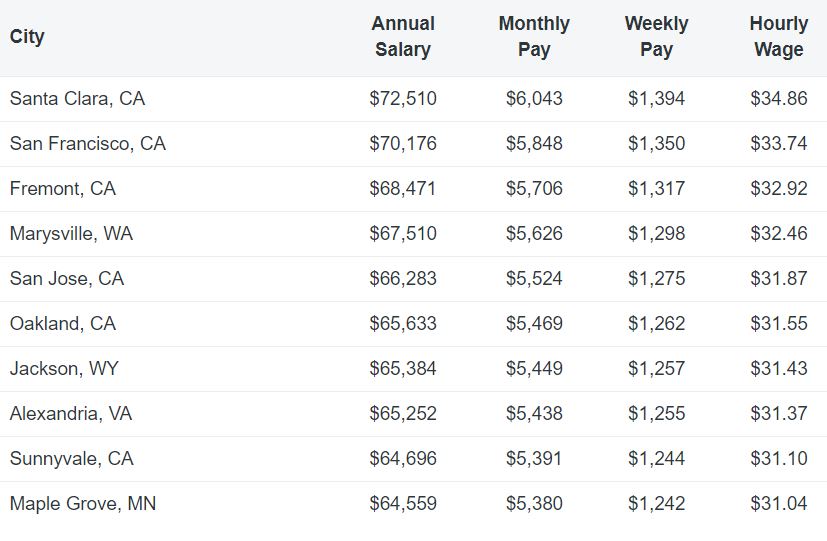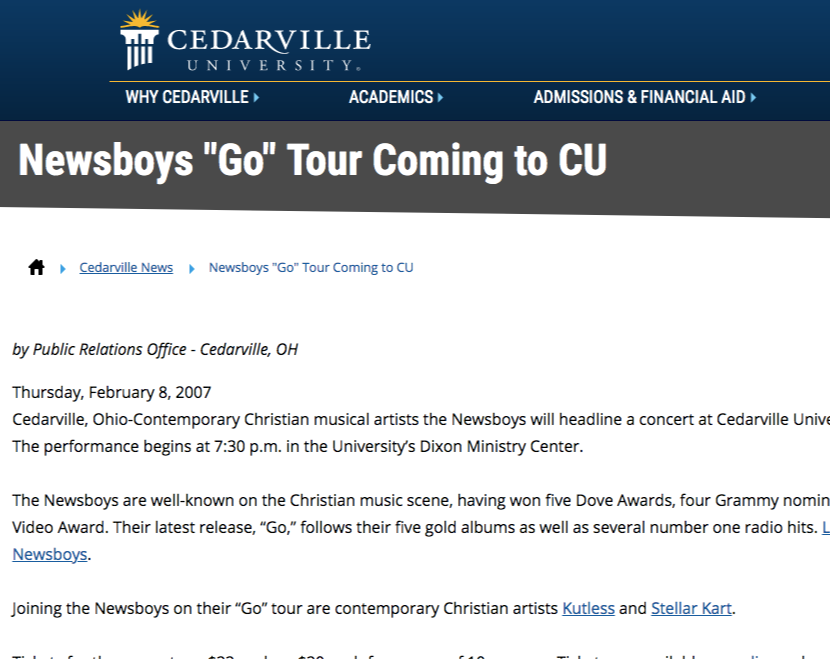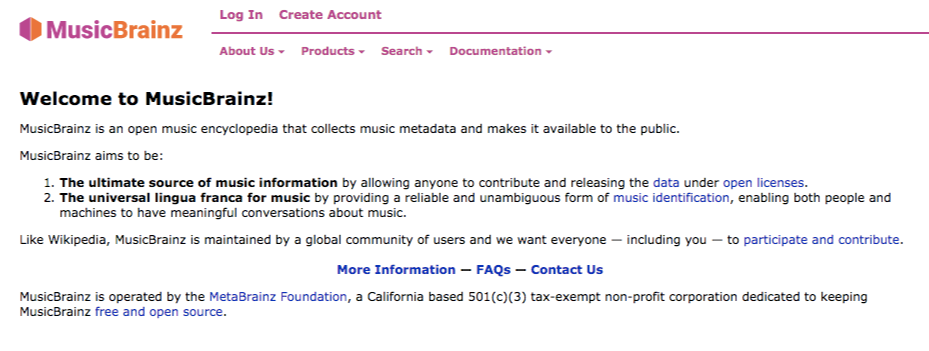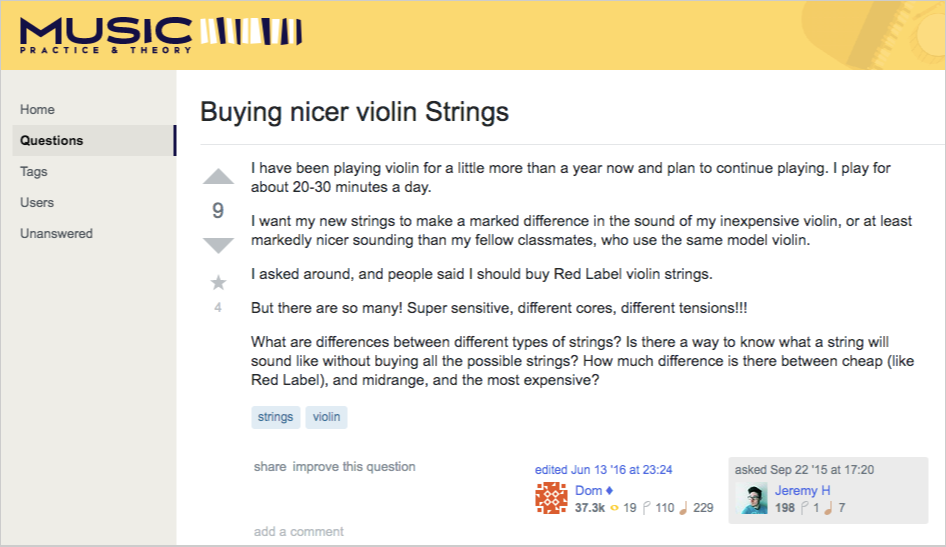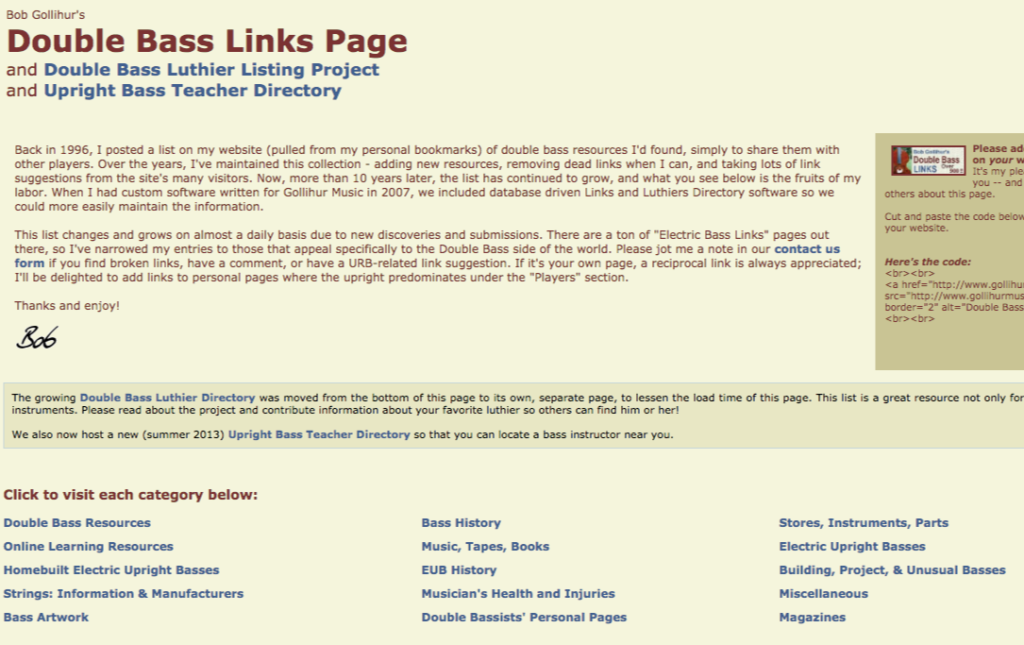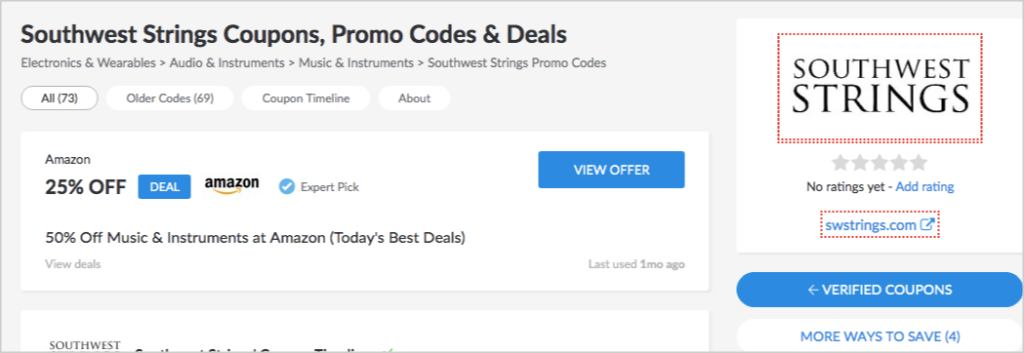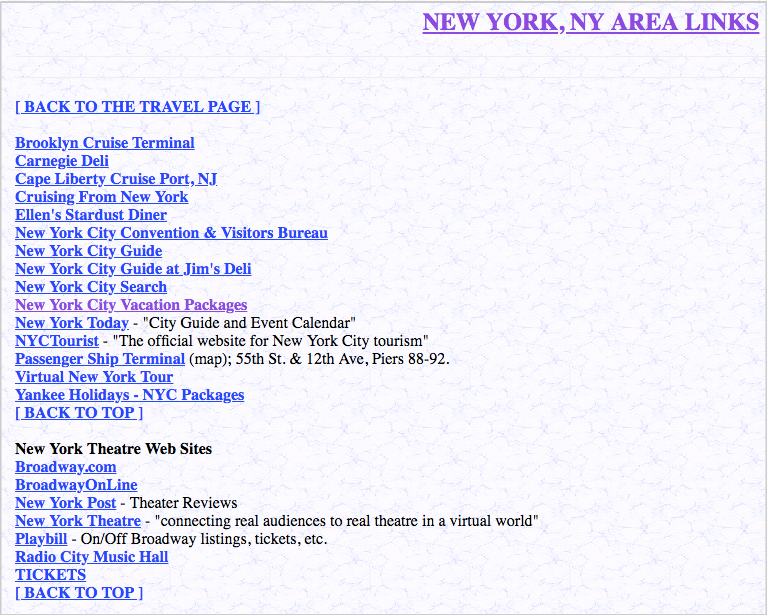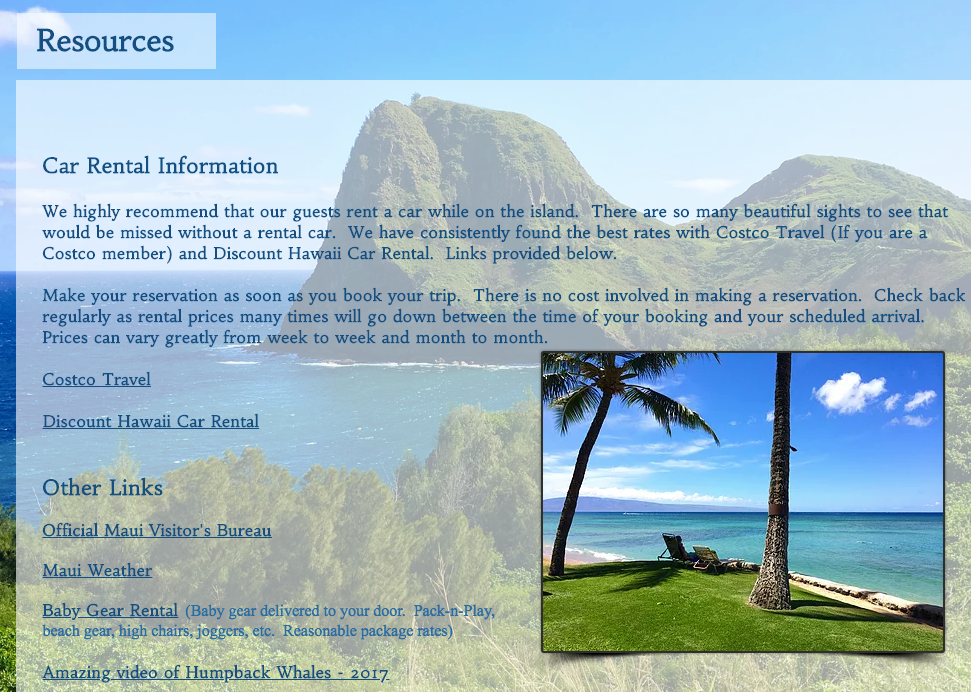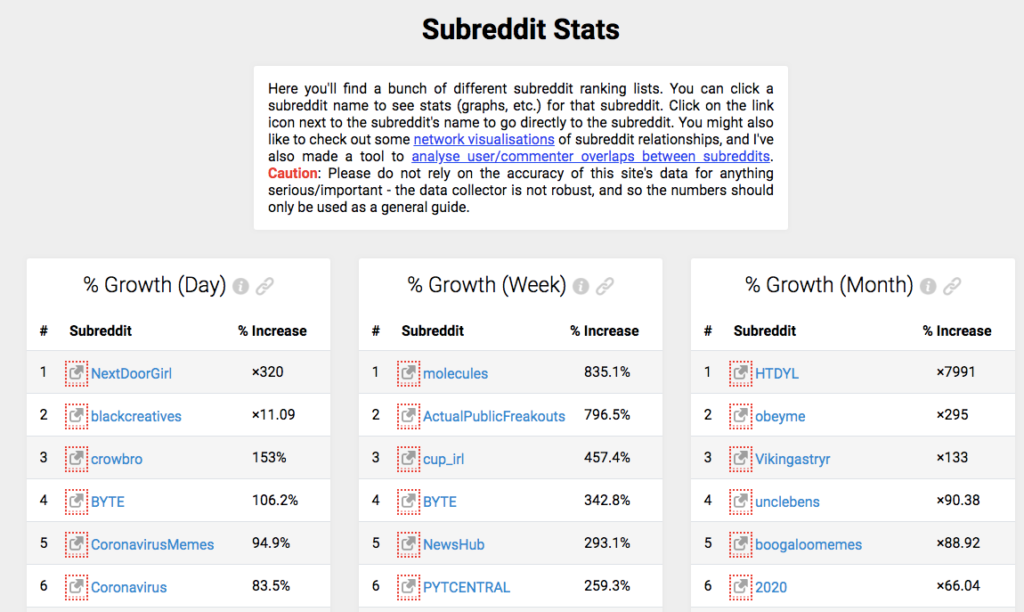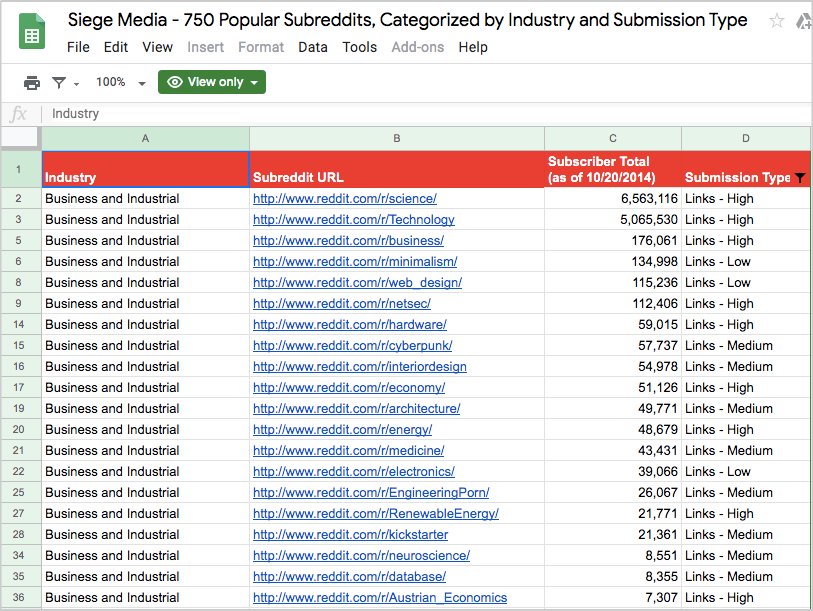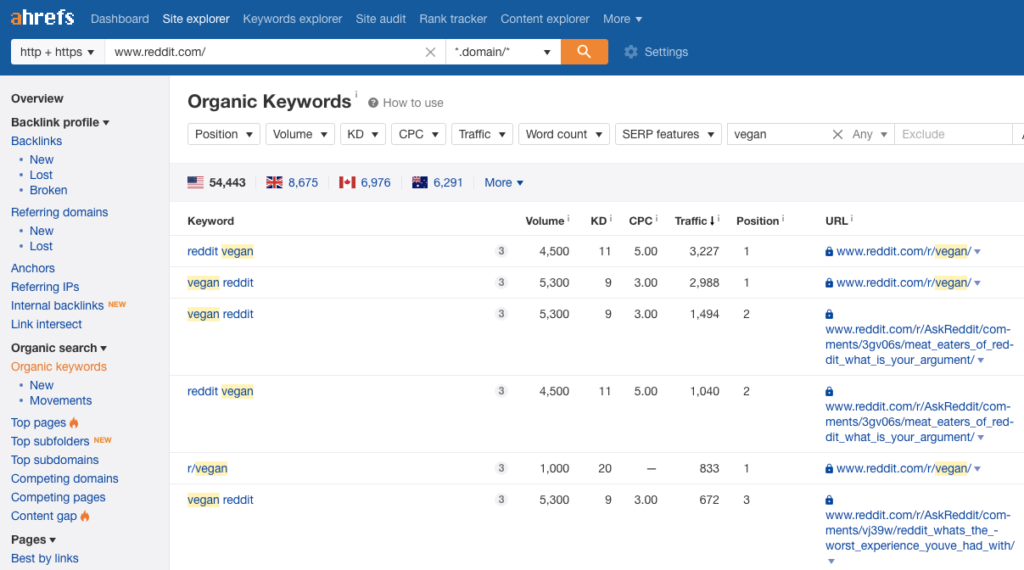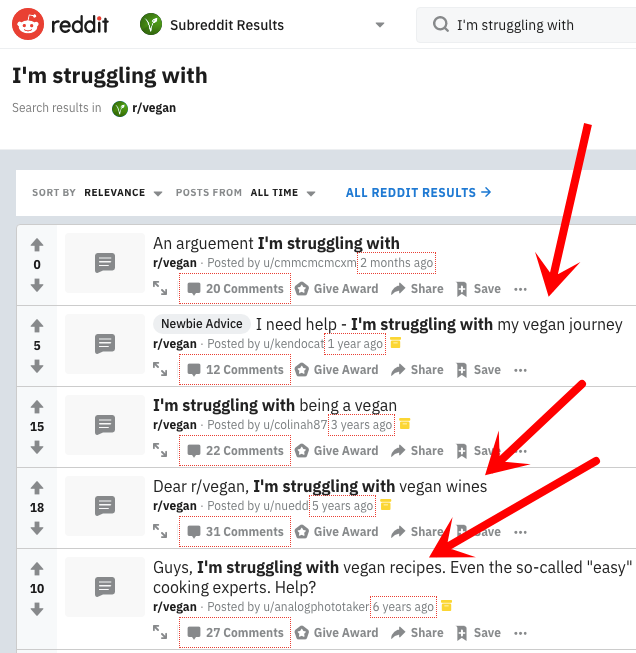19 Actionable SaaS Link Building Strategies For 2023 [Free Checklist & Templates]
This is the most detailed guide to SaaS link building online.
So if you want to:
- Build scalable backlinks to your SaaS blog and landing pages
- See examples of the world's best SaaS link building campaigns
- Increase new demos and trials from new customers
You'll love detailed strategies in today's guide.
Click on any link below to jump to a section.
Let's get started.
Steal Your Competitors Best Keywords Using Capterra
Capterra has the most number of software reviews on the web.
As of now, their "Software Categories" contain 850+ different categories.
That's a lot!
And you can take advantage of what they're currently doing.
How?
First, if you don't know who your competitors are, or if you're looking for additional ones to do research on, go through the list of SaaS companies in Capterra.
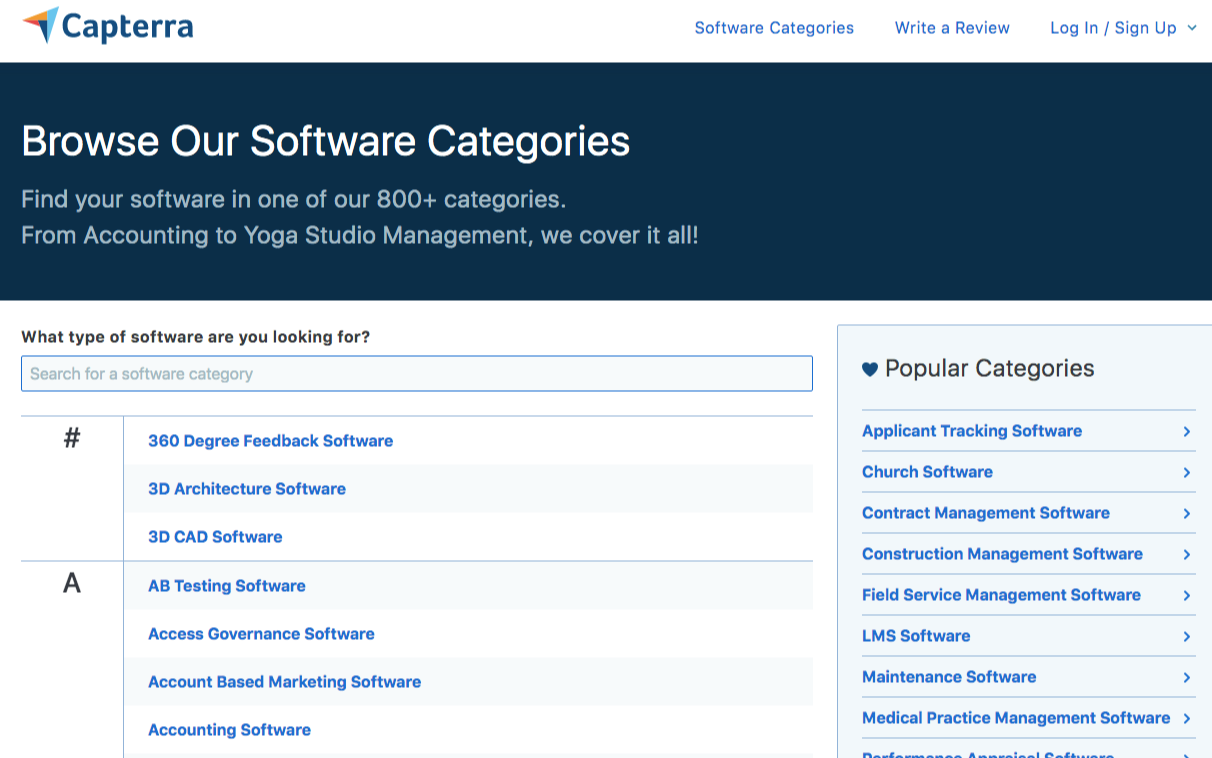
Once you find these related software businesses, you can check their backlink profiles using Ahrefs.
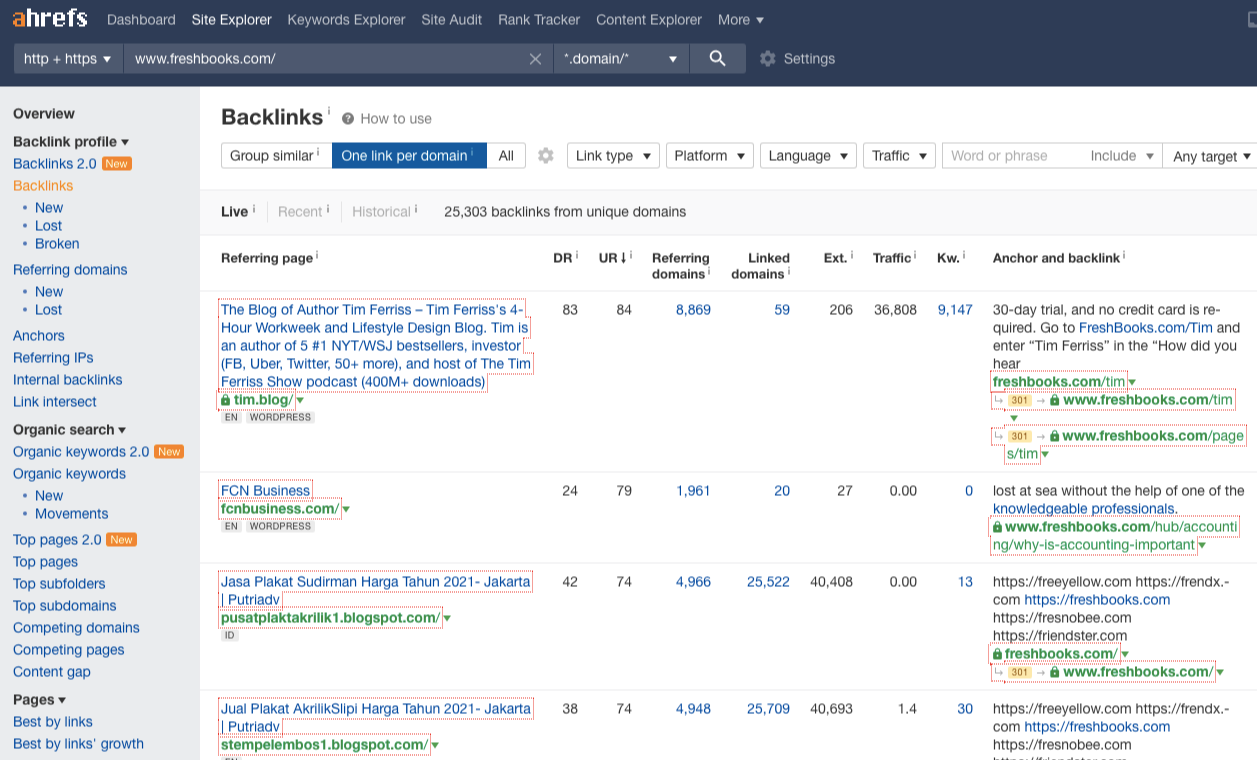
This can give you an idea of what types of backlinks they get for their SaaS website. And what niche-specific link building strategies they're using to get more targeted backlinks.
Secondly, get keyword insights from Capterra.
Most SaaS companies have the challenge of determining what best keywords to target for their landing pages.
Take EnsoData for example. They offer artificial intelligence (AI) scoring and analysis for sleep technicians. They have clear service offerings, but they're not targeting any specific niche keywords for their pages.

This happens mostly for SaaS with very specific core offerings.
The way to solve them is to let Capterra do the keyword research for you.
By looking at their Capterra page, you can easily find some core keywords.
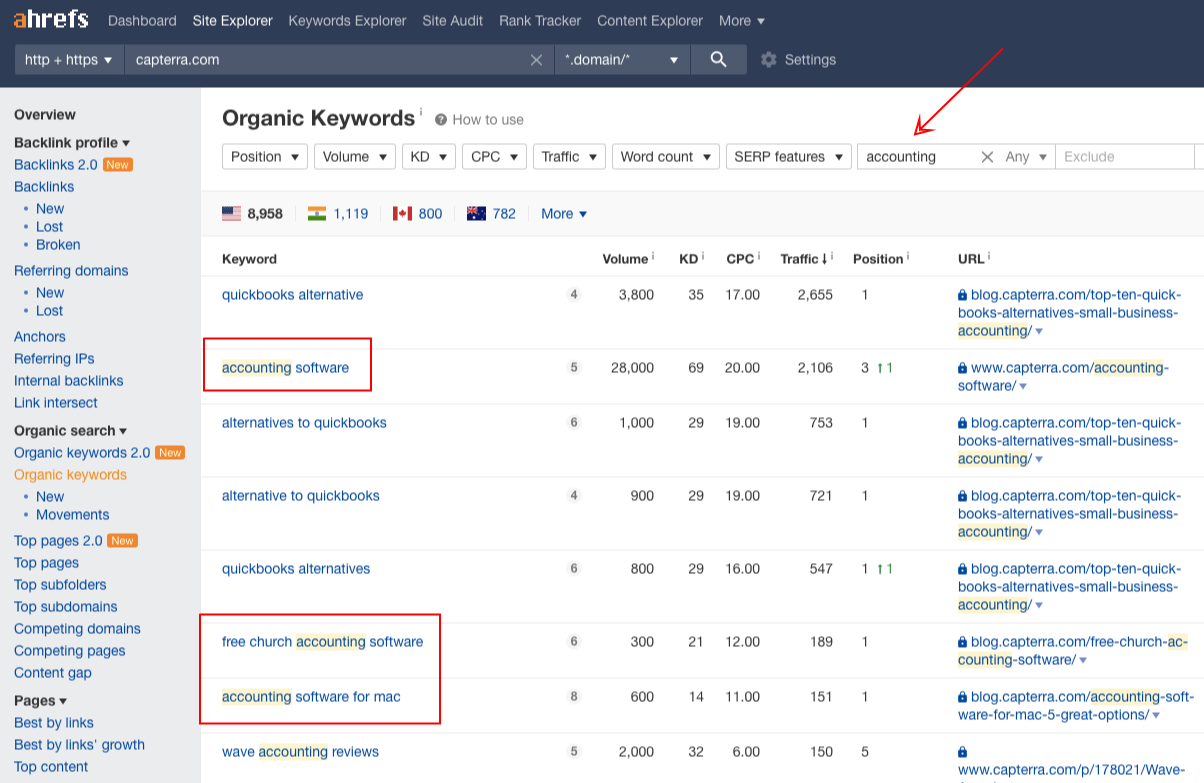
By doing these two things: finding competitors on Capterra's software categories and discovering the best keywords on Capterra pages, you can publish content assets that are likely to rank and earn links along the way.
Use Help Center To Earn Fresh Links
You build trust from new customers when you help people with their problems.
That increases demos and trials for your SaaS.
One way to achieve that is to use the Help Center of Knowledge Base.
Take a look at Hubspot and Uber. Both these two SaaS companies effectively use Help Centers for many purposes:
Show their existing customers how to use their products and their features to solve their problems.
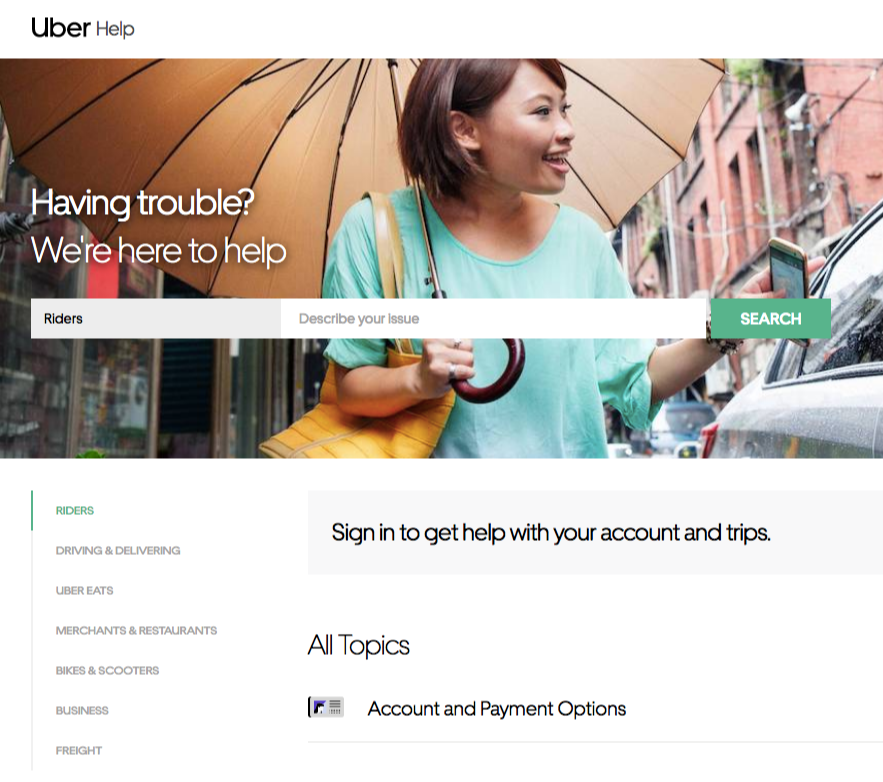
Provide tips from certified experts and industry practitioners.
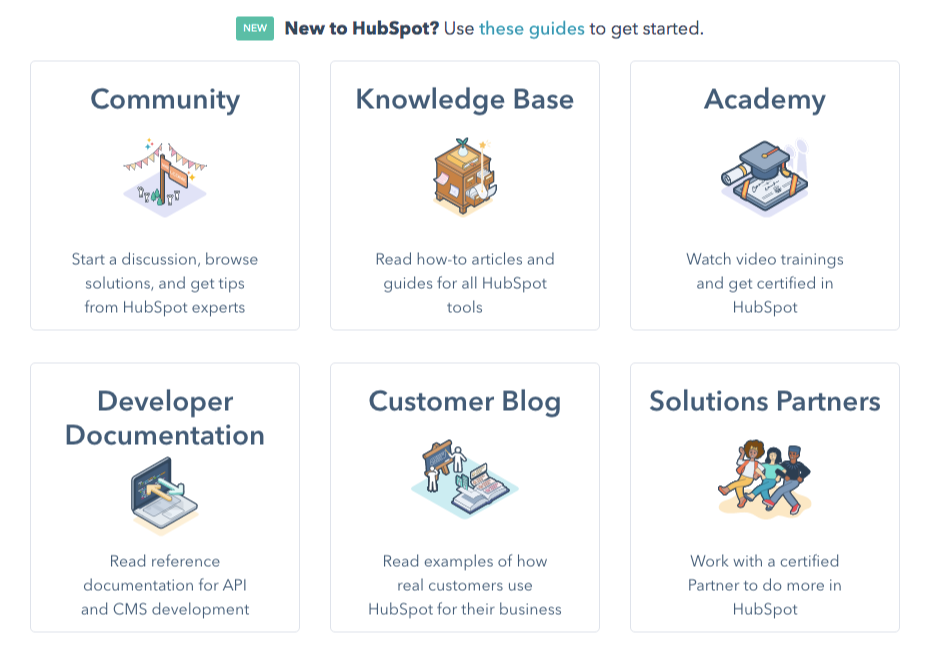
You earn fresh links from people you've helped. They will talk about it on forums and on blogs.
The reason is simple:
They found your guides, tips, and product features helpful for them for their communities.
See the number of links Hubspot and Uber earned with their Help Centers.


You can check out our link building services and SEO services for SaaS.
Discover Untapped Link Opportunities From Google Play
If you have created an app for your SaaS, this is for you.
Take a look at the people who linked to your app in Google Play.
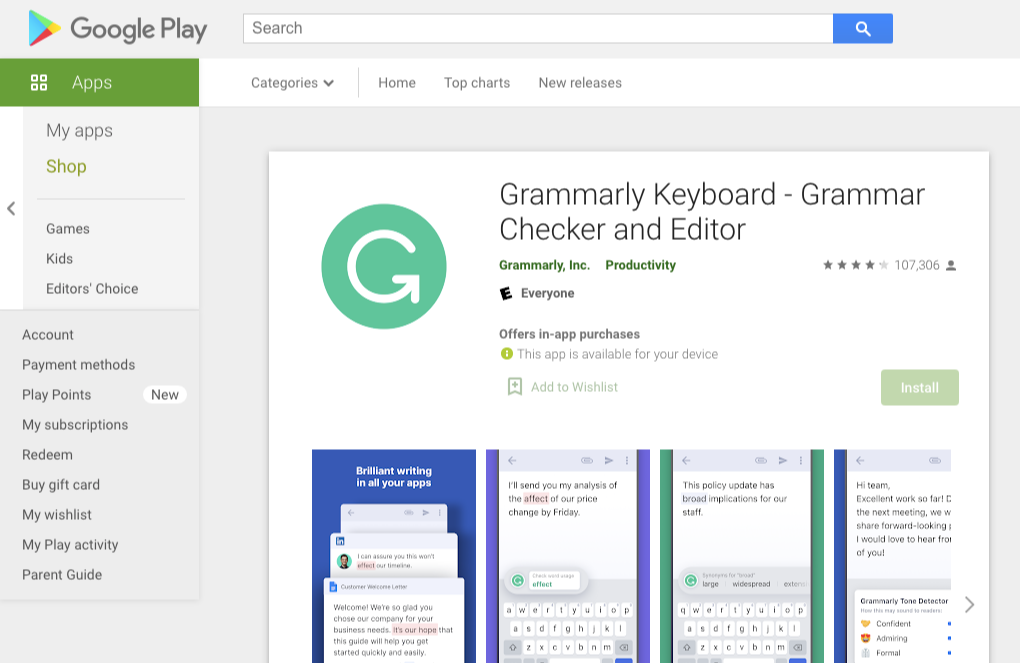
Then see if it makes sense to have another opportunity to get backlinks from them.

If they mention and link to you, they are familiar with your SaaS brand.
It makes sense to reach out again and offer another value in terms of content.
Make a list of all people who linked to your app — who can be your backlink prospects for another link building campaign - i.e. guest posting.
Execute another link building campaign for your new list of backlink opportunities.
[optin-monster slug="eb0peyi0atyximzovsgv"]
Use Product Hunt To Earn Branded Links
Product Hunt is your go-to website when finding the best new software in the market.
It's also a great way to get feedback from SaaS founders, marketers, and the tech community.
If you want more new customers for your software, launch it on Product Hunt.
As you get traction, you earn eyeballs from publishers, tech content creators, and linkers on different websites.
That way, you earn new links to your SaaS brand.
Take LeadForms for example:
After launching their software product to Product Hunt, here's what they got:
- Generated over $10,000 ARR in the pipeline (some super highly qualified leads)
- Close to 2,000 unique page views
- A couple of backlink opportunities
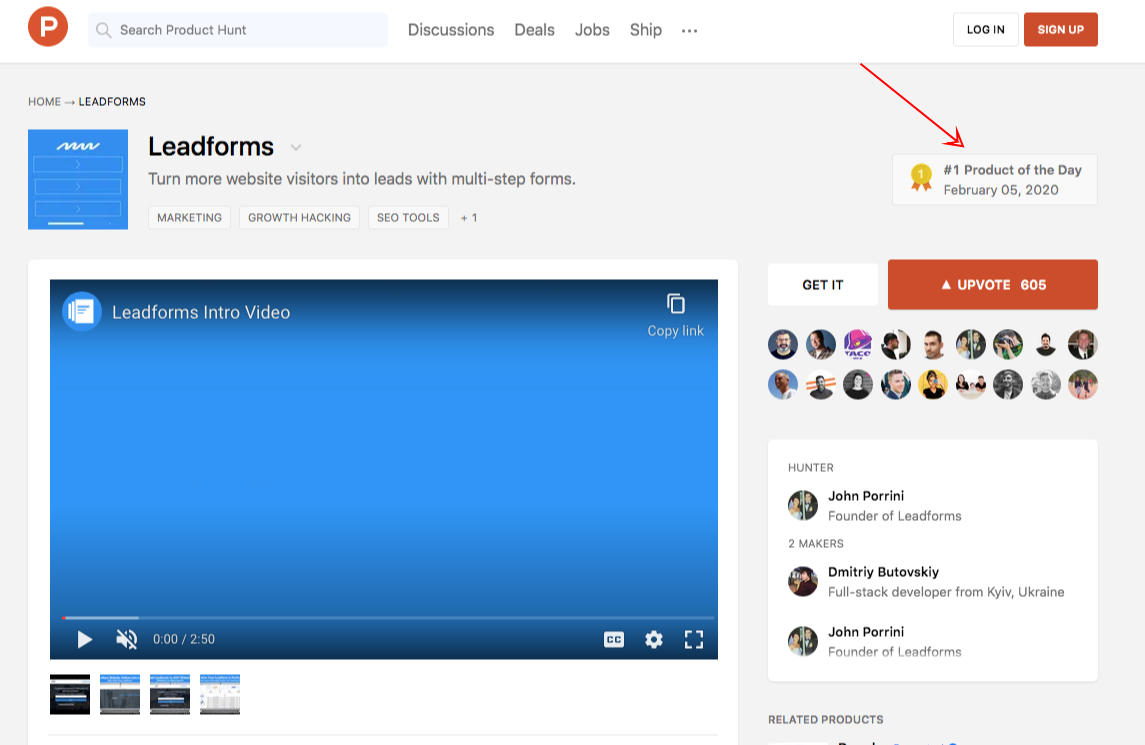
If you want to get more demos and trials, and increase your MRR, submit your SaaS strategically on Product Hunt.
You don't spam people. You don't force them to upvote and support your product launches.
Product Launch is a community. So, contributing value first should be your utmost priority.
You build your own community long before the launch. So when you start launching your software, you'll already have a bunch of people to support you.
Here are some examples of successful Product Hunt launches:
Flawless
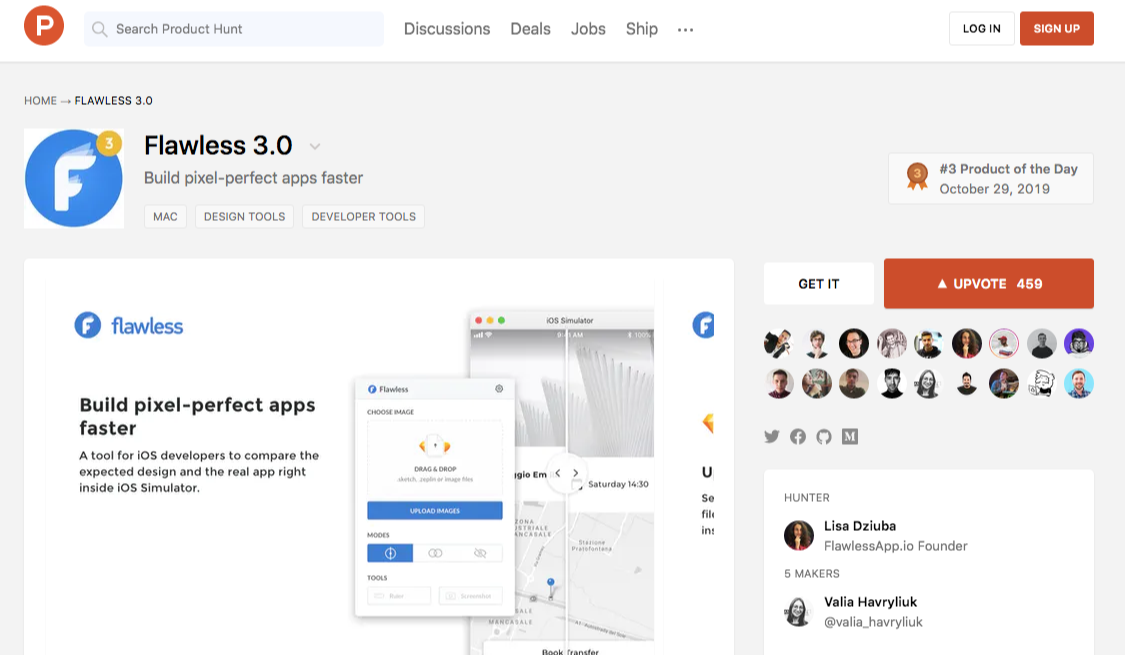
Quokka
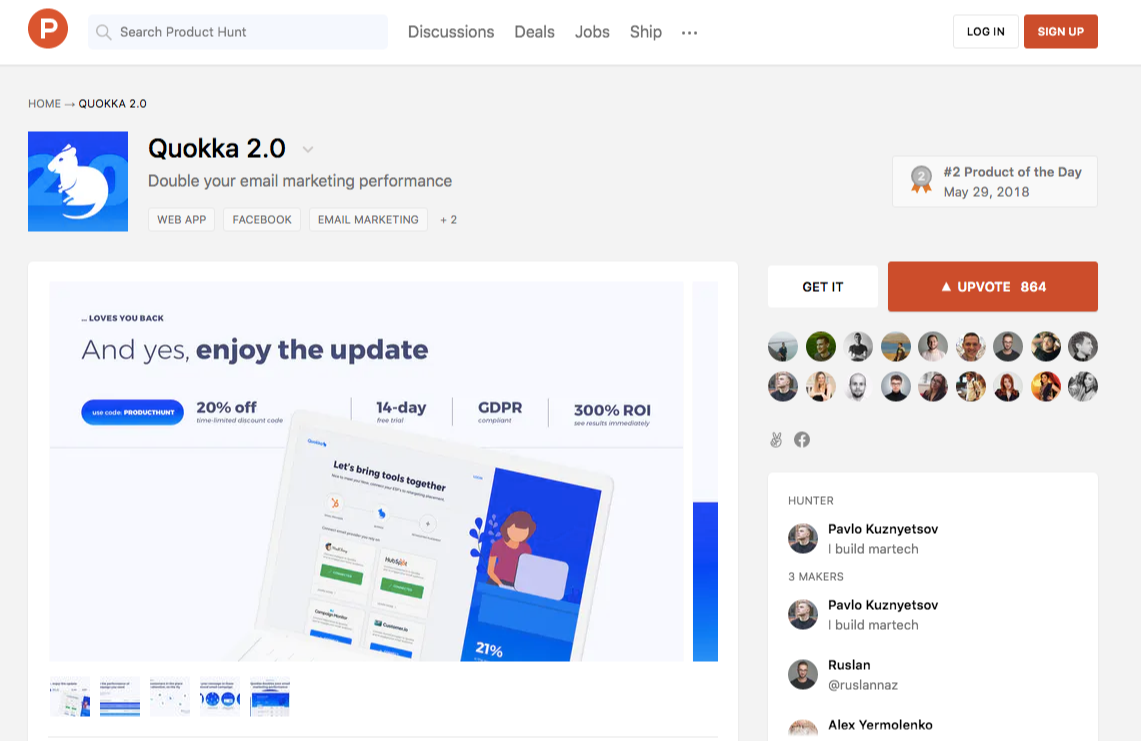
Weblium
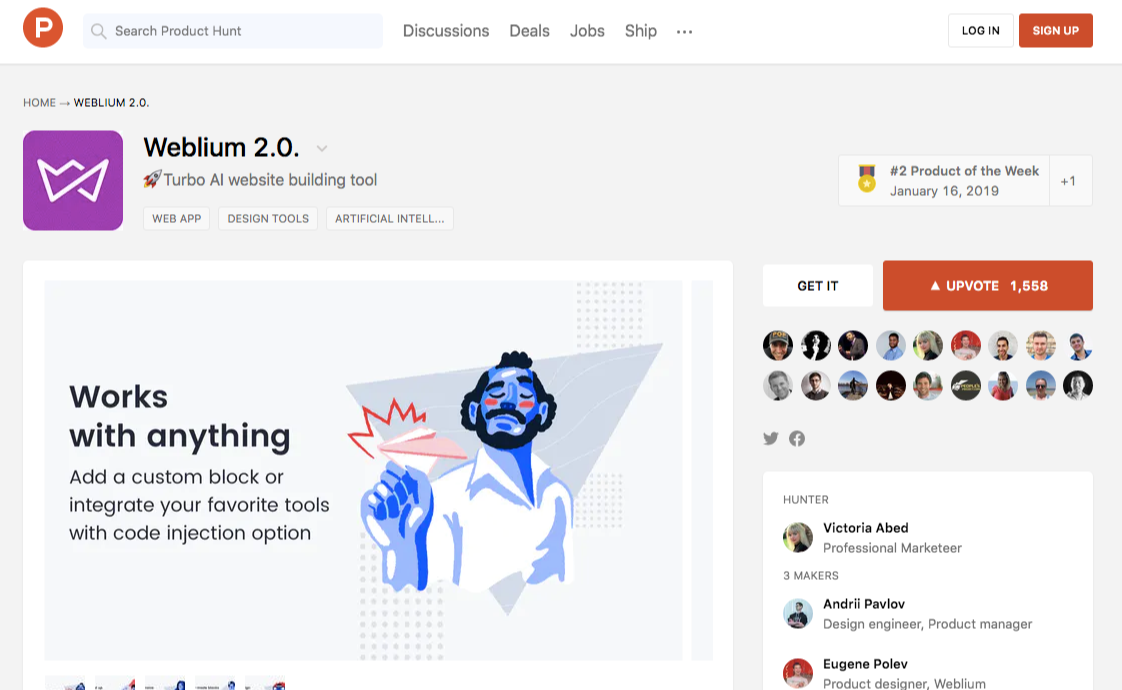
Optimize Your SaaS Landing Pages To Increase Linkability
Not all landing pages of SaaS are linkable. People don't normally link to sales pages unless it is worth citing.
If you have SaaS landing pages, you have to make them linkable.
How is that possible?
You include citable elements to your SaaS sales pages.
Add any of these micro content to your landing pages:
- Data or “findings.”
- Direct quotation of a source.
- Defining jargon and industry terminology for the layperson (aka definitions).
- Pricing Guides or Generalized Pricing Information.
- Images, Videos, Widgets, Downloadables.
- Detailed, Multi-Faceted Metrics-Based Reviews.
- Tips/Advice Directly Related to Products/Services on the Page.
- The Origin Story.
- Supplemental Outbound Resource Links
These are content pieces to increase the linkability of your sales pages. The more you have them, the easier for you to persuade publishers, bloggers, and industry content creators to link to your page because your content is worth referencing.
For example, Proposify added new free templates to their website for potential customers. These have been branded assets that generated hundreds of links.
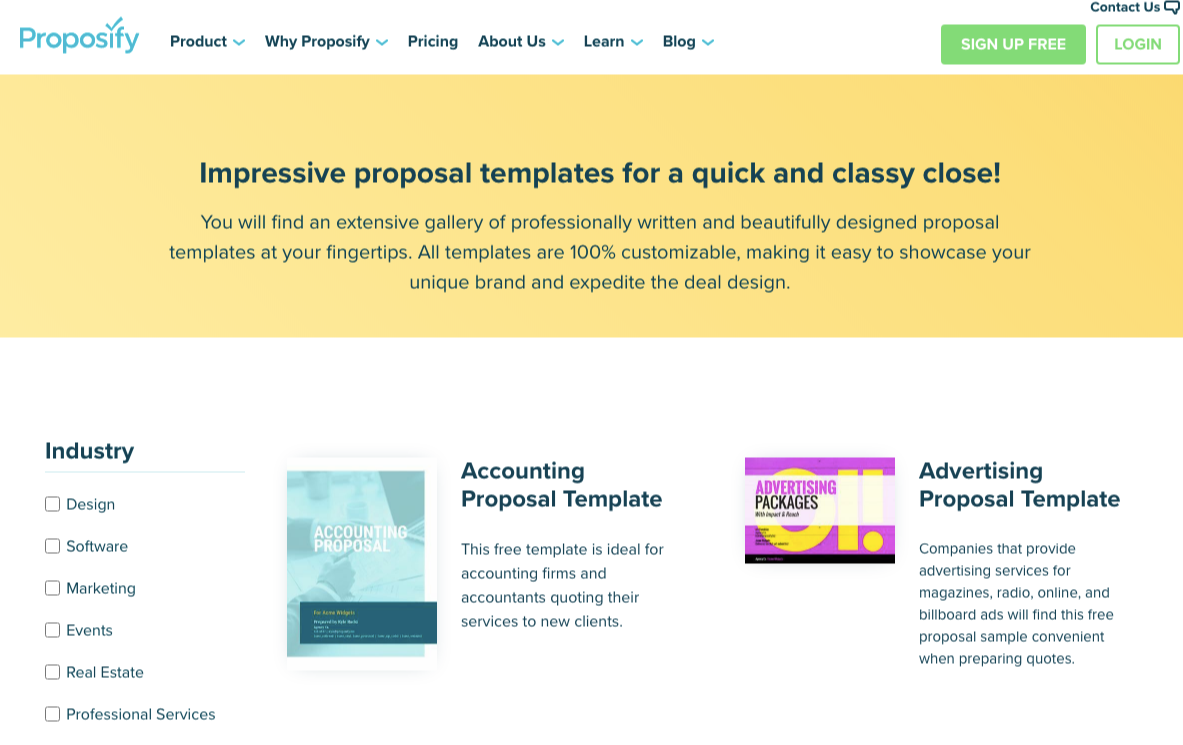
Another example is Quickbooks Sales Tax:
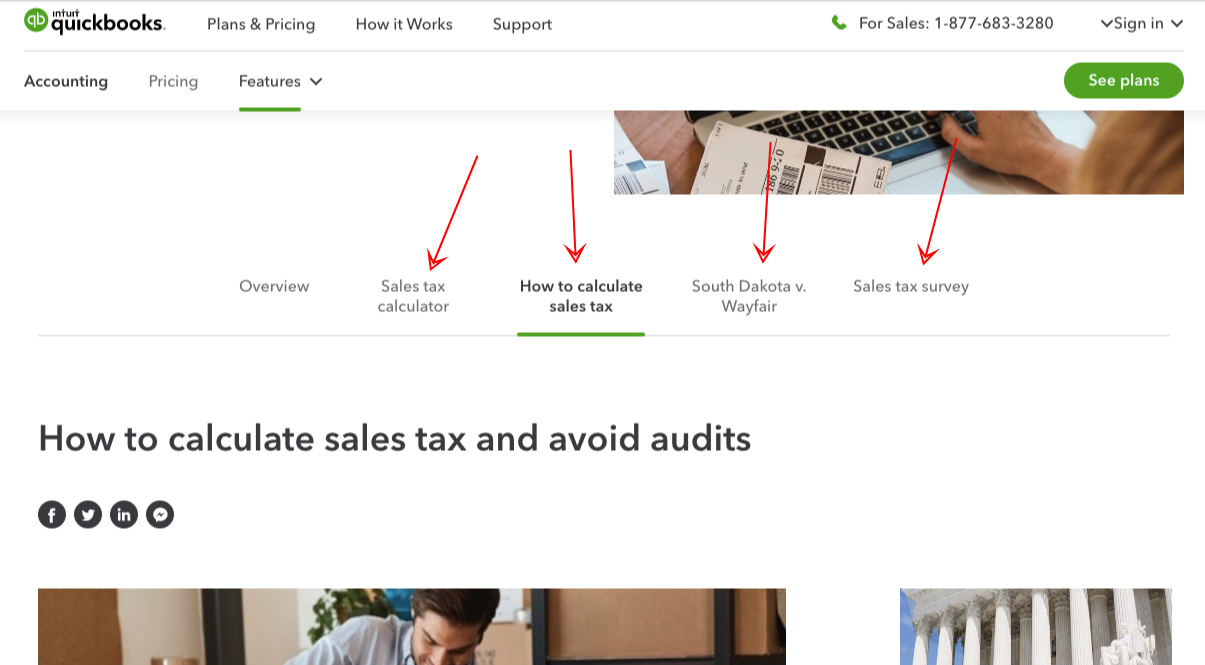
You see that they have "sales tax calculator", "how to calculate sales tax", and "sales tax survey".
These are all citable elements that will give publishers a reason to link to your sales page.
The next part is:
Reach out to people who might be interested to link to your sales pages. And expect to increase backlinks to your SaaS website.
Make Your CEO A Hero In Stories
Every software as a service brand has a story to tell to the world. And that's a huge advantage.
Journalists and reporters are hungry for interesting stories. They're looking for success stories of tech founders who've grown their startups to thousands of customers.
They also ask for quotes, tips, and advice from industry practitioners.
Here's the thing:
if you have stories, you can get more visibility and links for your SaaS website.
Plus, you'll get new customers by being featured on top publications — if these publishers bring referral traffic to your website.
Does your SaaS have any interesting founding story?
What about unique problems your tech product was able to solve on its own?
If you want to get great coverage on major publications, think about stories as your product.
Here is one example.
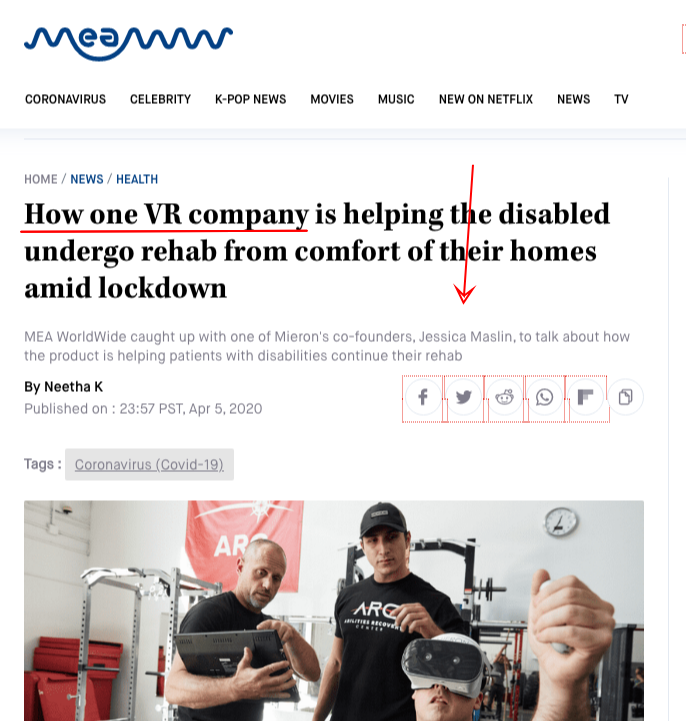
If you don't have a partnered PR agency, you can get your stories known using HARO.
You can check out this step-by-step guide on how to use HARO.
[optin-monster slug="eb0peyi0atyximzovsgv"]
Create A WordPress Plugin
Most webmasters use WordPress as their CMS.
For ease, most content managers and publishers want to use plugins to integrate tech products useful for their websites.
The best thing?
Create a WordPress plugin.
If your SaaS has logical benefits for ease of integration with WordPress, that's a big plus for your customers.
The next big thing is you get backlinks from WordPress users and tech publishers.
One more: you get new customers searching when your plugin is featured in the WordPress directory.
Take Hubspot again as an example.
They've created a WordPress plugin to integrate their software products inside the WordPress website.
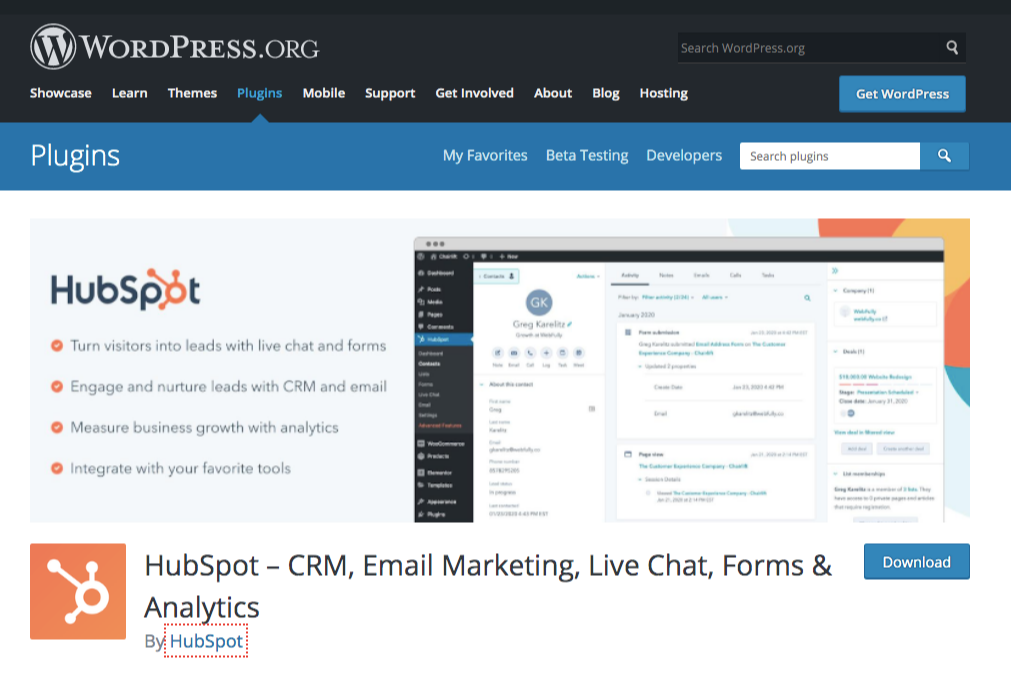
Built natively into WordPress, their customers can do meaningful tasks in CRM, email marketing, and analytics.
As of now, their Hubspot WordPress page earned over 1800 links.

Use Your Affiliate Program To Increase More Links
Affiliate programs are one of the best ways to grow your customers.
And the best part: you increase your backlinks by creating an affiliate program.
If you already have one, you just need to find bloggers and content creators who publish reviews and articles about niche products on their websites.
These are industry publishers who can write reviews about your product.
Of course, you get links from those product reviews.
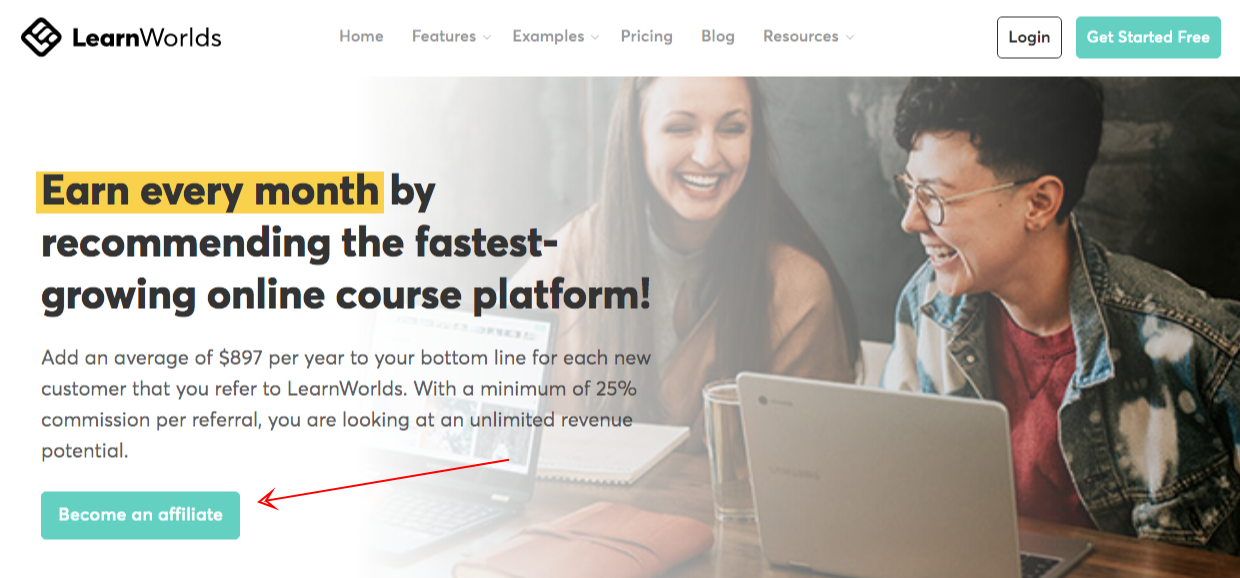
Here's how you do it:
Try to search for "your competitor" + "review" on Google.

You'll surface a bunch of review articles of your competitors.
Leave the review websites like Capterra, G2, PCmag, etc..
For bloggers and publishers who write product reviews for your competitors? Reach out to them.
Publish Learn Hubs To Increase More (Targeted) Traffic
Read these statistics:
85% of large Saas businesses own a blog.
36% of SaaS companies use their blog to share content that educates. (SaaSX)
More and more software companies understand the power of content marketing in generating new customers, trials, and demos.
That said, how can you make sure your blog stands out?
Instead of doing what everyone is doing.
You do this:
You create what we call, "Learn Hub".
Learn Hubs are basically resource or knowledge centers.
Basically, you create an online library wherein you publish different pages that systematically target keywords within a topic.
The catch here?
You keep readers engaged on your site because each content piece lives closer together.
And because the entire "learn hubs" consists fully of highly valuable content assets, it's much more linkable than other competing individual pages.
For example, Canva's Learn Hub on design has generated over 3,000 backlinks and is currently ranking #1 for the key phrase: "free design".

Another example is from Freshbooks. Its Small Business Resource Hub is one of the top resource centers on accounting and invoicing for small businesses.
Freshhooks' "Learn Hub" ranks for over 355,000 keywords, with 3,200+ backlinks pointed to it.
Use High-Quality Custom Tools To Generate Links
Here's the good thing with tools:
It helps in automation and simplicity of work.
And for the most part, generating high-quality backlinks to your website.
For example, Gusto has a full library of different payroll and HR tools that currently generates over 2,000 backlinks and over 40,000 monthly sessions, according to Ahrefs.

Software companies like you, won't have a hard time creating custom tools.
You do this as a product team.
Are there any estimated calculations your potential customers must make to arrive at a decision to purchase your SaaS product?
Do you have in-house spreadsheets that you can share with your audience to increase their efficiency on certain tasks?
Start with one tool. Then promote it massively to your target audience.
Add another tool to your /tools section. Promote it again to your audience.
You build a momentum of link earning as you build sets of custom tools for your audience.
Submit Your Website To Software Directories
You can't ignore the basic stuff:
Submitting your SaaS website to software directories.
You simply have to submit details about your brand, and some other information needed for submission.
Here is a free list of software directories.
[optin-monster slug="d8inb7n79yg0nnusgjag"]
Discover Content Patterns In Your Industry
The #1 mistake content marketers make is:
Not doing enough research before creating the content…
The reason why they don't get enough results when they start to promote their content assets.
One content strategy that gets you backlinks is discovering content patterns.
These are patterns — types and formats of content that already have worked in your industry.
How can you do that?
Start to reverse engineer top publications in your target industry.
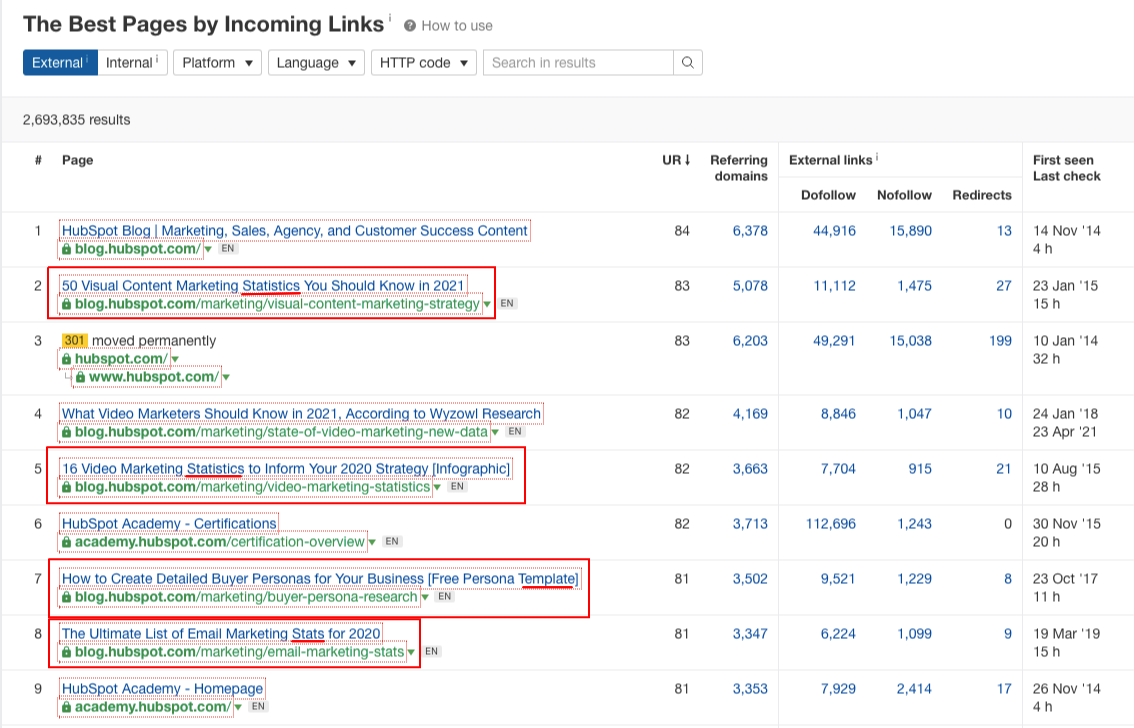
And see what types of content they consistently publish on their blog.
Model the same format in your SaaS blog and have a higher success rate in backlinks.
Use Tangential Topics To Discover Guest Post Prospects
Guest posting is one of the scalable link building strategies online.
But what's more interesting is:
Guest posting drives more traffic and more potential trials and demos to your software website.
Think about it:
If you write an article for an industry blog, and one of its readers read your content. You build trust among these readers.
They like you, and they'll buy from you.
But how can you know what industry blogs to target for guest posts?
The answer is to think about the specific problems your SaaS solves in your market.
We call as "tangential topics".
These are not the main core topics in your software blog.
But they're related to the solutions your SaaS is trying to solve.
Examples are:
Project management software helping freelancers do remote work.
Workflow software helping HR departments grow their businesses.
Productivity software helping small business owners manage their remote workers.
You see:
So you don't just limit your guest posting strategy with your main target audience.
But you're thinking about who are other audiences who might benefit from the solutions you're trying to solve in your space.
How?
Start with Google search
Use intitle search operator to find blogs with your target tangential topics.
See the example below:
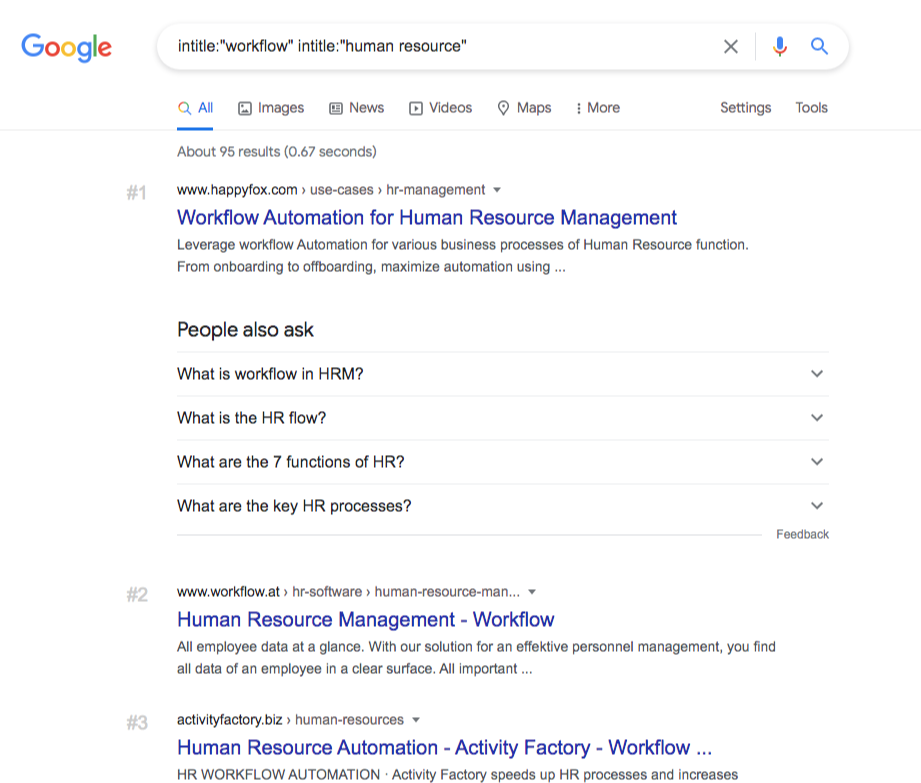
Make a list of all these industry blogs and target them as your guest post prospects.
Do this again after a couple of months. And you'll never run of your target guest blogs.
Publish Industries Pages
Do you want more trials and demos?
I'm sure you do.
It's only possible if:
You're not just niche-targeting, but also widening opportunities in targeting industries.
That's the best thing for software companies.
You can target different audiences.
For example, SimpleTexting created several "Industries" pages for their SaaS.
Text messaging for Car Dealerships:
Text messaging for Property Management and Landlords:

Text messaging for Fitness Centers and Gyms:
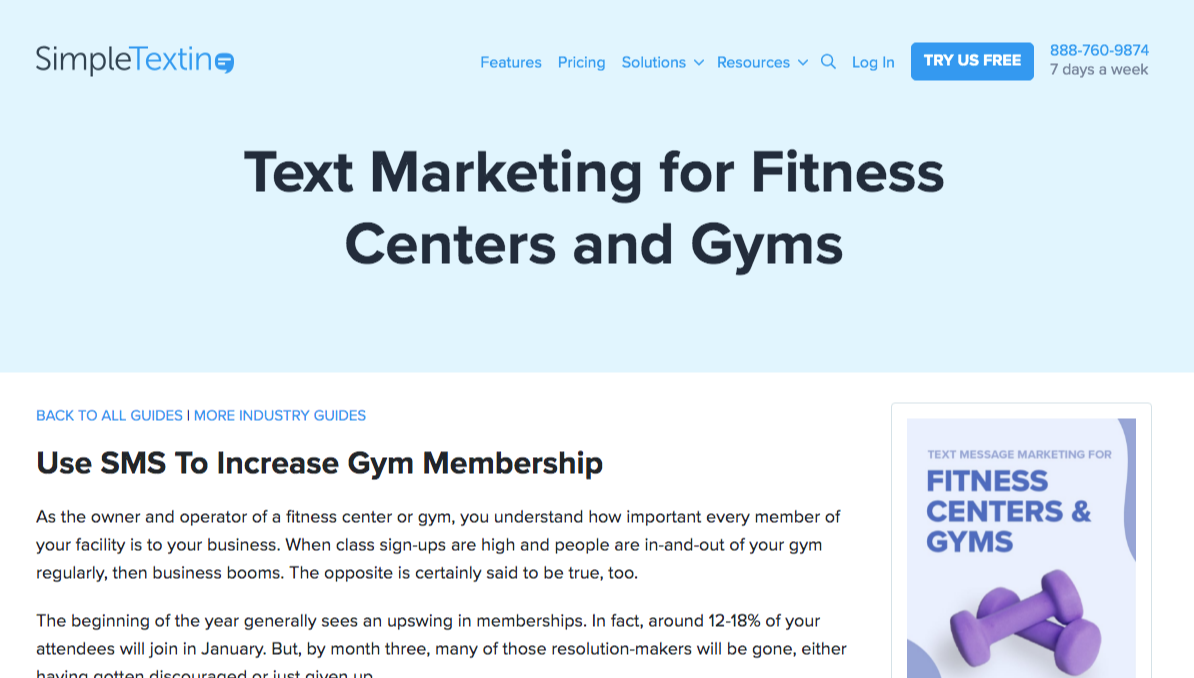
Industry pages work well in helping you drive audience-specific links.
In our given example, Simple Texting can reach out to car dealership blogs, property management blogs, and fitness blogs.
That translates to tons of links rather than just focusing on one niche.
Build Easy Links From List Posts & Comparison Guides
What's the common buying pattern of your potential customers?
Simple: They look through different solutions, choose which product they think that they can solve their needs, and decide for a trial or demo.
The reason why:
There are a lot of list posts (sometimes called, "listicles") and comparison guides in the software industry.
Bloggers, publishers, and content creators have "top 10 for [insert solution" articles.
You know what?
You can take advantage of these listicles and comparison guides to get links.
But you first have to start discovering them. How?
Plug in your competitor's website in Ahrefs to see who linked to them.
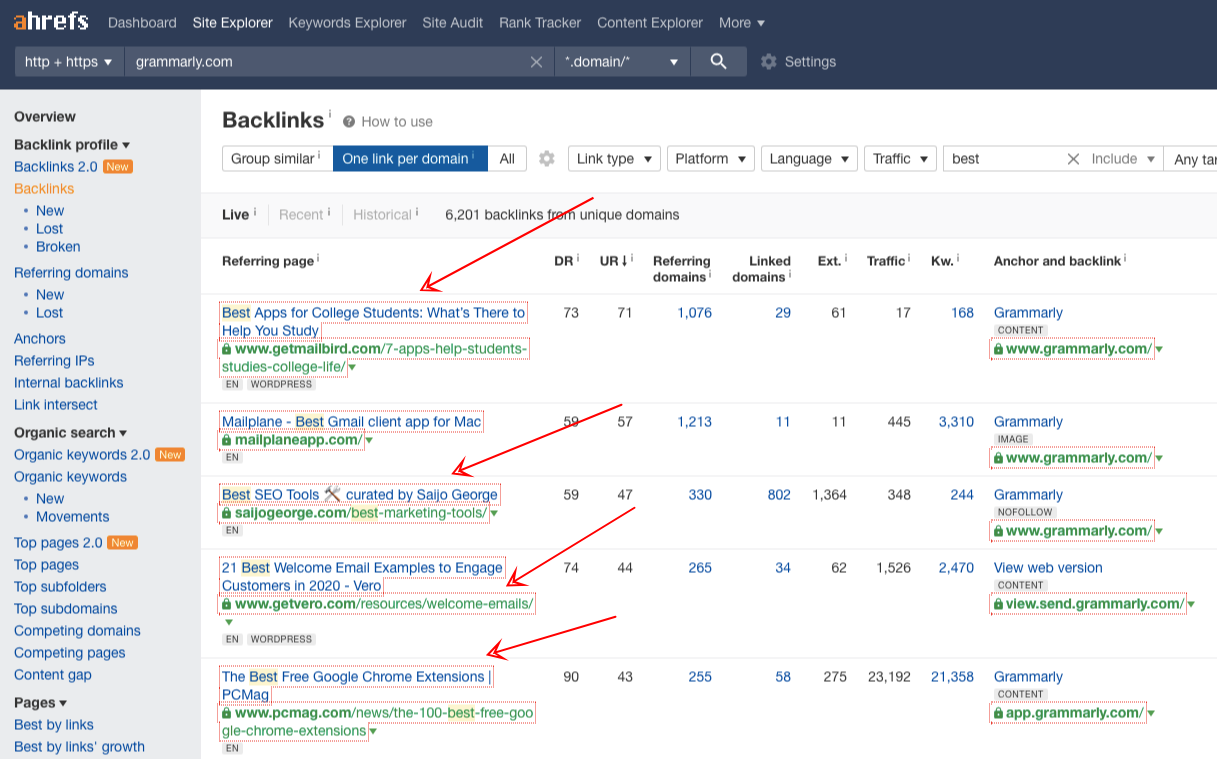
Go to the Backlinks section.
Add filter keywords such as:
- Best
- Top
- Tools
- Software
These will give you results of pages with any of these keywords in page titles.
Reach out to them and request your SaaS to get featured.
Pro Tip: Offer basic or premium account access to your online software to increase your link placement rate.
[optin-monster slug="eb0peyi0atyximzovsgv"]
Turn Brand Mentions Into Product Page Links
Most SaaS websites have lots of homepage links.
It's a good thing but:
If you want to maximize results in link building, you need more relevant more targeted links.
What can you do?
Turn your brand mentions of products into product page links.
Step 1: Look for brand mentions.
You can use Ahrefs to track them easily.
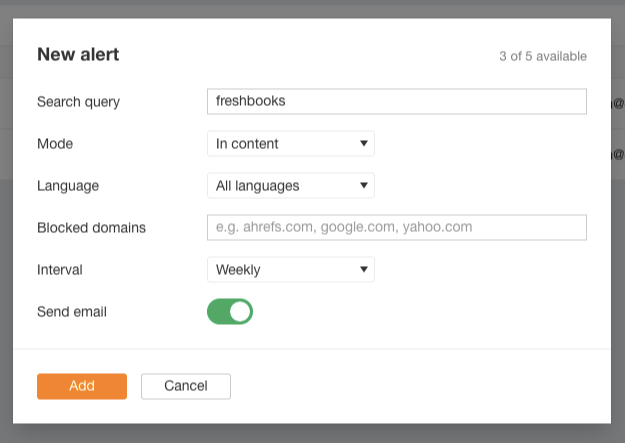
Or use Google Alerts to find these blogs that mentioned your SaaS.
Step 2: Reach out and ask to update their links to a more relevant page.
Given they have mentioned your online software in their articles, a simple request for change of links to a more specific page (your product or template page) is doable. for webmasters.
Here is a simple email outreach script that you can use:
Subject Line: Quick question for your [Name]
Hey [Name],
It’s [Your Name] here from [Their Website].
I was just looking through my backlinks and noticed you mentioned me in this post: [Link of the page where you got the link]
However, I noticed that although you mention a particular blog post of mine [Topic of the page that mentioned your
website], you actually linked to my homepage rather than the blog post itself.Any chance it would be possible to swap the link out for a link directly to the blog post instead?
No worries if not, I just think it’d make more sense in the overall context of the post (as people may be interested to
read that post).Either way, have a great week!
Thanks,
[Your Name]
Publish Statistics Page In Your Industry
People want to know different things.
They do Google search for "how many people are X", "what is the number of people in X", how many users are using X".
These are numbers. Some pages have statistics to show off.
It's good for users. It's also good for link building.
Your software brand has data and numbers that might be valuable to your audience.
And is a powerful asset for backlinks from authority sites.
Many SaaS websites publish "statistics" pages.
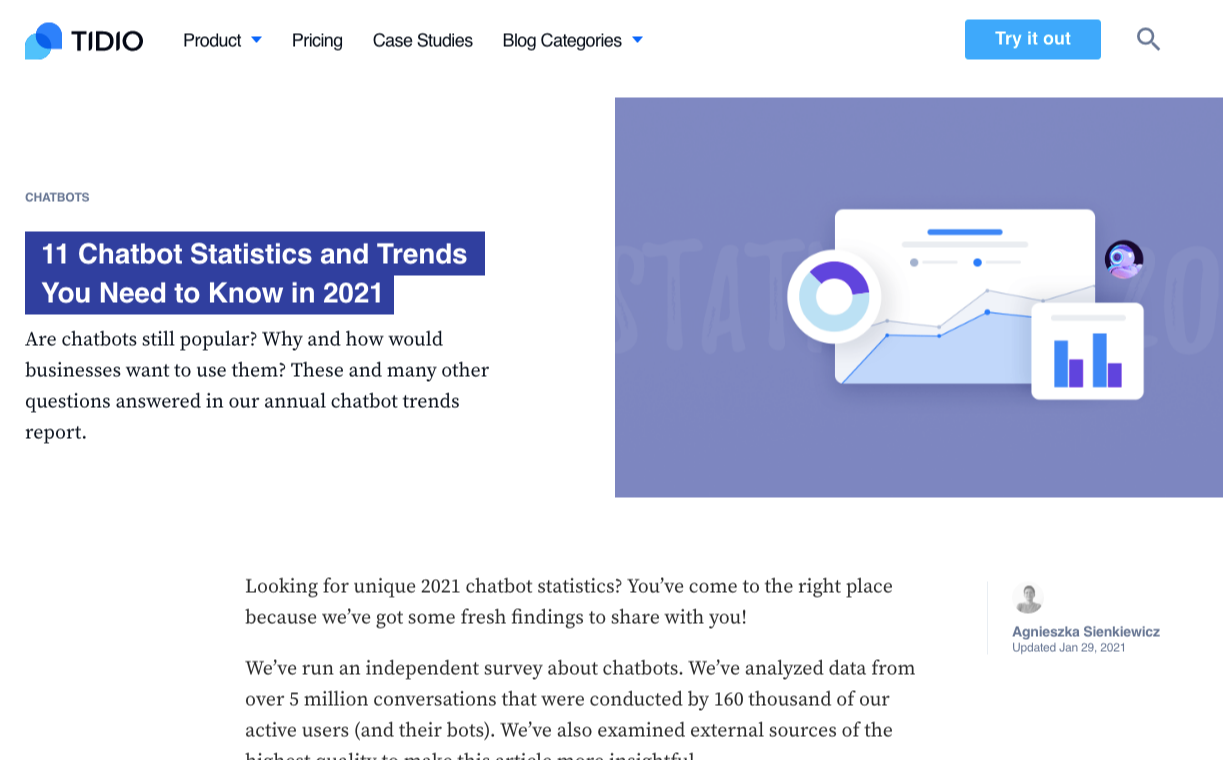
Hubspot Content Marketing Statistics:
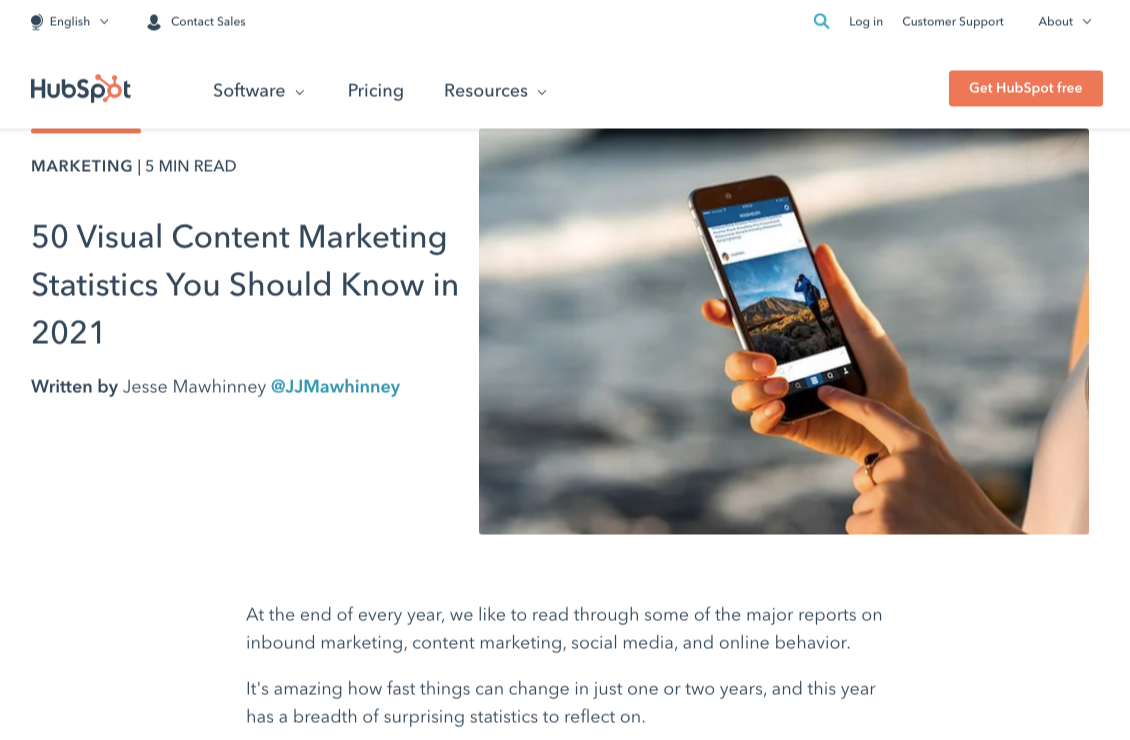
Simple Texting Remote Work Statistics:
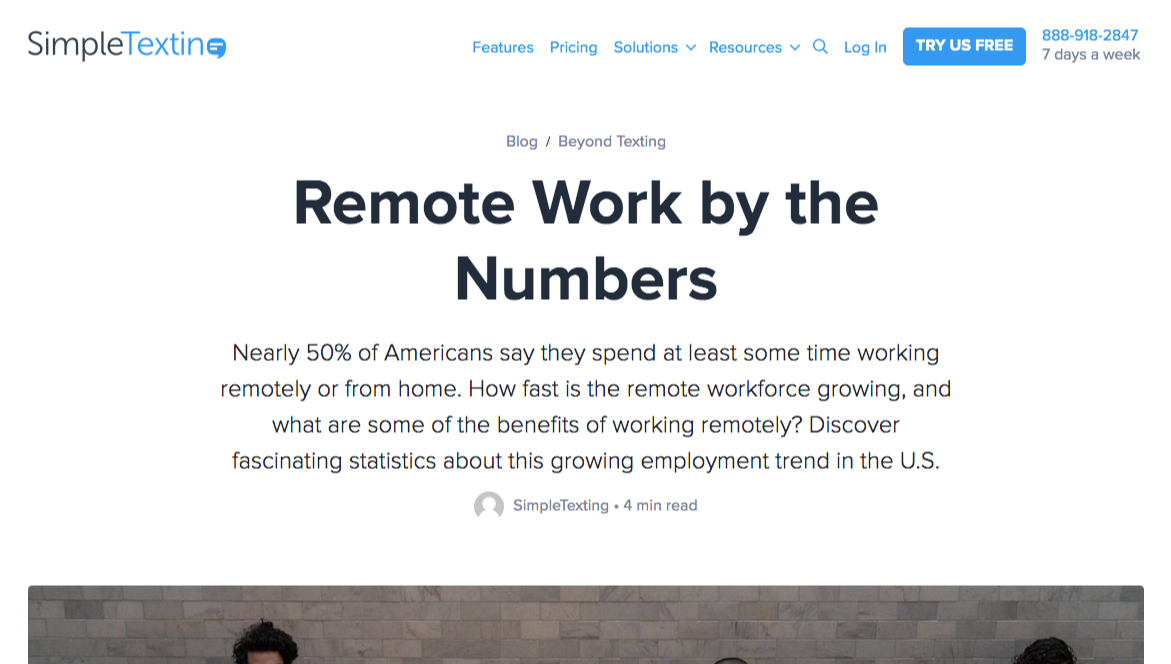
Publish your own statistics page.
Get information from your internal data in your company.
Or get data from top statistical sources such as:
Once publish, you reach out to people who might be interested in linking to the page.
Start with people who have previously linked to statistics related to yours.
Use Ahrefs to discover blogs, publishers, and websites that linked to your similar statistics page.
Go to the Backlinks section. Make a list of these backlink targets.
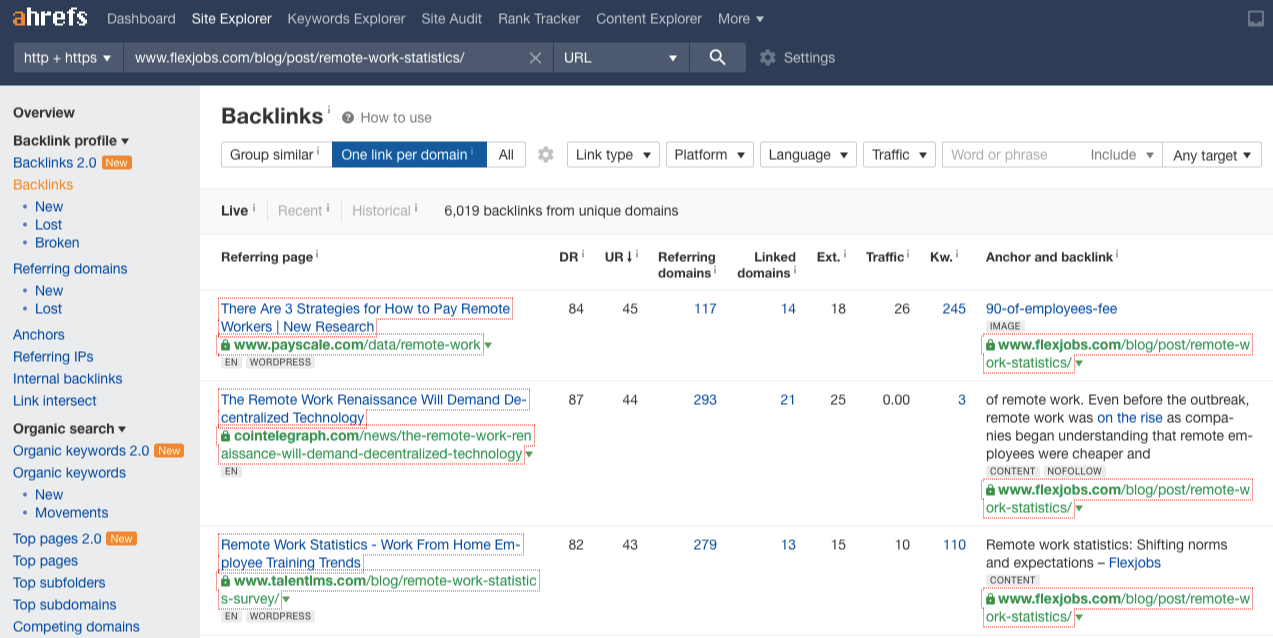
Reach out to them and promote your statistics content.
Hunt How-To Tutorials On Youtube
You should probably know that publishing Youtube videos is a great way to generate brand awareness and drive new customers to your SaaS website.
But there's one more thing with Youtube videos:
It helps software companies to bring new inbound links to their websites.
How?
By publishing tutorials on how to use your product for meaningful tasks.
For example, Trello has tons of videos on how to be productive using their tools.
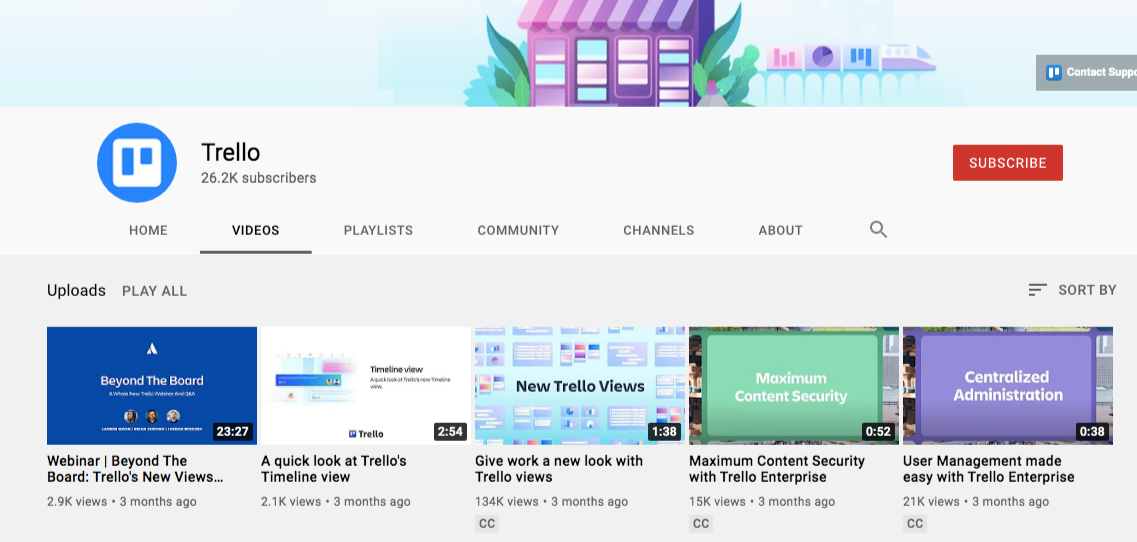
Instead of putting out an article on how to use Trello, a better demonstration of their SaaS features is through how-to videos.
Another example is putting out videos of app integration with your software.
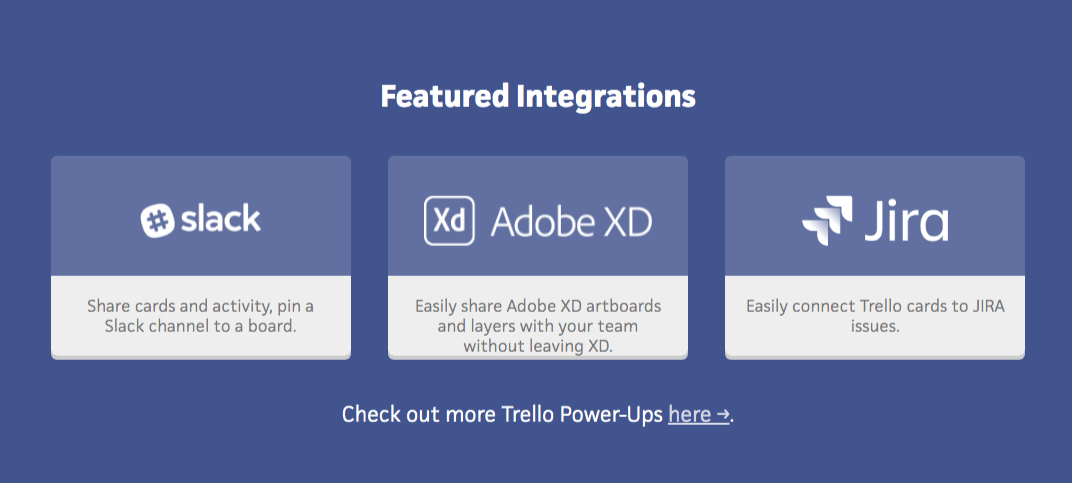
This helps your brand get in front of people using those integrated apps.
Those are link opportunities at hand.
You can track blogs that mentioned your SaaS along with the integrated app.
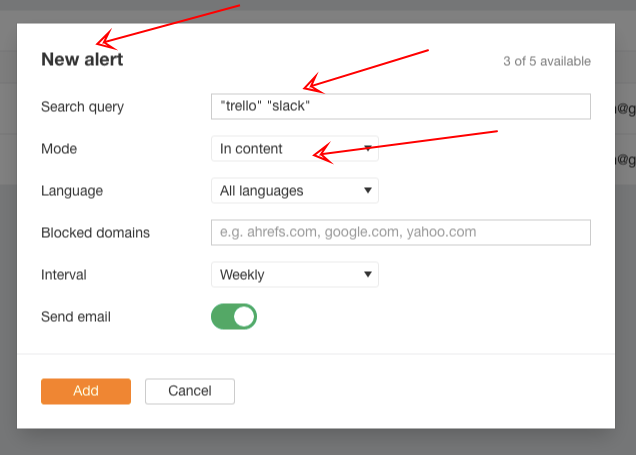
And even reach out to content publishers who've written a post on a topic of your Youtube video.
By sharing that it adds more value to their readers, if there's a how-to video that showcases the exact way of doing the task, you're likely to increase the chances of getting backlinks to your website.
Appeal To Sales People With Your Software
Audience-first link building.
It is your ability to think first of your audience, as it dictates what link building strategy to use for your software website.
Besides your main audience for your SaaS blog:
HR people, CIOs, small business owners…
…you can also target salespeople
Salespeople have high intent in social sharing and referencing valuable resources.
For what reason?
Simple: They get more money by doing so.
If they want more sales, they have to educate more their audience, especially if their offers have a longer sales cycle (e.g. 3 to 6 months before a person purchases their offers).
Trigger the emotions of salespeople by appealing to them with your SaaS content.
Think of ways on how to appeal to salespeople.
Use Google to find titles and topics that go near to your brand's solutions.

[optin-monster slug="eb0peyi0atyximzovsgv"]
Here's The Next Step…
I want to turn it over to you.
Which one of the 19 SaaS link building strategies you're going to apply right now?
Will you optimize your SaaS landing pages to increase their linkability? How about publishing "learn hubs" to earn more links and targeted traffic to your website?
Either way, let me know by leaving a comment below right now.
Content Marketing For Startups
Startups are businesses in their early stages. They are usually growth-oriented and have a mission to build something innovative and new. Marketing for startups is very important because it helps them create awareness, generate leads, and grow their business.
Content marketing is a strategic marketing approach focused on creating and distributing valuable, relevant, and consistent content to attract and retain a clearly defined audience — and, ultimately, to drive profitable customer action.
Why is Content Marketing Important For Startups?
Content marketing is important for startups because it helps them in the following ways:
1. Creating awareness: Startups need to create awareness about their product or service. Content marketing can help them reach a larger audience and create brand awareness.
In fact, about 42% of marketers say that content marketing has increased their organic search traffic. What does this mean for businesses? More traffic to your website means more opportunities to generate leads and convert them into customers.
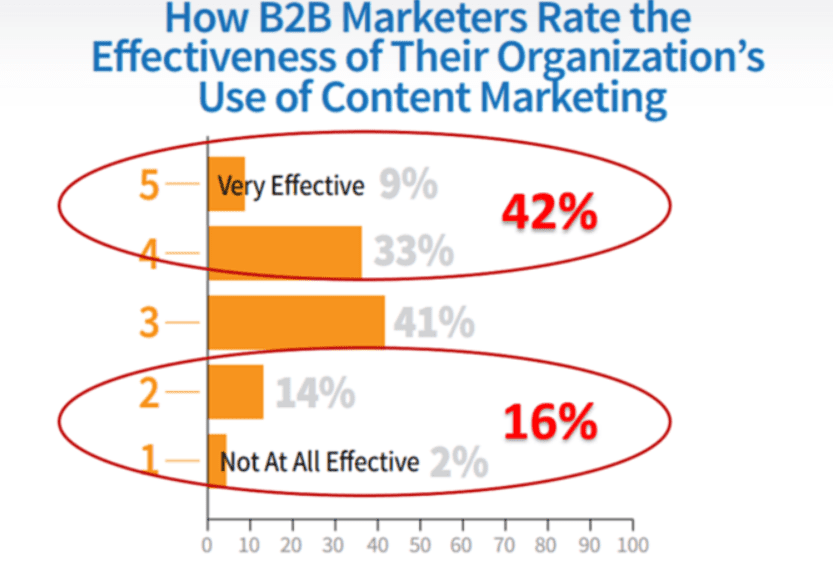
2. Generating leads: Startups need to generate leads to grow their business. Content marketing can help them attract more visitors to their website and convert them into leads.
In fact, content marketing generates 3 times as many leads as outbound marketing and costs 62% less. This means that businesses can save a lot of money by investing in content marketing.
By creating valuable content, startups can attract potential customers who are looking for what they have to offer.
About 80% of B2B marketers say that content marketing generates more leads than any other marketing initiative.
3. Growing their business: Startups need to grow their business. Content marketing can help them by providing valuable information that can be used to make decisions, solve problems, and take action.
Content marketing has been shown to increase sales and revenue for businesses. In fact, businesses that use content marketing see an average of 6 times more conversions than those that don’t.
This is because content marketing helps businesses build trust and credibility with their audience. When people trust a business, they are more likely to buy from them.
How to Get Started With Content Marketing For Startups
There are three stages to content marketing: Pre-launch, Early Stage and Scaling.
We’ll go into each stage in more detail below.
Pre-launch: In the pre-launch stage, startups need to focus on creating awareness and generating interest in their product or service.
To do this, they need to create high-quality content that is relevant to their target audience. This content can be in the form of blog posts, infographics, ebooks, or anything else that is valuable and informative.
Early Stage: In the early stage, startups need to focus on generating leads and growing their business.
To do this, they need to create content that is targeted towards their audience’s needs. This content can be in the form of case studies, webinars, or anything else that is valuable and informative.
Scaling: In the scaling stage, startups need to focus on tracking the growth of their business.
To do this, they need to create content that is focused on analytics and data. This content can be in the form of reports, infographics, or anything else that is valuable and informative.
Pre-Launch:
This is where b2b and b2c content marketers spend their budget in the last 12 months (2022).
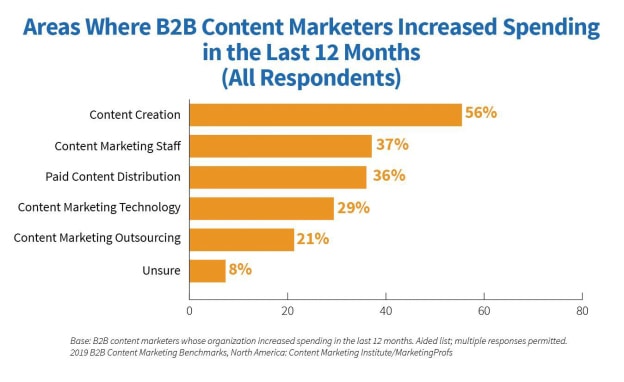
As you can see, content marketing takes up the biggest chunk of the budget in content marketing. And it’s no surprise why: high-quality content is essential to success in the pre-launch stage.
This content can be in the form of case studies, webinars, or eBooks.
In order to start creating content, you will be needing tools to assist you. Here are some good recommendations from marketing experts:
Wordpress: A content management system (CMS) that will help you easily create and manage your website’s content. For startups, this can be
Canva: A design tool that will help you easily create visuals for your website and social media accounts.
Hootsuite: A social media management tool that will help you easily schedule and publish content on social media
BuzzSumo: A content research tool that will help you easily find the most popular content on the web.
Contentful: A content management system (CMS) that will help you easily create, manage, and publish content on your website.
Once you have these tools ready, you can start creating high-quality content that is relevant to your target audience.
Early-Stage:
At this stage, it’s all about generating leads and growing your business. In order to do this, you need to create content that is targeted towards your audience’s needs.
Here are some ideas on how to create content for each stage of the buyer’s journey:
Awareness Stage:
- Helpful blog posts
- Informative infographics
- Engaging videos
- Problem-solving eBooks
Consideration Stage:
- Helpful guides
- Educational webinars
- insightful case studies
Decision Stage:
- Product demos
- Free trials
- Coupons and discounts
Blog posts: Blog posts are a great way to provide valuable information to your audience. They can be used to educate, entertain, or inspire your readers.
Videos: Videos are a great way to engage your audience. They can be used to show how your product or service works, or to tell a story about your brand.
Infographics: Infographics are a great way to visually communicate information. They can be used to explain complex concepts, or to showcase data in an easy-to-understand format.
Free trials: Free trials are a great way to let your audience try your product or service before they buy it. This can help you generate leads and conversions.
Repurposed content: Repurposing your content is a great way to get more mileage out of it. You can repurpose your blog posts into infographics, or your videos into blog posts.
Ebooks: Ebooks are a great way to provide valuable information to your audience. They can be used to educate, entertain, or inspire your readers.
Scaling:
At this stage, it’s all about tracking the growth of your business. You need to track your KPIs properly in order to make sure that your business is on track.
You will also need to use tools to help you track your KPIs effectively:
Google Analytics: A free tool that will help you track your website’s traffic and conversions.
KISSmetrics: A paid tool that will help you track your website’s traffic, conversions, and other key metrics.
Mixpanel: A paid tool that will help you track your mobile app’s key metrics.
Once you have these tools in place, you can start tracking your business’s growth and progress.
10 Examples of Successful Startups With Their Content Marketing Strategy
1. Airbnb
Airbnb is a startup that allows people to list, find, and rent vacation homes.
Airbnb’s content marketing strategy focuses on creating helpful and inspiring content for its target audience.
Some examples of their content include:
Blog posts about travel tips - AirBnb started a blog called "A travel guide by AirBnb" which provides helpful tips for its users.
Videos about people's experiences - Airbnb has a YouTube channel called "Stories from Airbnb" which features videos about people's experiences with the company.
The use of content marketing has helped AirBnb to become one of the most popular startups in the world.
2. Buffer
Buffer is a startup that provides a social media management platform for businesses and individuals.
Buffer’s content marketing strategy focuses on creating helpful and informative content for its target audience.
Some examples of their content include:
Blog posts about social media tips - Buffer has a blog called "The Science of Social Media" which provides helpful tips for its users.
Videos about the company and its products - Buffer has a YouTube channel called "Buffer Stories" which features videos about the company and its products.
3. Canva
Canva is a startup that provides an online platform for people to create visuals for their social media accounts.
Canva’s content marketing strategy focuses on creating helpful and inspiring content for its target audience.
Some examples of their content include:
Blog posts about design tips - Canva has a blog called "Design School" which provides helpful tips for its users.
Youtube Tutorials - Canva has a YouTube channel called "Canva Tutorials" which features helpful tutorials for its users.
4. WP-Engine
Considering that WP-Engine has huge competitors like Hubspot, WP-Engine has been working really hard in order to get their name out there. Their strategy is to partner up with other companies and publish content on their behalf. This way they are able to get in front of new audiences that they would have otherwise not reached.
5. Dropbox
When it comes to content marketing, one company that does it right is Dropbox. They focus on creating helpful content that educates their target audience on how to use their product.
How is Dropbox Marketing their Brand?
Since the company has grown to a large scale, they have been able to use their size in order to market their brand. They earn new leads through their referral program - for every new user that signs up, the current user gets rewarded with more storage space.
6. Scripted
Scripted is a startup that provides an online platform for businesses to find and hire freelance writers.
Scripted’s content marketing strategy focuses on improving their content, and they have been using podcasts, white papers, and webinars to generate new leads.
7. Salesforce
If you're not familiar with Salesforce, they are a CRM software company. When it comes to Salesforce's content marketing strategy, they focus on creating fun, yet informative content.
Salesforce has a blog called "The State of Marketing" which provides helpful tips and information for its readers.
They also created the first-ever stop-motion slideshare.
Lastly, they also display their customer's success stories on their blog in order to show potential customers what they are capable of.
8. SAP
SAP's mix of content marketing strategies include:
- Tweets
- Blogs posts
- LinkedIn status updates
- Posts on the SAP Community Network
- Radio ads
- Virtual events
- In-person events
- Outbound and responder follow-up calls
- Account Based Marketing
- Individual account meetings
According to Marketing Sherpa, their marketing strategy generated opportunities (MGO) equaled $3,675,000!
9. MobileMonkey
MobileMonkey is a startup that provides a platform for businesses to create chatbots for their social media accounts.
MobileMonkey creates a series of blog posts called MobileMonkey Growth Marketing Blog, where they write about topics such as:
- How to use chatbots for customer service
- How to use chatbots for lead generation
- What are the benefits of using chatbots?
This makes them one of the top companies to follow if you want to learn about chatbots and how to use them for your business.
10. Microsoft
Microsoft is a company that needs no introduction. They are a giant in the tech industry, and their content marketing strategy reflects that. They have a series of blogs called Microsoft On The Issues, where they write about topics such as:
- Cybersecurity
- The Future of Technology
- Artificial Intelligence
Microsoft is a company that is at the forefront of many new and emerging technologies, so their blog is a great resource for anyone who wants to stay up-to-date on the latest trends in the tech industry.
Frequently Asked Questions:
Is content marketing profitable?
Yes, content marketing can be very profitable for businesses. It can help them reach new audiences, generate leads, and even make sales.
Is content marketing in demand?
Yes, content marketing is definitely in demand. With the rise of digital marketing, more and more businesses are turning to content marketing in order to reach their target audiences.
How do you sell content marketing?
There are a few different ways that you can sell content marketing. One way is to offer it as a service to businesses. Another way is to create and sell products, such as e-books or online courses, that teach people how to do content marketing.
What is the content marketing cycle?
The content marketing cycle is the process that businesses go through in order to create and distribute content. It includes the following steps:
- Planning: This is where businesses decide what kind of content they want to create and why.
- Creating: This is the step where businesses actually create the content.
- Distributing: This is the step where businesses distribute the content to their target audience.
- Measuring: This is the step where businesses measure the results of their content marketing efforts.
- Adjusting: This is the step where businesses make changes to their content marketing strategy based on the results that they measured.
The content marketing cycle is an important part of any content marketing strategy, as it helps businesses to ensure that they are creating and distributing content that is effective and engaging for their target audience.
How to Properly Track Your Backlinks - A Beginners Guide
Considered a supreme ranking factor for search engine optimization, backlinks are basically inbound links that point back to your website from other websites.
Backlinko conducted a study revealing that the number of domains linking to a page was the most significant predictor of Google ranks.
Since the quality of your backlinks can make a huge impact on your website’s SEO, you need to keep track of them to ensure that they are helping and not hindering your progress.
After all, according to Pearson's Law, “When performance is measured, performance improves. When performance is measured and reported back, the rate of improvement accelerates.”
So in order to keep track of your backlinks and ensure their efficacy, you need to use the right tools and methods.
Here’s a beginner's guide on how to properly track your backlinks.
What You Need to Track
To get started, you would need a master spreadsheet that contains all of the important things for your project.
Every spreadsheet should contain the following data:
Backlinks
Track all your backlinks no matter where they come from: PBN, Web 2.0, Profile Links, Social Bookmarks, Forum Profiles, etc. Detailed data should entail the following information:
When was the link placed?
This is the date when the backlink was created.
Anchor text
This is the phrase that you hyperlinked. It could be either your brand name, website name, target keyword, etc.
URL of the page where your link is placed
This is the URL of the page where your link is found. You can get this by hovering over the link and checking the URL that shows up on the bottom left part of your screen (on Chrome).
URL of your website
This is the URL that you're linking to.
Nofollow or follow?
A nofollow link is a link that does not pass any link equity/SEO value to the linked page. In other words, it doesn't help your linked page rank higher in search engine results pages.
Is the link indexed?
An index is a database that a search engine uses to store all the website pages it has crawled and intends to include in its search results. When a backlink is indexed, it means that the link can now be seen by the search engine.
When was the link last checked?
This is the date when you last checked if the link is still there.
Link status
The link status can either be “live” or “dead.” A live link is a working link that directs users to your website when clicked. On the other hand, a dead link is a link that no longer works and leads to a 404 error page.
Anchor Text Distribution
When it comes to backlinks, anchor text distribution is an important thing to keep in mind.
Anchor text is the phrase that you hyperlink. It could be either your brand name, website name, target keyword, etc.
The distribution of your anchor text should look natural. That means that you shouldn’t have too many exact match keywords or branded anchor text.
To check the distribution of your anchor text, you can use a tool like Ahrefs.
Simply enter your domain into the search bar and click “Explore.”
You will then be directed to a page that contains all the backlinks pointing to your website. Scroll down to the “Anchors” section to see the distribution of your anchor text.
This will help you identify over-optimized anchor texts, so you can take action accordingly.
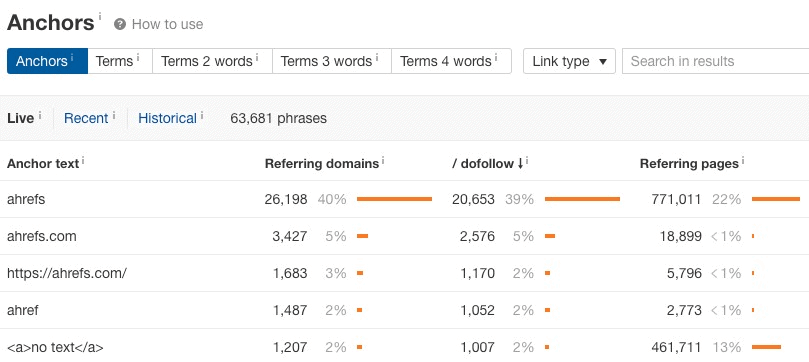
Rankings
Your rankings are the position of your website for a particular keyword in SERPs.
Ideally, you want your website to rank as high as possible for your target keywords. The higher your website ranks, the more organic traffic you will get.
To track your rankings, you can use a tool like Ahrefs Rank Tracker.
To use Ahrefs Rank Tracker, simply enter your domain and target keyword into the search bar and click “Add to tracking.”
You will then be directed to a page that contains your ranking data.

A List of Keywords and Which Pages Target Them
It is a spreadsheet that contains all the keywords that you are targeting, as well as the pages on your website that are targeting those keywords.
This spreadsheet is important because it allows you to track your progress and see which keywords are working and which ones aren’t.
To create this spreadsheet, simply create a new sheet in Google Sheets and add the following columns:
- Keyword
- URL
- Rank
- Change
- Volume
- CPC
You can then fill in the data for each keyword.
5 Tools You Can Use To Track Backlinks
.... Now to Track Your Backlinks!
Now that you know what data you need to track, it’s time to learn how to do it properly. Here are a few methods that you can use:
1. Google Search Console
Google Search Console is a free platform offered by Google that allows you to track your website’s organic traffic and performance in SERPs. It also contains other features such as the ability to submit your sitemap and check for 404 errors.
To use Google Search Console to track your backlinks, simply go to “Links” under “Search Traffic” on the left sidebar.
You will then be directed to a page that contains all the links that Google has found pointing to your website.
2. Ahrefs Site Explorer
Ahrefs is one of the most popular SEO tools available on the market. It contains a lot of features such as keyword research, site audits, and backlink analysis.
To use Ahrefs Site Explorer to track your backlinks, simply enter your domain into the search bar and click “Explore.”
You will then be directed to a page that contains all the backlinks pointing to your website.
3. Majestic
Majestic is another popular SEO tool that offers similar features to Ahrefs. It also has a feature called “Site Explorer” which allows you to track your backlinks.
To use Majestic to track your backlinks, simply enter your domain into the search bar and click “Search.”
You will then be directed to a page that contains all the backlinks pointing to your website.
![]()
4. Moz Link Explorer
Moz is another popular SEO tool that offers a feature called “Link Explorer” which allows you to track your backlinks.
To use Moz Link Explorer to track your backlinks, simply enter your domain into the search bar and click “Search.”
You will then be directed to a page that contains all the backlinks pointing to your website.
![]()
5. Monitor Backlinks
Monitor Backlinks is a tool that allows you to track your backlinks, as well as the backlinks of your competitors. It also offers other features such as link building and keyword research.
To use Monitor Backlinks to track your backlinks, simply sign up for a free account and add your website.
You will then be directed to your dashboard, where you can see all the backlinks pointing to your website.
![]()
These are just a few of the many tools that you can use to track your backlinks. Choose the one that you feel is best for you and start tracking your progress today!
The Benefits of Tracking Your Backlinks
There are manybenefits to tracking your backlinks, such as:
- You can see which links are working and which ones are not effective - which ones are healthy links, and which ones are toxic.
- You can track your progress over time and see how your backlink profile is changing.
- You can find new opportunities for link building.
- You can see which links are most valuable to your website and focus on acquiring more of them.
- You can avoid being penalized by Google for having low-quality backlinks.
By tracking your backlinks, you can make sure that your link-building efforts are paying off.
Frequently Asked Questions
Can you track backlinks in Google Analytics?
In Google Analytics, backlinks are referred to as “referrals.” To view your referral traffic, simply go to “Acquisition” -> “All Traffic” -> “Referrals.”
You can then check your backlinks using the referral report.
Why are backlinks important for SEO?
Backlinks are important for SEO because they help search engines determine the quality of a website. Websites with high-quality backlinks are more likely to rank higher in SERPs.
In fact, a majority of SEOs (58%) believe that backlinks have a profound effect on search engine rankings. Even more, over half of SEO experts believe that the number and quality of links pointing to a website affect its search engine rankings!
If you're not tracking your backlinks, you're missing out on valuable insights about your website's SEO. Not to mention, you could be risking a Google penalty for having low-quality backlinks.
Tracking your backlinks is an essential part of any good SEO strategy. When done right, it can help you improve your website's ranking, build more high-quality links, and avoid being penalized by Google.
Over to you - what are some ways you track your backlinks? Let us know in the comments!
How to Find a Good SEO Consultant
As your business grows, you will face new challenges that you may not be able to handle on your own. At this point, it is time to look for an SEO consultant who can help you with the necessary optimization for your website.
According to a survey of small business owners,over 65% had dealt with more than one SEO service provider. On average, small businesses spend around $500 per month on their SEO services.
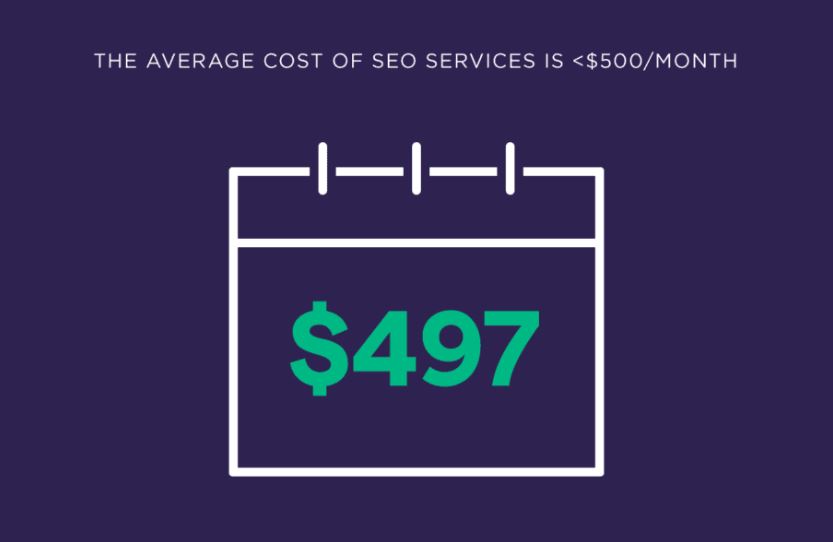
Source: https://backlinko.com/seo-services-statistics
This is not surprising given the ever-changing landscape of SEO. As a result, finding the right consultant can be a difficult and time-consuming task, which leads you to consider the option of hiring an SEO consultant.
What is an SEO consultant?
An SEO consultant (or agency) is a company or individual that provides expert advice and SEO services.
The role of an SEO consultant is to help you improve your website’s ranking in search engine results pages (SERPs), with the ultimate goal of driving more traffic to your site.
SEO consultants are either hired by an organization to provide in-house services or work with a number of clients as part of an agency.
In-house SEO consultants are usually involved in all aspects of website optimization, from link building and content creation to keyword research and analysis.
SEO agencies, on the other hand, tend to specialize in one or two areas of SEO and usually outsource the rest.
An SEO Consultant usually has the following skillset in order to perform their duties:
- Competitor analysis
- On-page optimization
- Off-page optimization
- Link building
- Keyword research
- Content creation
- Pay per click
- Updated with the latest SEO algorithm updates
- Good understanding of Google penalties
Most importantly, an experienced SEO consultant should be able to interpret data and use it to improve a website’s ranking. They usually use competitive tools such as Ahrefs, Majestic, and Moz to keep track of a website’s progress.
Types of SEO Consultants:
There are three main types of SEO consultants: generalists, specialists, and freelancers.
1) Generalists are usually agencies that offer a wide range of services, from link building to content creation. They usually have a team of SEO experts who can handle different aspects of optimization.
2) Specialists are individuals or agencies that focus on one specific area of SEO. For example, there are link-building specialists, keyword research specialists, and on-page optimization specialists.
3) Freelancers are self-employed individuals who usually work with a number of clients. They are often generalists who can handle different aspects of SEO.
Why hire an SEO consultant?
There are many reasons why you might want to hire an SEO consultant.
If you’re not happy with your website’s current position in SERPs, an SEO consultant can help you identify the problem and devise a plan to improve your ranking.
If you’re launching a new website, an SEO consultant can help you ensure that your site is properly optimized from the start. And if you’re planning a redesign of your existing website, an SEO consultant can help you avoid common mistakes that could hurt your ranking.
An SEO consultant can help you keep up with the latest trends and changes in the SEO industry. With an experienced consultant on your side, you can be sure that your website is always up-to-date with the latest best practices.
Another common reason is that businesses want to focus on their core competencies and leave the SEO to experts. This allows businesses to stay focused on what they do best and outsource the rest.
You can do SEO yourself, however, it takes a lot of time and effort to do it correctly. In addition, you need to have a good understanding of how SEO works and how to implement it effectively.
If you don’t have the time or expertise to do SEO yourself, then hiring an SEO consultant is a good option.
On top of these reasons, ROI-wise, having an effective SEO generates more revenue than all other marketing channels combined, averaging 44% of all revenue across all industries.
https://videos.brightedge.com/research-report/BrightEdge_ChannelReport2019_FINAL.pdf
Lastly, an SEO consultant can save you a lot of time and effort. Optimizing your website for search engines is a complex and time-consuming task. Hiring an experienced consultant means that you can focus on running your business while someone else takes care of your website’s SEO.
What does an SEO consultant do?
The specific tasks that an SEO consultant performs will depend on the needs of their client. However, there are some common activities that most consultants undertake:
1. Conducting keyword research.
This involves finding and analyzing the keywords that potential customers are using to search for products or services like yours. On top of this, they usually plan out a calendar of keyword-targeted content to help improve your website’s ranking for these terms.
2. Optimizing website content.
Once the target keywords have been identified, the consultant will help you optimize your website’s title tags, metatags, headings, and other elements to make your site more visible to search engines.
They will help you optimize your website for on-page SEO factors like keyword density, anchor text, and internal linking. On the other hand, if you need help with off-page SEO, the consultant can assist you with link building and social media marketing.
They should be able to provide your high-quality links from authority websites, which will help improve your website’s link popularity and search engine rankings.
3. Analyzing website traffic.
The consultant will use Google Analytics and other tools to track your website’s traffic and performance in SERPs. They will then provide you with detailed reports on your progress and make recommendations for further improvements.
4. Providing consulting and advice.
In addition to the above tasks, the consultant will also provide you with general advice and guidance on how to improve your website’s SEO. This may include recommendations on changes to your website’s design or structure, as well as suggestions for developing better content.
5. Measuring results.
Finally, the consultant will help you measure the results of your SEO efforts. They will track your website’s traffic and rankings over time and provide you with reports on your progress.
6. Providing ongoing support.
The consultant will typically provide you with monthly reports and be available to answer your questions and address any concerns you have.
How to Find a Good SEO Consultant
Not all SEO consultants are created equal. When choosing a consultant, it’s important to select someone who has experience in your industry and can offer a tailored solution for your specific needs.
Here are a few tips to help you find a good SEO consultant:
- Do your research: Before hiring a consultant, take some time to research the individual or agency. Look for online reviews and testimonials from previous clients.
- Ask for referrals: If you know someone who has used an SEO consultant in the past, ask for a referral.
- Set up a consultation: Once you’ve narrowed down your options, set up a consultation with each of the consultants you’re considering. This will give you an opportunity to get to know them and ask specific questions about their experience and approach.
- Get a proposal: Once you’ve selected a consultant, be sure to get a written proposal outlining the specific services they will provide and the costs involved.
- Check references: Before making your final decision, be sure to check references from past clients. This will give you an idea of what it’s like to work with the consultant and whether they’re likely to deliver on their promises.
In a nutshell, when it comes to choosing an SEO consultant, it’s important to select someone who has experience in your industry and can offer a tailored solution for your specific needs.
10 Questions to Ask When Hiring an SEO consultant
Now that you have an idea of what an SEO consultant does, you may be wondering how to select the right one for your needs. Here are 10 questions to ask when hiring an SEO consultant:
1. What is your approach to SEO?
By asking this question, you’ll get an idea of the consultant’s philosophy and approach to SEO. This will help you determine whether they’re a good fit for your needs.
2. What is your experience in my industry?
It’s important to select a consultant who has experience in your industry. This way, they’ll be familiar with the unique challenges and opportunities you face.
3. What is your experience with my type of business?
In addition to industry experience, it’s also important to select a consultant who has experience working with businesses of your size and type. This way, they’ll be familiar with the specific challenges and needs you face.
4. What is your track record of success?
When it comes to SEO, results are everything. Be sure to ask the consultant about their track record of success and request case studies or examples of their work.
5. What services do you offer?
Not all consultants offer the same services. Be sure to ask about the specific services the consultant offers and whether they’re a good fit for your needs.
6. What are your rates?
SEO consulting rates can vary widely, so be sure to ask about the cost of services upfront. In addition, be sure to ask about any additional costs or fees that may be involved.
7. What is your timeline for results?
SEO is a long-term strategy, so don’t expect overnight results. However, it’s important to have an idea of the consultant’s timeline for seeing results. This will help you set expectations and plan accordingly.
8. What are the risks and potential downsides of working with you?
No SEO strategy is without risk. Be sure to ask the consultant about the potential risks and downsides of working with them. This will help you weigh the pros and cons of their services.
9. What are your terms of service?
Before signing on with a consultant, be sure to review their terms of service. This will help you understand the scope of their services and your rights as a client.
10. Do you have any references I can contact?
Before making your final decision, be sure to ask the consultant for references from past clients. This will give you an idea of what it’s like to work with the consultant and whether they’re likely to deliver on their promises.
Frequently Asked Questions:
Are SEO services worth it?
The short answer is yes. SEO services can improve your visibility in search engine results, helping you to reach more customers and grow your business.
Depending on your metrics, the ROI of SEO can vary. However, even a small improvement in your search engine ranking can result in a significant increase in traffic and leads.
According to data, over 50% of traffic goes to the first result in Google, and 75% of users never scroll past the first page. So, even a small improvement in your ranking can have a big impact on your traffic levels.
How many hours should my SEO consultant spend?
This depends on the scope of your project and the size of your website. Generally speaking, most SEO consultants will spend 10-20 hours per week on a small to a medium-sized website, and 20-40 hours per week on a large website.
Keep in mind that these are just averages, and your consultant may need to spend more or less time depending on the specifics of your project.
How much do SEO consultants make?
In 2022, the average salary for an SEO consultant in the United States is around 60,000 a year, which is around $28 an hour. However, this number can vary widely depending on experience, location, and other factors.
The following are the cities with the highest average salary for an SEO Consultant:
https://www.ziprecruiter.com/Salaries/SEO-Consultant-Salary
How do I use SEO to grow my business?
SEO leads to business growth due to a number of factors:
It can help you reach your target audience.
SEO doesn't only help your audience lead to your website, but a detailed SEO campaign, will help you target the right kind of audience for your products and services.
An SEO will conduct keyword research that will allow you to identify the words and phrases your target market is searching for when they're looking for businesses like yours.
For example, if you are selling cars, an experienced SEO will target keywords like "buy a car" or "looking for a car dealer near me."
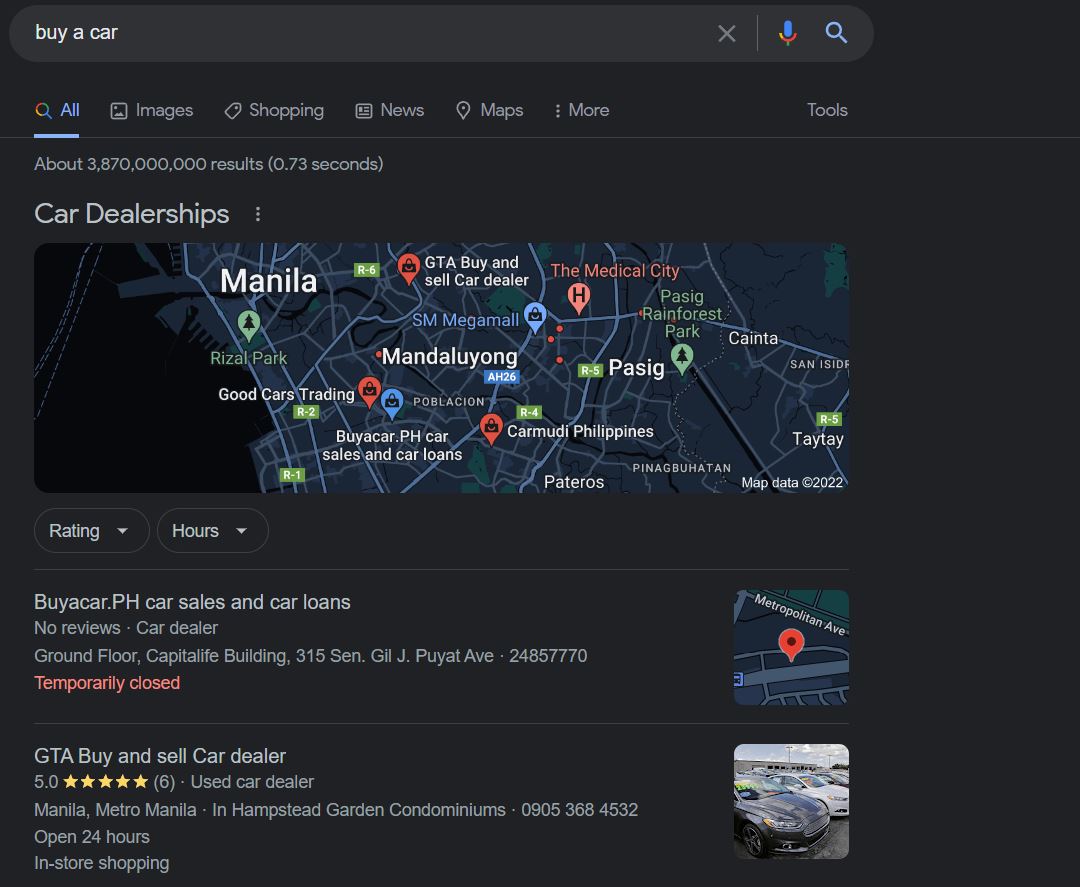
SEO helps build qualified leads
SEO is an inbound marketing strategy, which means it helps you attract customers rather than interrupt them with ads. And, since SEO leads are already interested in what you have to offer, they're more likely to become paying customers.
Leads that you earned through SEO have 14.6 close rates, compared to other traditional marketing methods averaging 1.7 close rates.
It can help you improve your brand awareness and build trust.
The higher you rank in search engine results, the more visible your brand becomes. And the more visible your brand is, the more likely people are to trust it.
Improved brand awareness and trust can lead to more website visitors, social media followers, and customers.
It can help you generate more revenue.
More website visitors and leads can lead to more sales and revenue for your business. In fact, businesses that use SEO grow at a rate of 20% faster than businesses that don't.
SEO helps you beat your competition.
If your competitors are using SEO and you're not, they're likely to rank higher than you in search engine results. This means they'll get more website visitors, leads, and customers—while you fall behind.
SEO is a long-term strategy and provides long-term value.
Unlike some marketing strategies, SEO is not a short-term fix. It takes time to see results. However, once you do start seeing results, they tend to be long-lasting. This makes SEO a great investment for your business.
SEO is an ever-changing landscape, which means there's always something new to learn.
The world of SEO is constantly changing as Google updates its algorithm and new technologies emerge. This can be a challenge for businesses that are trying to keep up with the latest trends. However, it also provides an opportunity for businesses to stay ahead of their competitors by investing in SEO.
SEO is a complex and ever-changing field, but it is an essential part of any business's growth strategy. An experienced SEO consultant can help you navigate the landscape and make the most of this powerful tool.
Getting an SEO consultant is an investment
With over a billion searches daily, if you're not using SEO to grow your business, you're missing out on an essential piece of the puzzle.
SEO will help you reach your target audience, build qualified leads, improve brand awareness and trust, generate more revenue, and beat your competition.
While it takes time to see results, the long-term value of SEO makes it a worthwhile investment for any business.
This means that hiring an SEO consultant can be a great way to boost your business growth. Partnering with an SEO consultant can help you achieve all of the benefits of SEO while freeing up your time to focus on other aspects of your business.
101 Actionable Link Building Tips
If you are tired of reading other SEO content without any actionable link building tips, then this post is for you.
I’m fairly honest, these 101 actionable link building tips guide is not complete
The good news:
This post will always keep updated.
So if you want to increase your domain authority, get more exposure and increase your rankings, check out this new link building guide:
1. Become a Content Contributor for Authority Websites
The problem with SEO community:
We are debating on a not-so-controversial topic: quality vs quantity in link building.
In essence, both of them are important.
But could that be possible?
While aiming to build high-quality backlinks, you are also targeting a higher amount of it.
Yes.
This is possible with becoming a regular columnist on authority sites.
Look at how Buffer and Sujan Patel Voila Nobert co-founder, gained from this content marketing strategy.
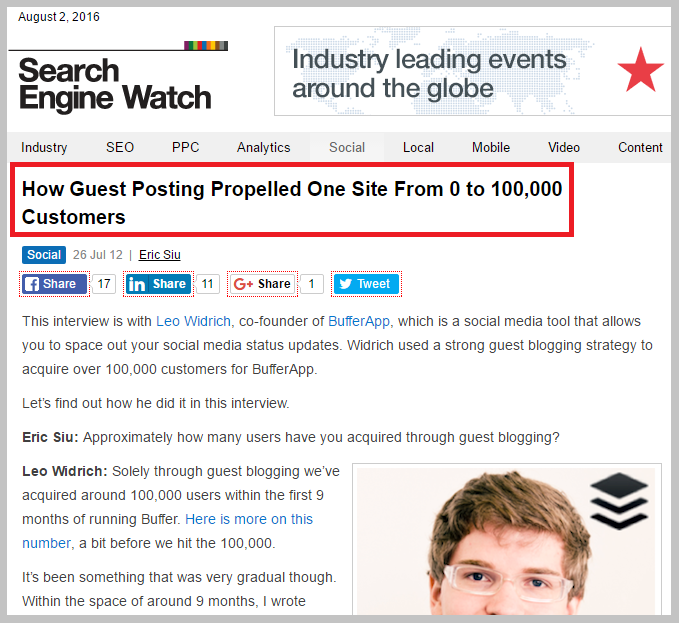
How can you start becoming a regular content contributor for top news-sites and blogs?
Watch this video below:
2. Get EDU Backlinks Using Scholarships
Backlinks from educational sites are high-authority type of links you won’t just get with simple outreach.
But let me tell you this:
There’s one way to acquire those powerful types of links.
Through scholarship link building.
Check out the following pages for higher education:


These are examples of edu backlinks you can get from creating a scholarship page targeted to a specific audience.
Start this technique with knowing who your market audience is.
For example, your website is in digital marketing industry, your audience would be marketing, entrepreneurship and advertising students.
Then go create your scholarship page and include the following information:
- Your applicants details (who?)
- Application process (how?)
- Where they can apply (how?) – through your website
- Deadline of application
- Review process of application
- Value of your scholarship
Once you’re done with that, find existing scholarship pages that list down relevant scholarship content - start with this Google search query, site:.edu inurl:scholarship “industry” to find them.
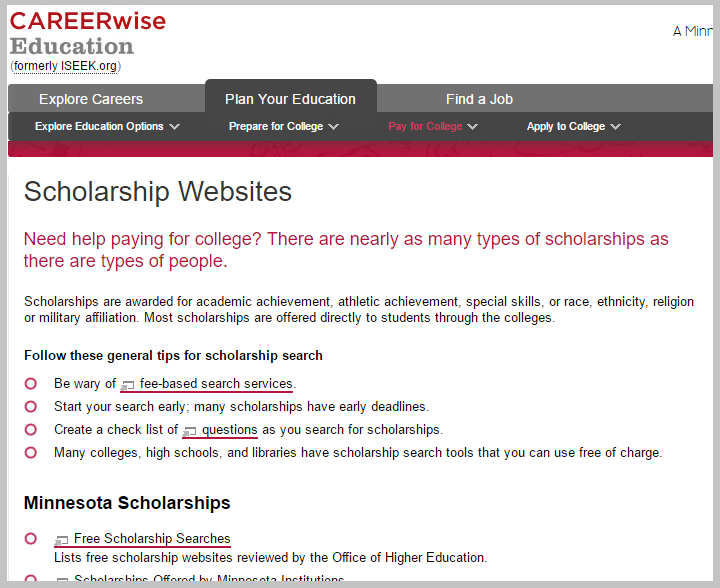
Populate your list by looking at other scholarship pages linking to a similar scholarship of yours. Semi-automate this by using Ahrefs.
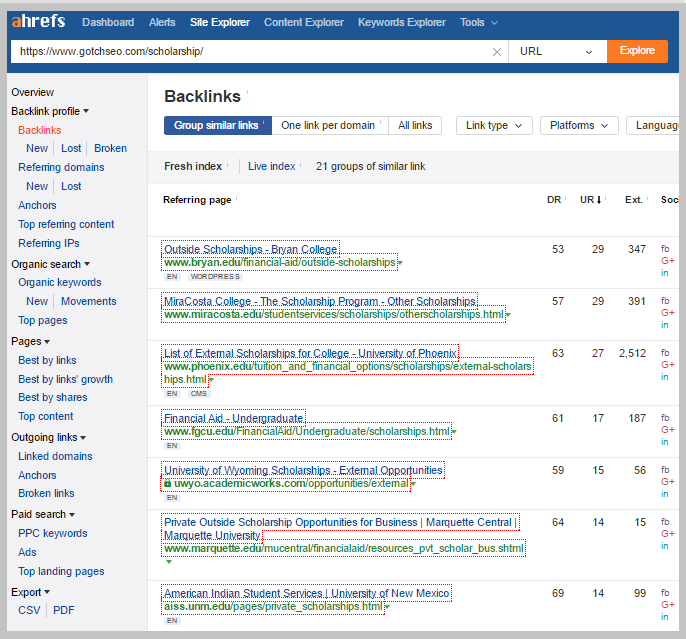
3. Curate Industry Scholarships
It’s fairly easy to say, create a scholarship page and build links.
But if your main hindrance on how to get backlinks to your site is your existing resources, it would be a bit harder on your part.
Why not create a list of available scholarships in your industry?
Take a look at this example:
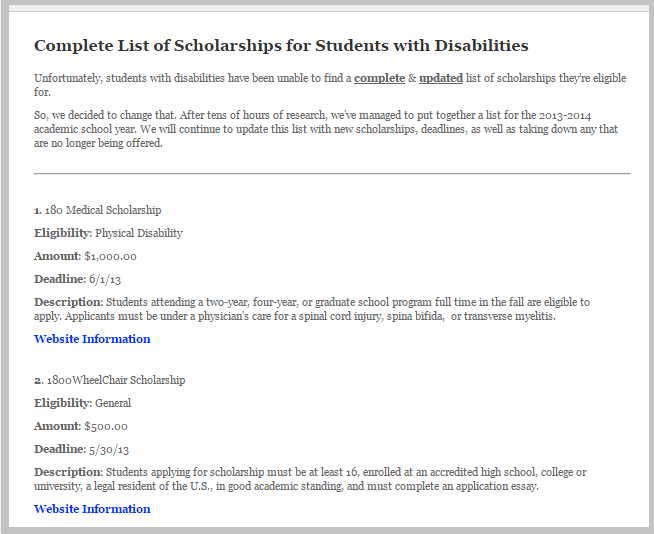
It took tens of hours to create a page without spending a penny.
Time and effort is what it takes.
What to do next:
Reach out to webmasters you’ve included your curated scholarship page, you’ll be surprised they are willing to add a link from their sites.
Next:
Reach out to .edu sites and ask if they can include your curated content in their existing scholarship page.
Don’t worry about getting .edu links now:
Start implementing the strategy above.
4. Get Links from Link Roundups
You start to worry that:
You can’t acquire links at the end of the week and just let your competitors outrank you in search.
What if I tell you that there’s an easy way to earn links simply by doing this untapped link building strategy
It’s called, link roundups.
Link roundups are regular posts published by bloggers to curate the best resources of any content format in their industry.
This link roundup from a fashion store.

Finding this type of content is very easy.
Type in any of the following keyphrases plus your content’s target keyword or topic:
- Blog hops
- Link ups

Make a list of these bloggers who regularly do roundups.
Get their contact emails and proceed to outreach.
To increase your chances of getting links using this approach, it is best to start identifying the specific day they published the article.
If they post on Thursday, schedule your outreach emails one or two days before – i.e. Tuesday.
It won’t make sense for them to add your link once they have finally decided what resources to add to their link round-ups.
The next time you publish your content, take a look at available industry link roundups and see if you can build links from them.
5. Co-author a Content Piece
A single content creator for one content asset is good.
But co-authorship is much better.
You can try reaching out to content partners who’d be interested to distribute your content (which most of the information is done by you) to their own blog and to blogs they’ve connected with.
It’s a win-win situation:
They get links from other blogs without spending much time in content writing.
You get links from blogs you even didn’t do outreach at all.
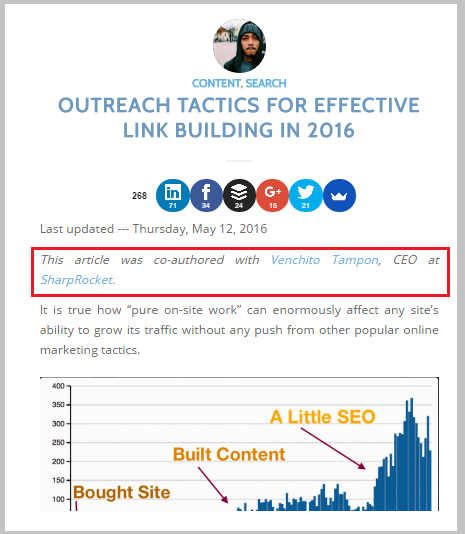
6. Publish Data-driven Content
Industry publishers, especially those in top-notch blogs, prefer to link to content pieces that have information from credible sources.
If you have collected data either from internal resources or from external (but only from credible sources just like this one from Backlinko), then don’t hesitate to publish it.

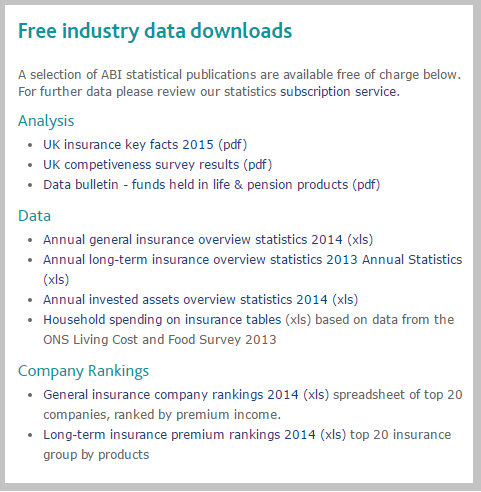
7. Contribute to Crowdsourced Content
It’s sad to see people being frustrated with links they’ve built in a month, when you know that they have the capacity to do so, especially if they have an authority built in place.
One type of link you can actually leverage on a consistent basis are crowdsourced content links
If people know about you on the web, they’ll start to send emails to you and ask simple questions.
I’m a fan of this link earning technique because you don’t spend too much time to get a single link.
Imagine:
If you can acquire at least four backlinks every month by spending only 20 minutes for this approach, then that’s a big return of investment not everyone can achieve.
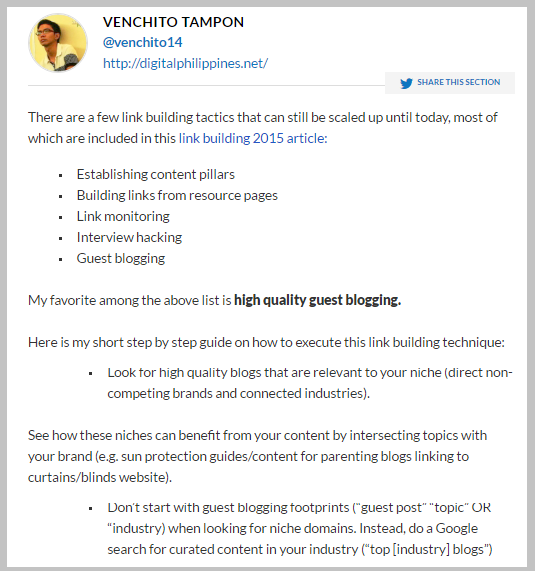
8. Create Free Tools
Tools are everywhere.
And if you can build a simple tool that helps certain group of people with their needs, then they’d likely return the favor in the form of links.
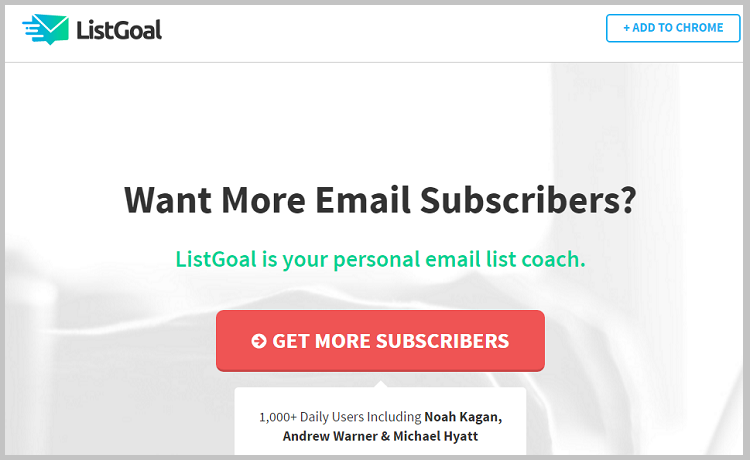
Bryan Harris from Videofruit had this awesome email list building tool that helps you to set goals and motivate to reach them in a specific time period.
If that helps me with the task and I have a blog, wouldn’t I be kind enough to link to his page?
After all, links main core principle is providing value to others.
9. Produce a Co-Marketed Visual Content
Believe me or not, without content promotion, most content assets will fail (source).
However, you can take most of the load off yourself when sharing your content to others.
Look for websites who’d published a visual content of any form (static, interactive, etc..) and get them as your distribution partners.
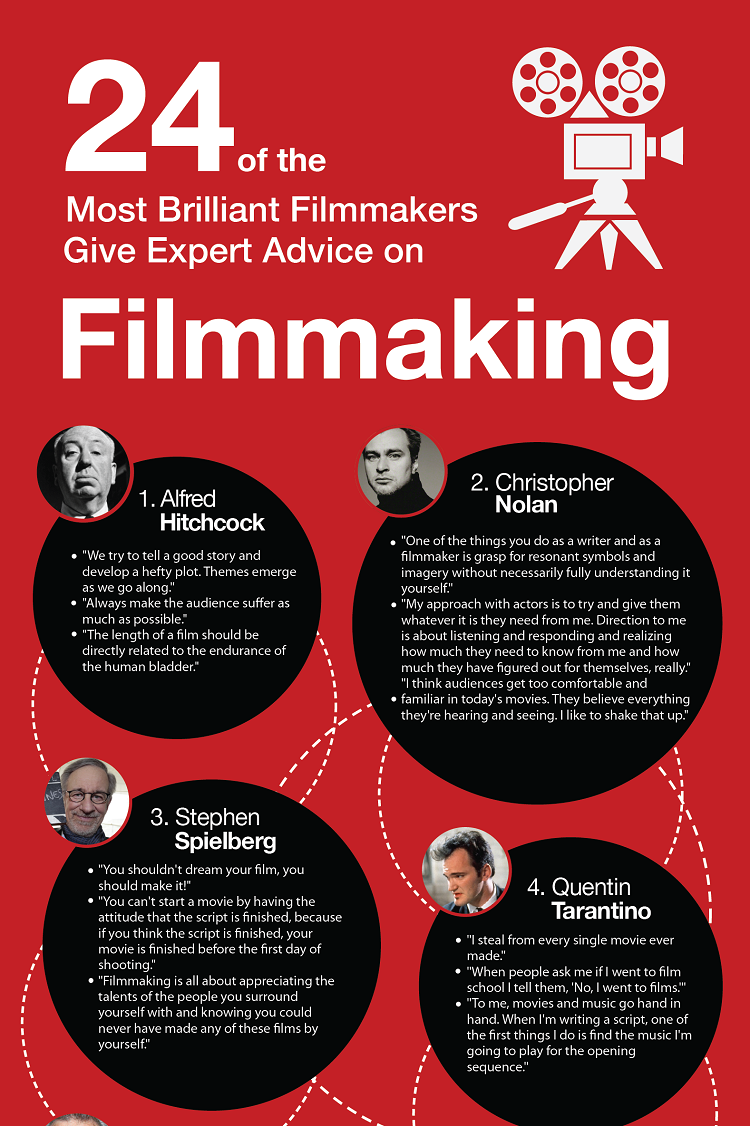
FilmSavvy makes it easy for other relevant sites to publish their content by including other sites’ logos in their visual content.
10. Find Link Opportunities on Twitter
Wouldn’t it be great if Twitter isn’t just used for social sharing?
While many blogger still don’t know, Twitter can also be a link prospecting tool.
If you are finding niche-specific bloggers to reach out to and build relationships with, try a Twitter search for “INDUSTRY” “bloggers”.

You’ll find another set of bloggers that aren’t included in your link prospecting sheet.
It gets better.
Because you won’t only get links from them, they will even share your content as well to their existing followers – which amplifies your content to acquire more links.
11. Build More Contextual Links
Those higher links up in the HTML code of a page seem to pass more ranking ability to those lower down (source from Moz).
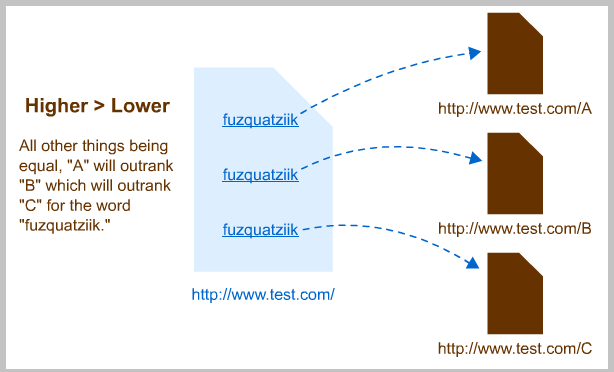
In a nutshell:
You can say contextual links from content above the fold is more valuable than blog comment links.
When you strategize your next link building campaign, try to leverage tactics that could give you contextual links from qualified domains.
12. Follow up Out-of-office Email Responses
Have you ever received an out-of-office email from a person you pitched to?
What did you do with it?
Say yes if you deleted it right away and moved on to another list.
Don’t regret if I say you that you take too much time to research for that domain and just wasted those minutes of research simply by not taking further action.
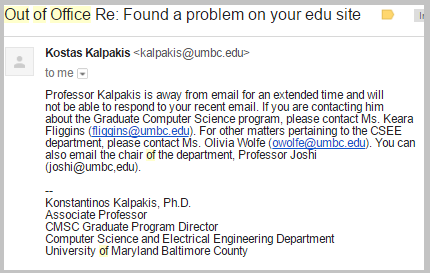
The next time you receive an email just like that,identify his date of return by reading his automated email.
![]()
Schedule an email message one day from the time he returns so your email won’t just be part of bunch of emails he’ll receive on the date of return.
13. Get Interviewed on Podcasts
Authority makes it easy to acquire links.
But what if you are still starting out in the industry?
No subscribers. No followers.
One way to increase your following and links in general is to get interviewed on podcasts.
Start with producing top-notch content on your blog – this will serve as your authority and social proof.
Then find reputable sites with regular podcasts in place.
Do Google searches for industry “podcasts” to get a bunch of them.
Once done, reach out to those mid-authority blogs then scale it up to higher level when you had a few podcasts interviews made already.
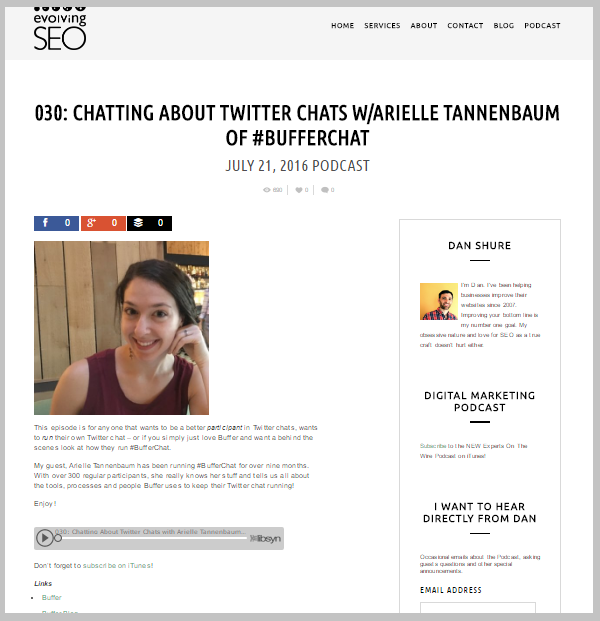
14. Give Student Discounts
If you own an eCommerce site, you can leverage your existing offers to acquire links from highly-valued edu websites.
One offer you can make is a discount code for students in colleges and universities.
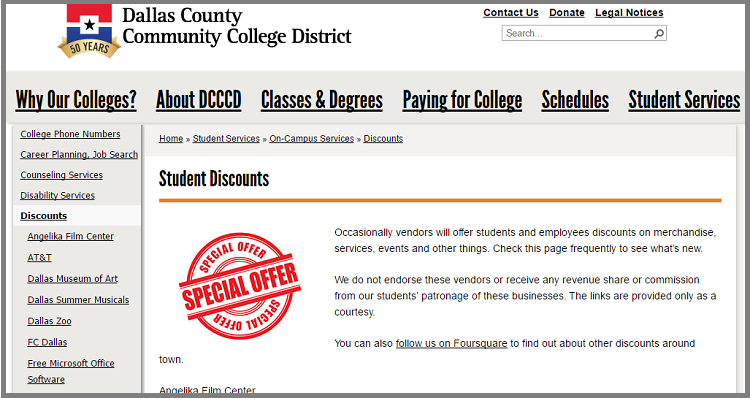
If you had this type of content, then maximize it for link acquisition.
Keep reading.
Start your link search with “keyword” “alumni discount” inurl:.edu.
You can replace key phrases with “student discount” OR “sponsors” page to find more link opportunities.
Make a list of them and use your discount code as your value proposition in outreach.
Here’s what the paragraph with a link looks like:

15. Offer Member Discounts
Discount offers are an untapped value most eCommerce sites aren’t using for their link building campaign.
If this is something resource curators are looking to add to their pages, it is definitely a goldmine to consider for links today.
Take a look at this example:
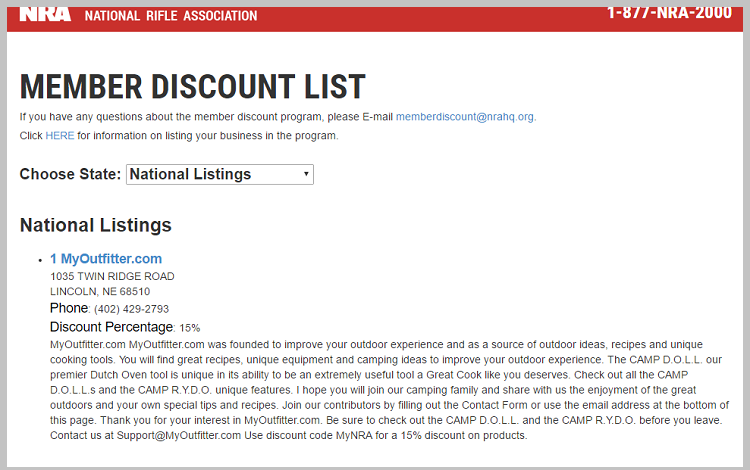
It is a member discount page hosted in an organizational site.
If there are hundreds of member discount pages just like that, then you’re missing out those high caliber backlink opportunities.
To find them:
Do Google searches for site:.org “member discount” “keyword”. You can replace search queries with “member discount list”, “member discount benefits” or “member discount program” to expand your link lists.
Then list them down in a sheet and prepare to do some outreach.
Trust me it is not too difficult to acquire links from those types of pages.
16. Provide Employee Discounts
We had students and member discounts as eCommerce link building tactics, shared above.
But there’s one thing still missing:
Employee discounts.
They are pretty much the same with other discounts. It’s just that they are only offered to employees of companies (self-explanatory).
Look for them using Google searches like “keyword” “employee discount”. Replace employee discounts with “employee discount program” and “employee discount list” to add more sites to your backlink list.
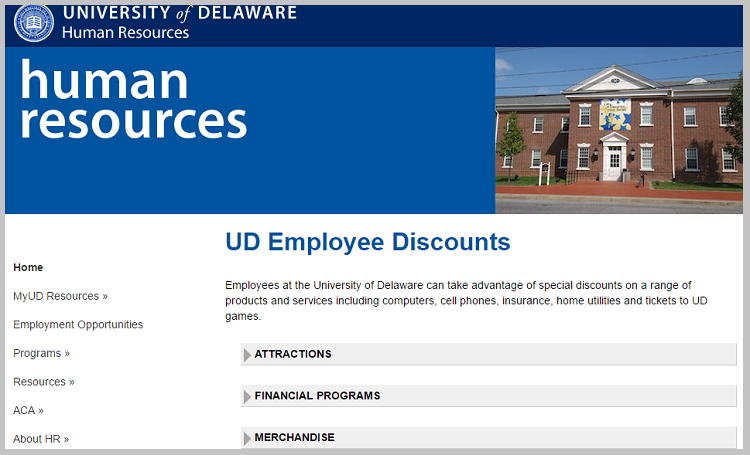
If this value is something that you offer as an eCommerce store, make this part of your link building plan.
17. Do Outreach to Bloggers with Recently Published Content
Knowing if bloggers had the capacity and availability to update his current page can make or break your chances of acquiring a link.
One type of these bloggers are those who recently published their posts related to yours.
They are more receptive to pitches particularly to link request emails given that they are still on the mode of adding more references and resources for their recent content.
How to find them?
Do a quick search for your target keyword/topic in Google.
Filter the results by all published date to only get pages that are indexed by Google within that time period.

Take note that Google will only provide indexed pages, so if bloggers didn’t allow Google to index their recent content pieces, it won’t appear in search results.
Imagine:
If you can find at least five bloggers every week who just published a similar post, and you got 15% conversion rate using this approach, you can acquire 3 additional links every month for every single piece.
If you need help with your campaign, you can check out our blogger outreach services.
18. Forward Your Email to the Right Person
There are different responses you can receive from your pitches:
One may be a failed message, automated reply of returning back from a vacation or a direct email saying you need to forward this to the right person.

When you receive this reply, forward your email to the right person, with a subject line: forward to [topic].
This tells your contact person that your email has been sent for that reason and not just another pitch they receive on a regular basis.
19. Participate in Offline Events
If you get invited to speak at conferences, seminars or any other offline events, take advantage of mentions acquired from speaking pages.
Mostly these mentions would be accompanied with links, but if not, ask the organizers if they could link to your own branded profile page - offer it as a page to link to.

If you want to start leveraging this branding technique, you can create profile pages in top community sites like Inbound.org and participate well to be noticed.
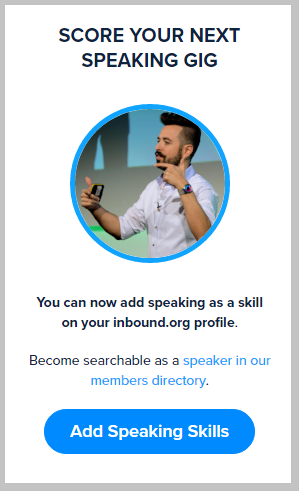
20. Do Reverse Guest Posting
Guest blogging is still an effective link building tactic for many bloggers, marketers and business owners today.
But there’s something that we missed with this SEO technique:
It is not just a one-way process.
You can actually do reverse guest posting on your blog and still acquire links.
Revere guest posting, as it defines itself, is inviting other bloggers in your industry to contribute a content for your blog.
There are three types of links you’ll get using this approach:
First, links from the guest blogger’s own sites referencing their work on your blog.
Second, links from the contributor’s network of bloggers.
Third, links from your own network referencing a top-notch content contributed by the guest blogger.
All of these three are very useful in helping your site to build its authority and branding in your niche.
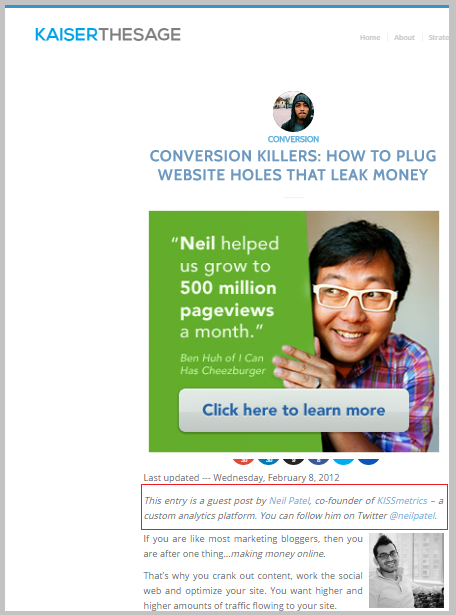
21. Schedule Outreach Emails
Most pitches that I got from bloggers came in either early morning or late afternoon – when I mostly available to respond to emails.
If you can time your emails just like that, you’ll get more responses that the usual, and potentially convert them into links.
Simple, isn’t it?
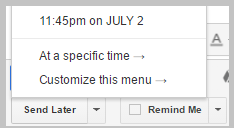
22. Transcribe Content to Other Formats
Besides visual content, there are also other ways you can take advantage of non-text content, i.e. audio and videos.
What to do?
Look for videos that can be transcribed into text.
You can go directly to Youtube or do a search for a specific topic.
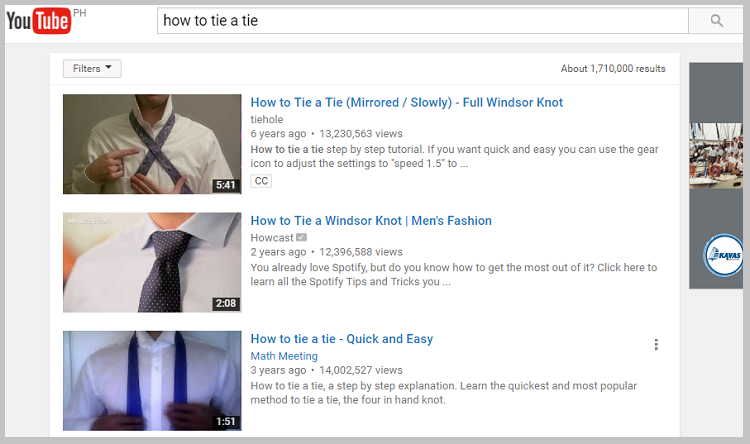
Check the website hosting the video if they had transcribed it already, as it won’t make sense to make a duplicate copy.
Upload your video to Speechpad (paid tool for video transcription). It would normally take 24 to 48 hours, choose whatever works for your schedule and budget.
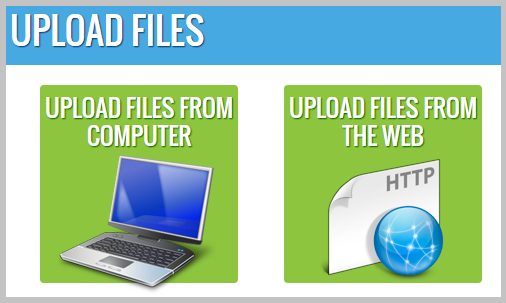
Once you have the transcribed content, check the article if it could be used as a guest post, i.e. running it through CopyScape if it is a duplicate of others.
A simple editing of the article – adding bullet points will do to make it a good content that can distributed to a particular blog.
23. Update Other People's Outdated Content
Learning from others is one factor that makes some content to be the most successful resource on the web.
Think about it:
If others’ content had acquired good results in terms of links and social shares, but lack in something like information, do you think you’d have a chance to achieve the same success?
Yes and no.
Updating other people’s content isn’t a guaranteed success for content-based link acquisition.
But:
If you will apply the following steps below, you are on your way to the right track:
Use outdated content finder to find old pages that need more updated and in-depth information.
Below are instructions on how you can use it properly.
Check each webpage in results and look at their numbers of referring domains (use Ahrefs Bulk Checker for this activity).
Grab content pieces with ~100 unique linking websites from your list.
Determine which of them are feasible to invest by asking yourself questions: a.) can you beat the content with more information (i.e. 100 tips > 38) b.) can you make information much better (i.e. more references/data/resources) c.) can you outrank them with better design? – are you willing to invest in the content to make it more appealing to readers?
If these questions have been answered, proceed to creating the content.
Finally, reach out to those linkers of outdated content and share your better content to them.
24. Find Blog Opportunities Using Reverse Image Search
Let’s face it:
Guest blogging is saturated.
If your only link prospecting method is following footprints of guest post by, write for us, then sooner or later, you’ll be running out of backlink prospects.
What other ways to prospect for guest blogs?
Use Reverse Image Search to find blogs that published content of any form on a similar topic.

Given that they have posted content assets from other bloggers, they’d also be receptive to pitches for guest blogging.
25. Use Linkclump to Ease Tab Opening
Productivity is very important in link prospecting, especially if you are targeting hundreds of backlink targets every week.
You have to maximize every minute of your time.
Raise your right hand if you are that person struggling with opening multiple tabs every time?
What most of you do when opening tabs is to right click on each links and click open in new tab.
But what if:
You have long list of domains to qualify, let’s say 300 or 400. Doing the normal tab opening takes too much time.
LinkClump solves that problem.
With this tool, you are able to semi-automate link opening with a simple right click plus drag combination.
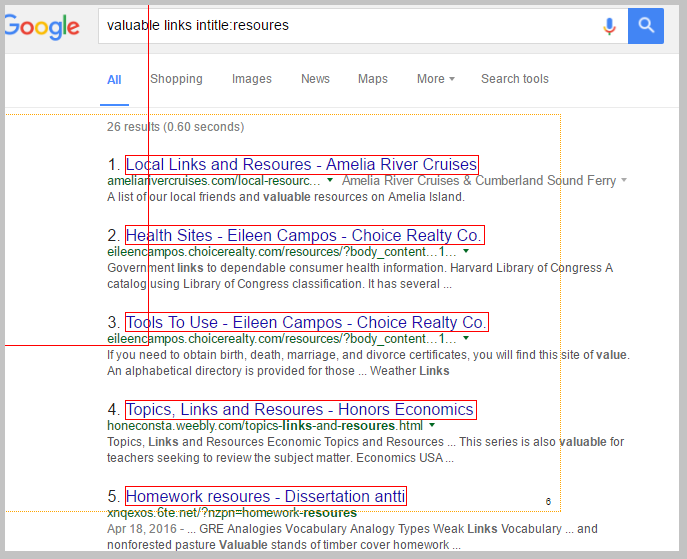
This saves a lot of your time.
26. Build Testimonial Links
Have you ever seen a page with three or more testimonials from customers, clients and influencers?
They are not just good for conversions, they are also a great channel for link acquisition.
Visit Google and search for “related keyword” “testimonials” site:.org to find them.
There might be some clutters in search results, so be sure to pick only pages that are related to your industry.
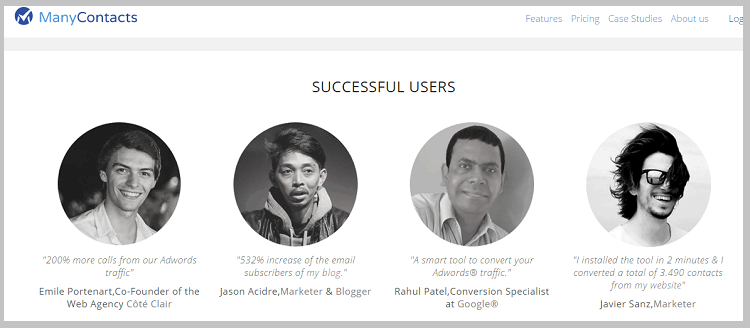
27. Use Stylist for Link Prospecting
Are there times that you have visited the same link prospect twice?
Several times, isn’t it?
Now you can avoid that to save you wasted time in link prospecting.
Install Stylist in your Chrome browser and insert this code in the settings.

Visited pages will be highlighted with your preferred color.
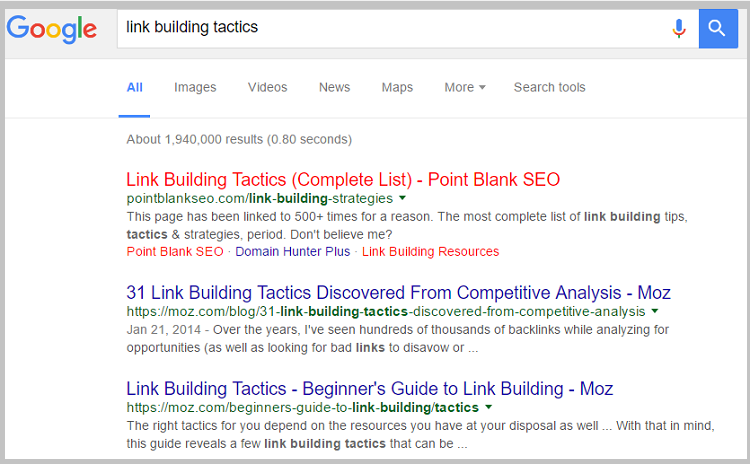
If you find this tip great, proceed to the next link prospecting strategy:
28. Insert Internal Links to Guest Posts
Have you submitted a guest post but found out later that it’s been rejected by the publisher?
You know that your content is of high-quality. So what could be the reason?
First, you didn’t pass the guest blogging guidelines.
Second, you didn’t even include an internal link to the publishers’ past content.
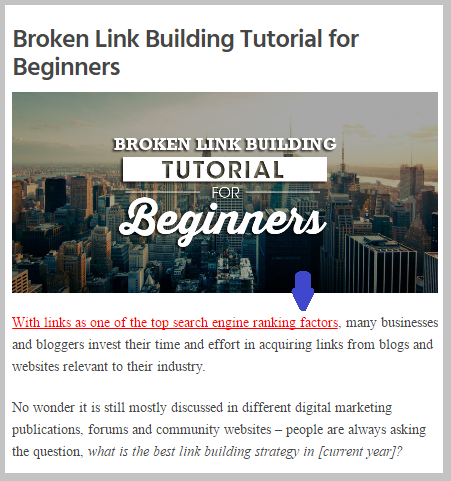
The next time you submit a guest post, make sure to include at least two internal links to the guest blog’s posts. This increases your chances of landing a placement for your guest content.
29. Do Broken Link Replacements
If you are not familiar with broken link building, it is simply a process of telling the webmaster of a certain site that there’s a broken link found in one of his pages, and suggesting that the content on your blog is a good replacement for their broken resource.
What makes the big difference between a link builder making 2 to 5% conversion rate from someone who only had 1% or less than success rate – both are using broken link building as their link building approach?
Value
The best way of doing broken link building is not just providing the webmaster with a list of broken resources, but make sure to give them replacements for those defunct links.
Don’t just give them your resource as a replacement; this should be your last value.
See the outreach email below. This was my response to the webmaster asking me what links I’ve found on their sites.
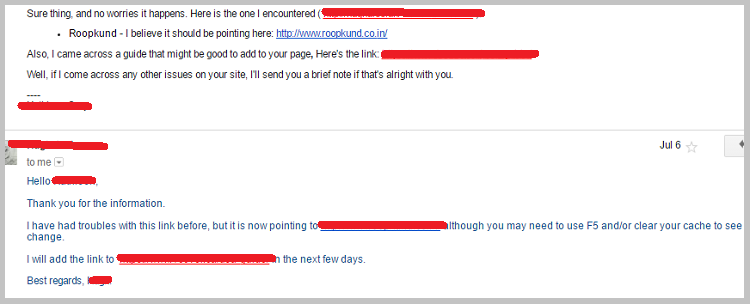
After giving them replacements and suggestions on how to fix their broken links, it’s time to let them see the resource of my client.
Much greater success than what you are traditionally doing.
Good news:
There are more link prospecting techniques below.
30. Find Networks to Build Links For You
Networks.
They’re not just useful for increasing influence, authority and following, they could be great sources of links too.
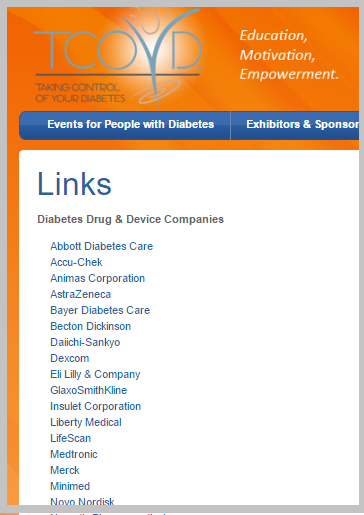
Ask your sales department or your client if you are in an agency if they have a list of manufacturers (for retailers), retailers (for manufacturers) and suppliers (for both).
See if they have a specific page for retailers/manufacturers/suppliers and reach out to them – ask if you can be included in that page.
31. Exchange Content With Others
If you are doing law firm SEO, you know that a simple guest post won’t work instantly.
Yes, those pitched bloggers can get free content but that’s it. They don’t have much value to get from you.
What’s more effective?
Find a non-competing blog to do a guest post for.
If you are in the legal industry and offers bankruptcy and any business law services, you may want to find legal sites with blogs that offer non-legal business specific services.
Pitch them and ask them if they are interested to distributing content to your blog and your content to theirs.
A quick exact process of content exchange. Simple yet very effective.
32. Use Tools to Identify Potential Penalties
You become aware of how important identification of quality in link building when Google released Penguin filters announcement way back in 2010.
Whether links comes from a pure outreach-based link building campaign or an organic one, determining the health score of a prospect website is very essential.
Use Ahrefs or SEMRush to determine if a prospect domain had a sudden traffic drop. If it appears to, it is a good indication of possible penalty. Move on to your next link prospect.
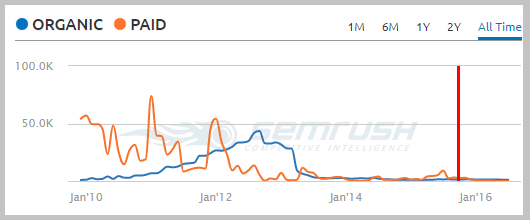
Be sure to see a steady growth of organic traffic on a website, not just for indicating possible penalties, but for getting constant flow of referral traffic from the said site.
Very effective.
But wait, there’s more.
Read the next link prospecting tip.
33. Use URL Profiler for Bulk Link Metrics
Have you been overwhelmed with many link prospects that you didn’t have a chance to check which ones are high quality?
If yes, here’s what you can do:
Upload your file of backlink targets to URL Profiler (make sure you download the software first).
Check the metrics that you prefer – Moz, Ahrefs or Majestic.
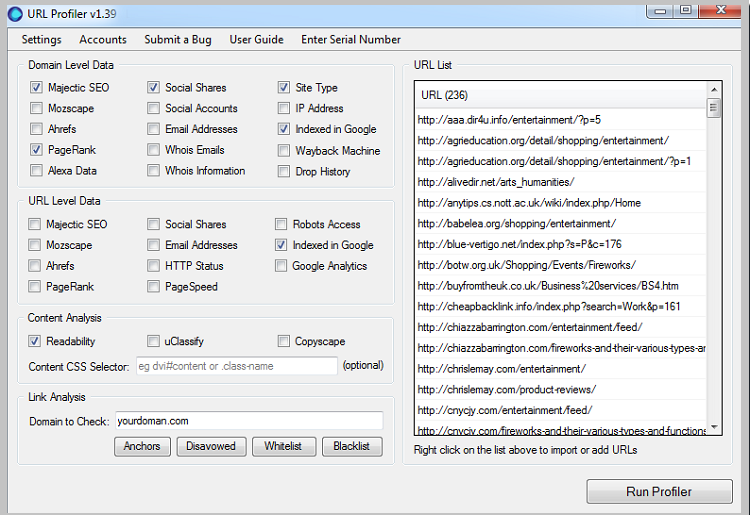
Then wait for a few minutes, and you’ll get a CSV file of target domains with their respective quality metrics.
What to do next:
Grab all websites or pages that pass your benchmarks – for example, choose sites with Domain Authority of 30 and above.
Target them for your outreach.
Continue reading:
There are outreach tips below to continue your link building process.
34. Identify Link Obtainability Rate
Responses from resource curators should be evaluated and help your outreach process.

When you get a reply just like that, you typically ignore it and move on to the next prospect in your list.
But take a closer look.
Resource pages with all external links pointing to a similar type of website should give a valuable insight then.
The next time you quality a resource page based on obtainability, you would want to look at the type of site all of these external links are pointing to.
If they tend to point to a .gov, .edu and other non-profit sites - ~80% or more and you don’t see any similar resource just like yours, that’s a good indication of low link obtainability score of that page.
Great observation, isn’t it?
35. Offer Premium Images to Bloggers
Non-stock photos and those without copyright tend to populate blogs – making it not appealing for old as well as to new readers.
Make sure:
You take advantage of this problem:
Offer premium bloggers to niche bloggers (may it be too close or not with relevance) – after all, links are still links built.
It would be also useful if you can create a page solely for that purpose.
Look at this:

Design should not be as elegant as possible – just make sure all premium mages are sorted and arrange properly.
36. Get Image-site Links for Competitive Industries
What do you do when you’re trying to build links in a lucrative yet challenging industries like payday loans and gambling?
You go to your last resort – Private Blog Networks.
I doubt if links built using that approach will last for decades.
Anyway, what you can do is to try different approaches to build links to those types of sites.
Check this out:
Ryan Stewart had this client in the gambling industry.
So what he did was to get image links from other linking pages for another client.
Sounds confusing? Look at the example below:

An image link built from a digital marketing blog – may not be as good with relevance, but can pretty draw some high link juice to your other client’s site.
37. Diversify Your Anchor Texts
Anchor text diversity is what makes a natural link profile different from others.
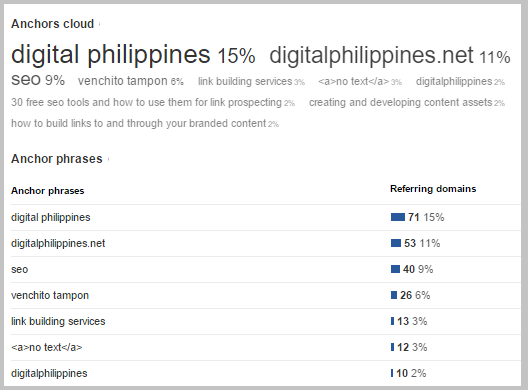
It is not normal to see an anchor text section of 90% pure commercial anchor texts. It’s inorganic.
But there is a simple and best way to diversify your anchor text.
That is:
Let bloggers and webmasters decide the proper anchor text to link to you.
Don’t be aggressive with exact match anchor texts. You can still rank for relevant terms when you add LSI terms to your linking pages – more to that later.
But for now:
Proceed to the next link building tip.
38. Reformat Other People's Content
Let’s admit:
It’s hard to create content especially if you don’t have any idea about the industry.
Does this sound familiar?
You may be experiencing this but there’s actually a secret to overcoming content creation headache.
You can start your content ideation process with identifying a few success content assets in your industry.
Use Buzzsumo to check top performing content.
Sort the results from highest to lowest social shares and/or linking pages.
Create a visual version of the content.
Make an infographic if the content is much more appealing to users where there is a visual version.
Next is to outreach all webmasters linking to the original version of the content.
Build more links.
Take a look at this:
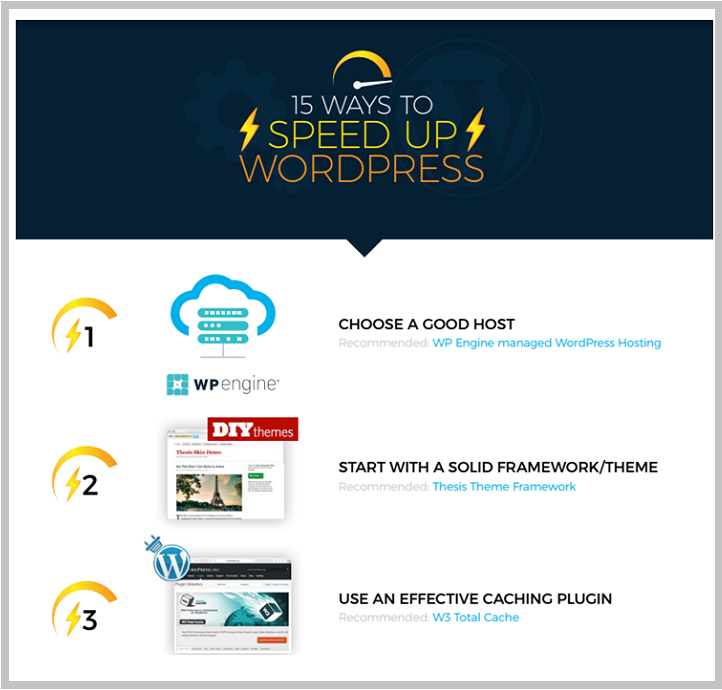
The team at Hosting Facts created a visual format of the popular post of Gregory Ciotti on how to speed up your wordpress.
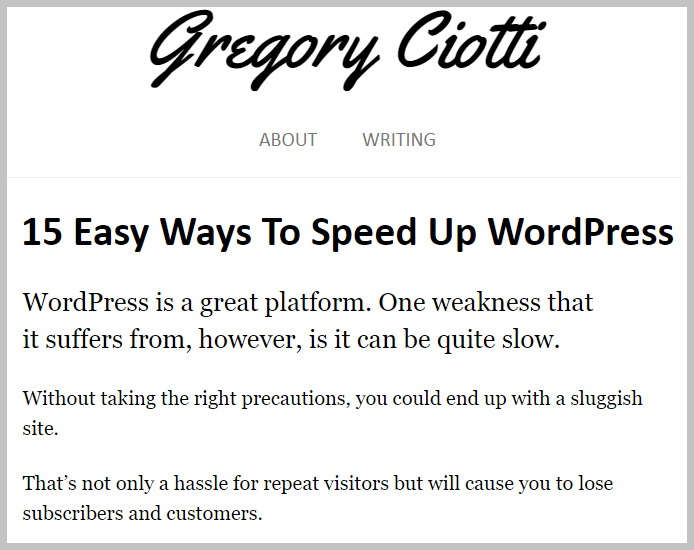
Because the original post had gained [number] of backlinks directly pointing to the page, there is a great indication of success in outreach.

Update: Tung Tran published an updated article on speed up your wordpress site.
You see:
39. Buy Content from Real Bloggers
In my experience, scaling link building is one hard truth.
It’s not easy.
One reason is that you don’t have a specific link building to execute right away.
But what if I tell you, you can scale link building without sacrificing the quality of links built.
Here’s how:
Reach out to bloggers with top notch content on their blogs.
Ask if they are doing freelance for others. If they say no, ask if they’d be interested to do so.
Buy content from them.
In return, keep the authorship of the content while your team maintains the outreach and content distribution campaigns.
Returns are awesome:
You get top-notch content and a link from an authority blog pointing to your site or to your client.
The blogger gets a link pointing to his blog, since you’ll be using his authorship. He also gets a writing fee for his content.
40. Use "Because" in your Outreach
Have you tried everything in outreach but are still getting the same results as before?
I know that feeling.
But do you know that there’s one thing you can do to increase your response and conversion rates in outreach?
It is acquiring the skill to magnify the value of your pitch.
When you emphasize the value of what you’re offering, it becomes easy to convince people to convince about your email and what you’re trying to tell them.
One way to do that is to start using because in outreach.
Brian Dean found that there’s an incremental positive effect in response/conversion rate when you use the word “because” in outreach.

It is a psychological effect that turns your request seems more legitimate.
In outreach, legit messages get better responses.
41. Provide Three Reasons in Follow Up
When you send emails to people, there are two things that happen:
Some people reply.
Others don’t.
With the 30% of webmasters who don’t respond to your pitch, do you know their reasons?
One way to know that is to send them three reasons of non-linking in your follow-up emails.
See this image below:
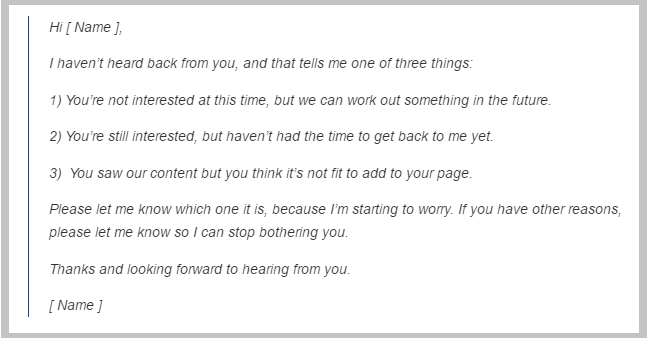
Webmasters only have to choose one among these reasons.
So what do we usually get from this approach?


These types of emails are better than receiving none. Not knowing the reasons gives you a blurry idea of what to do next.
With your next follow-up outreach campaigns, test this strategy and see their answers for yourself.
42. Use Email Hunter
There are different aspects in link building that consumes so much time – which you can actually delegate to someone else.
Like finding emails.
If you take each one link prospect and look for their corresponding contact emails, you could have spent hours doing that.
And if you don’t have a team to help you with email hunting, it’s obviously a time wasted on your part.
But don’t worry.
There’s a simple way to get things done.
You can use EmailHunter to semi-automate this data mining process.
You can generate emails available on each website prospected by clicking on Google Chrome tool button.
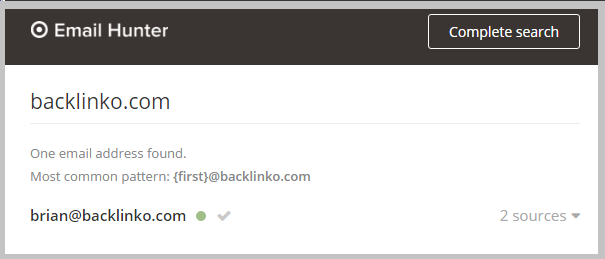
Easy.
Then after, what you need to do is to choose your preferred email.
43. Find Direct Email In Resource Pages
The biggest outreach mistake you can do is to totally depend on your email hunting tools.
Remember:
These link building tools aren’t perfect and won’t give you assurance of higher response and link acquisition rates.
When you encounter a prospect page, let’s say a resource page, what you normally do is check the contact us page and direct your pitch.
You forget something:
Those resource pages that you target have direct email addresses included in the top or below sections of the page.
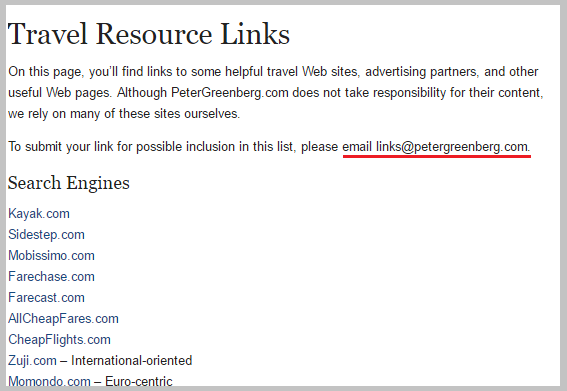
The next time you find contact emails, skim the page from top to bottom and address your pitch to the right contact email.
44. Avoid Industry Jargons
Emails should be as straightforward and simple as possible.
Take note:
Not all webmasters and bloggers know about SEO.
And even if they do, they get alarmed easily with SEO concerns, one reason why we don’t usually get a link from them.
Try to avoid saying link to this resource or content.
You can use words like cite, reference or share (but share mostly implies social share).
Use your words carefully.
45. Associate Two Resources in BLB
When recommending a resource to be included in a resource page, it’s fairly common to see a link builder just providing his own content alone.
That’s not to say it’s a bad practice.
However:
You can still improve the conversion rate by recommending a secondary resource.
Your recommended secondary resource in your vertical can help lower the commercial intent to the webmaster.
The advantage?
It can increase your chances of getting the resource link to your content.
46. Tell Your Content Value for Sponsored Posts
If you’ve been blogging for years, you know how saturated some industries are.
A few examples are finance, mommy and coupon verticals.
Almost half of blogs in those niches won’t provide you a link for free.
With that, what do you do?
Move on and prospect another list of domains?
No.
One way to counteract their responses of asking you for sponsored post fee is to tell them this value:
The price of your content
It’s a psychology effect that can increase your chances of placing your guest post on their blog.
If your writing is valued at $100 to $150 per post, you can mention that in your response plus the traffic that type of content can generate for their sites.
Also, a simple question just like this would help you a lot as well:
Is there any way you’d consider waiving the sponsored post fee?
Most kind bloggers will prefer not to charge you for a post if they’ve found your content more valuable than other guest bloggers pitching them.
47. Find More Prospects from Broken Pages
One biggest problem of link builders:
Running out of link prospects.
If you are that person, especially if you are working on a broken link building campaign, one way to expand your link lists is to look at your previous campaign.
See broken links you’ve suggested to your past potential linkers.
Plug them in Ahrefs and determine if they are highly linkable by resource curators.

The best in this strategy?
You’ll find hundreds of qualified prospects that you won’t find simply using Google search.
48. Check Top Pages of Broken Content
Have you come across a broken link?
Don’t just add it to your spreadsheet.
See if it could be a channel of multiple link opportunities.
Plug broken websites into Ahrefs to find their top pages.
Sort from highest to lowest root domains.
Go to Wayback Machine and check what those pages are.
Reproduce the content with more in-depth information (10x content).
Once done, reach out to webmasters linking to that dead page and tell them about the broken link and your 10x content.
Because they had history of linking and yours is a better content, there’ll be a guaranteed success.
But wait there’s more:
49. Wikipedia Content Recreation
Ever find a dead Wikipedia resource?
If yes, use that to your own advantage.
How?
Find a Wikipedia page in your industry that is outdated and/or requires additional information. You’re your research process with a simple Google search for "This article has multiple issues" + "topic keyword" site:wikipedia.org or use WikiGrabber.
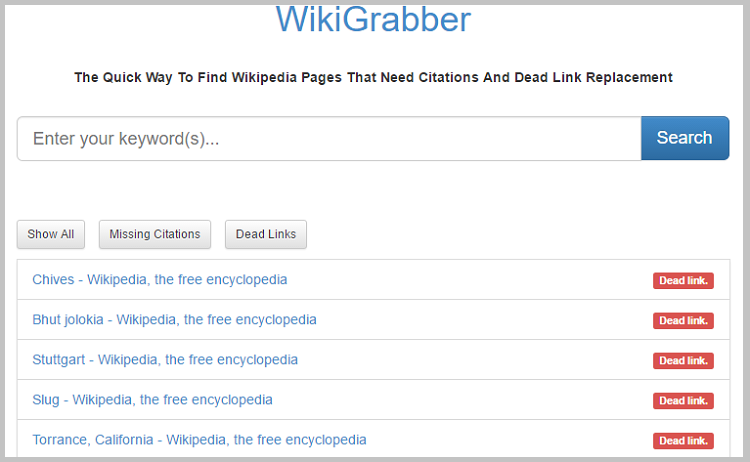
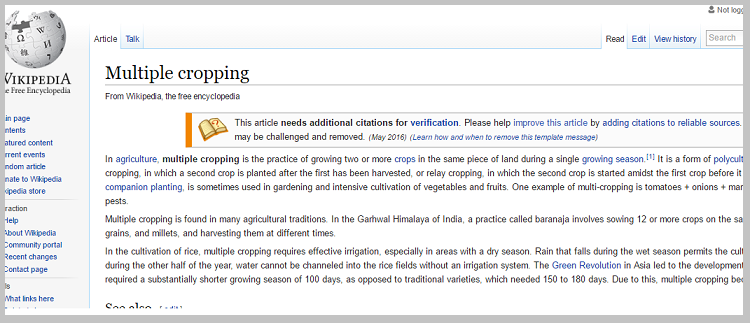
Once you’ve find a target, check out if there is a good number of links pointing to the Wikipedia page.

Create a high-utility content, make it better than the original version by adding more up-to-date information to it.
Get your first list of prospects by exporting a list of links that cite the old Wikipedia page.
50. Use DMOZ to Find Shoulder Niches
You start to worry that:
If you stuck in just one industry to tap for your link building campaign, you won’t have any links built at the end of the month.
This happens all the time:
However, you can solve this typical problem using the top directory site – DMOZ.
How might that tool can help you?
It can show you what industries you can ideally consider in building links for a specific vertical.
Horizontal.

Vertical

This works wonders in how you can expand your reach with your link building campaign.
Make this as your regular habit:
51. Make Your Tweet Short and Sweet
If you think outreach is highly dependent on email, that’s not the case.
There are many people who actually leverage the power of 145-character tweet when doing actual outreach.
See this example:
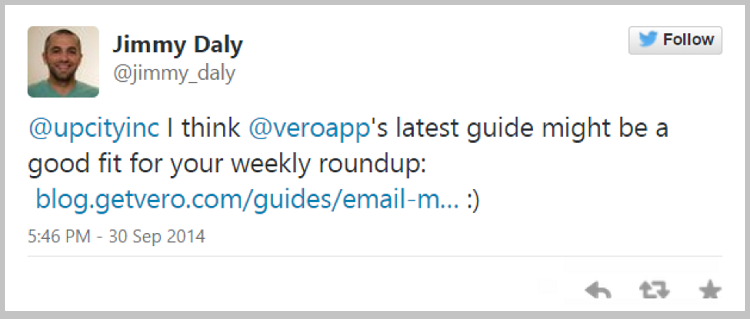
It wouldn’t take you five minutes to compose a simple Twitter just like that. But who knows, that might increase your link acquisition rate.
52. Leverage Pre-Announcement Outreach
You know what, you can increase your social shares and backlinks to your content.
Wait.
Deep down you know this is true, but how can you make it?
Simple.
By announcing your future post even before it goes live.
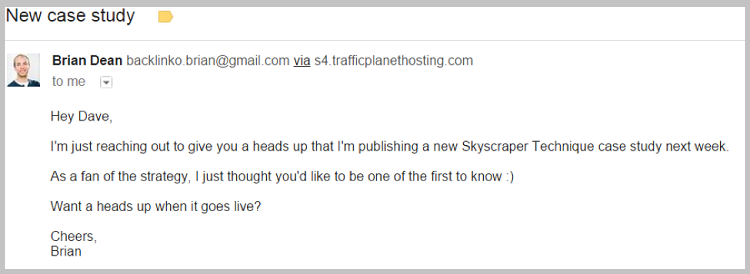
Psychology-speaking, if you ask someone to do a little commitment, it would be easy for him to respond to you.
Higher response rate.
And the next time you do a pitch of sharing the link of your content, it’s now easy to build the trust and earn the link that you desire.
53. Use Videos in Outreach
A blogger receives several pitches in a day, especially those who are in PR and news companies.
Picture this:
If a blogger receives minimum of 50 emails in a day, how possible it is that your pitch will get opened?
Don’t say no until I say this possible solution.
Think about ways on how you can make your pitch stand out.
One way is to include a video in your pitch.
It works because:
- It is personalized.
- It is a unique format of pitch.
In other words, it pulls your pitch from other similar pitches and makes your outreach email stand out.
This is time-consuming and if you want to do video-outreach to those who haven’t respond to you yet, there’s a better way.
When the person didn’t respond to you, send him over a quick video to his Twitter profile.

He’ll more likely to notice.
54. Get Links Using Slideshare
Conferences and seminars in every industry are everywhere.
And when there are events like that, speakers tend to upload their presentations to Slideshare.
And guess what?
Those Slideshare presentations have good amount of links.
With good filtering, you will get some gems of links you can reclaim to link to your website.

What’s better is when you create a specific page in your website that includes all seminars/events you’ve spoken at.
This makes reaching out to potential linkers more effective.

But don’t stop from there.
Check if you also got links pointing to your Slideshare profile.
You’ll certainly find more opportunities you can add to your bucket of links.
Reach out to those prospects and ask them to link to a specific page (just like what I told you earlier) or to your homepage (if you don’t have a new branded page).
55. Invest in Content Design
When you share a link to a webmaster or blogger, the first thing that they’d see is your content design.
Design directly affects results in outreach.
Let me share one example.
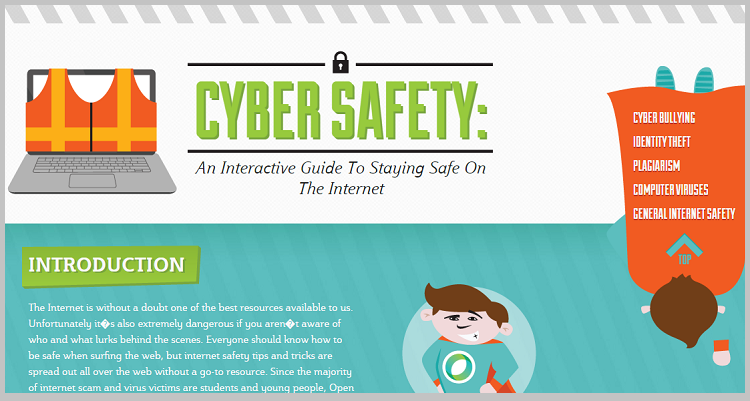
This is a resource guide about cyberbullying. It got links from 890+ unique relevant referring domains.
It’s just for one content asset.
Imagine if you have several resource guides well-formatted and designed just like that, you would be surprised with potential high-authority links you can obtain every single month.

56. Suggest Post Ideas for Guest Blogs
If you received an email like this, you probably hit the delete button right away.
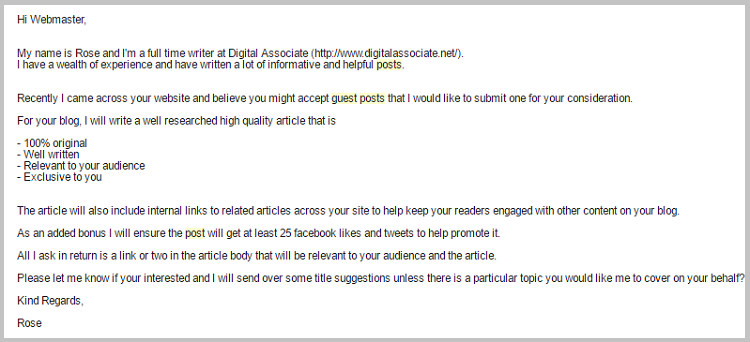
Three reasons why:
You don’t get a straight value from the pitch.
The guest blogger doesn’t know about you.
He does provide generic blog topics you’re not interested in.
If you will ask me:
My primary reason of rejecting a guest blogging pitch is the last reason above – not suggesting content ideas tailored to my blog.
Why is that so?
If you look at it closely, you can simply identify if the person takes an effort of pitching to you when he started to know what topics will resonate with your audience.
So your next question:
How can I think of content ideas that best fit to my target guest blog?
Find the most common pain points of your audience.
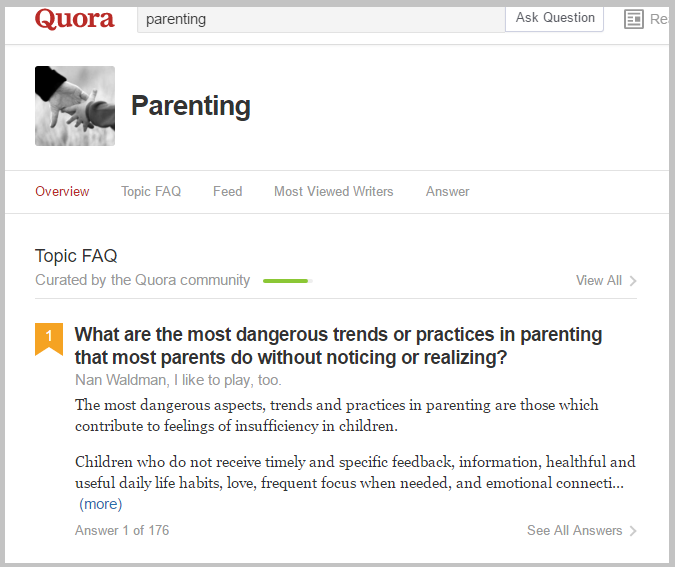
57. Ask Referrals From Bloggers
One undertook advantage of many link builders is maximizing their existing linkers to prospect for more backlink targets.
You will never run out of prospects using this approach.
And to tell you:
It is very easy.
You only need to ask your existing linkers if they know someone who’d also be interested in the same kind of value you are offering to them.
Results?
Most of them will respond to you.
Just imagine:
If you got 10 links last month and 8 of them can refer to you another two bloggers, then you already have 20 additional link prospects.
You don’t do anything. You simply just reach out to them and you already got another list.
Practice it today and see how it works.
58. Distinguish Company Blogs From Full-time Bloggers
If you are expecting responses from writers/bloggers from company sites, you’ll be disappointed.
Compared to full-time bloggers who are 24/7 ready to respond to pitches, company webmasters normally don’t respond to people unless it’d have an impact to their direct business (i.e. sales support).
How can you identify company blogs from full-time bloggers?
It’s so simple:
By looking at page SERP structure, you’ll be able to see directly if a site is owned by a company or not.
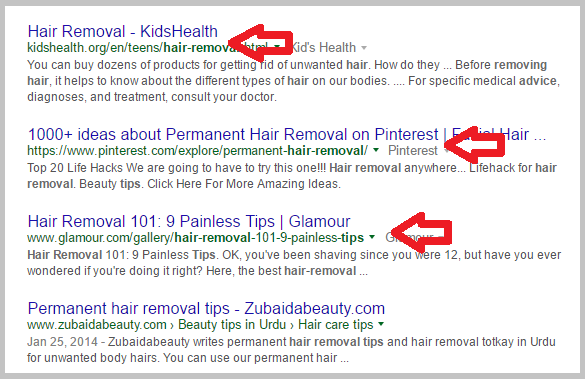
When you prospect for a blog, make sure you master identification between a company blog and a niche blog.
Proceed to the next tip to get more blog opportunities:
59. Use Comment-based Prospecting
The social proof that a blog is authoritative if it has a community of active commenters.
True enough,it’s not that easy to find many sites with that kind of authority.
But you can leverage the use of search queries combined with comment keyphrases to make high-authority link prospecting possible.
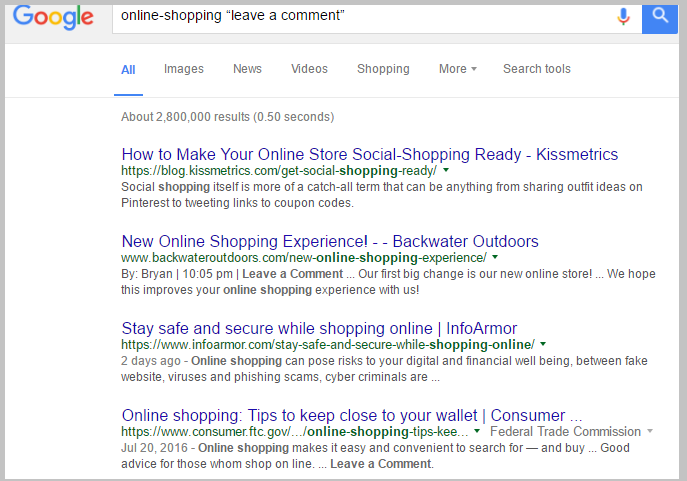
That search query signifies that results should have that number of comments in their posts
This can help ensure that you will only prospect for blogs with mid to high-level community.
If you lack with blog opportunities in your industry, try the above approach and comment below this guide if you find it effective.
Move to the next advanced link prospecting tip:
60. Use CMS-based Prospecting
One way to add more blog prospects to your list is by using CMS keyphrases.
Check examples below:
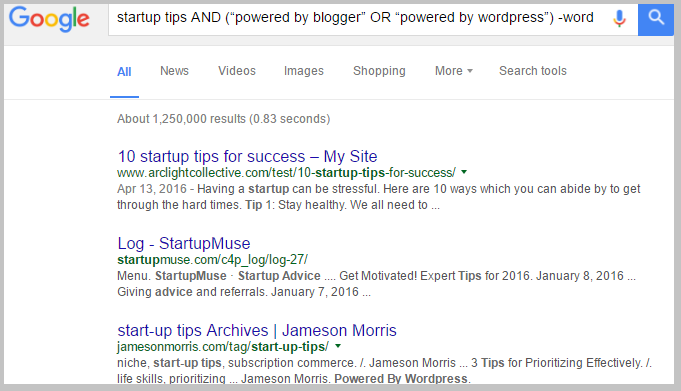
Google will exactly provide blogs that are powered/generated using Wordpress or other content management system you’ve indicated in your search.
When adding more backlink targets to your list, aforementioned approach might work for you.
Don’t stop reading.
You may miss the next big tip.
61. Find Link Exchange Phrases Easily
Link exchanges are obviously evident on blogs and resource pages.
Take a look:

When qualifying resource curators’ list pages, one of your top qualifying factors should be:
The website/page webmaster shouldn’t be involved in any link exchange or reciprocal link programs.
Simple way:
Use the Find and replace function and do searches for: reciprocal or exchange and you’ll instantly see if the page has any of those keywords.
62. Tailor Content to Linkable Audiences
As we execute broken link building for clients, our mindset has changed.
It’s not “create content” and ”build links” approach that works.
But go into this:
Identify link opportunities first, then create a content asset to serve them.
When you approach broken link building the right away, you want to find linkable audiences that will fit to your site – it may not be your direct customers/clients that you want to cater to, but a group of so called, “linkable audience”.
What is linkable audience?
Linkable audience is a group of resource curators who would benefit from specifically tailored information on a topic.
Garrett French
Garrett had a list of available linkable audiences ready to be served.
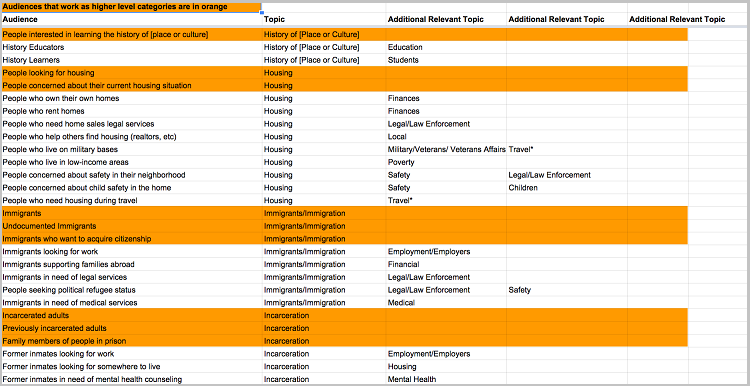
Your next step:
Determine which of these audiences you can serve based on the topics aligned to your website.
For example:
If you are in a travel insurance industry, doing a search for inurl:links.html “travel” will give you resource pages that you can further check to know the type of audience you’d want to cater your content to:
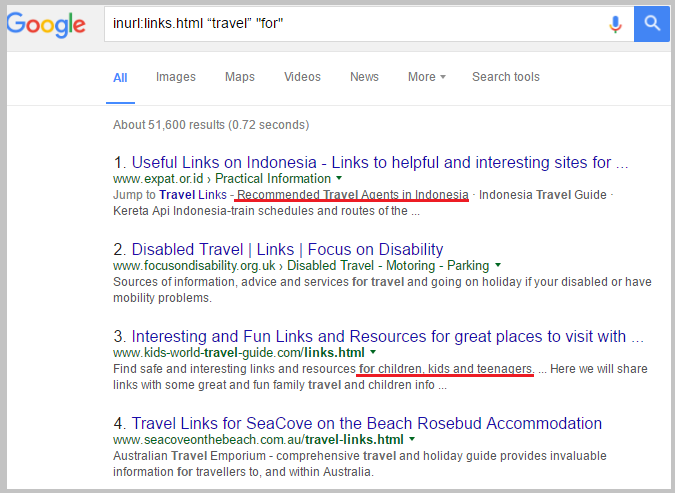
63. Use Author Bylines for Prospecting
When finding link prospects for your website, you mostly ignore names of industry bloggers.
In this case, you missed out on opportunities where you can further expand your link search.
What can you do?
Identify names of bloggers who recently published their guest posts on other blogs.
Use the Google search query, “guest post by” “keyword” and filter the search results by date.
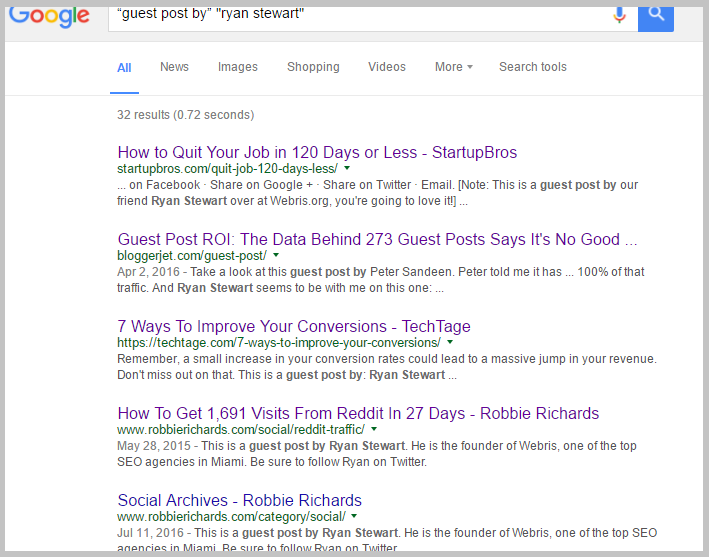
Check if these blogs can be added to your list of target domains – use your link metrics/insights.
Next tip will surely fire you more resource page opportunities:
64. Undo Templated Mistakes in Gmail
Have you sent an email and just realized you forgot to change/add something to your pitch?
This happens in most cases.
Either:
You messed up with attribute tags, not been able to change {name} or {website} in your email template.
You sent the wrong version of an email, instead of BLB pitch, you sent a guest blogging email.
Both mistakes will kill your response and conversion rates.
So how do you avoid this from happening?
Enable Undo in Gmail Labs. Go to Settings – Labs – Enable.
65. Get Easy Rankings wiht Meetup Events
Have you heard about parasite SEO?
It’s not a total black hat.
As you know:
Parasite SEO is leveraging high-authority domains to acquire indirect links through ranking for very competitive keywords.
Instead of building links to your webpage with low authority, you can take advantage of big sites where you can easily create pages and target highly competitive keywords.
For example:
James Norquay created an event in Sydney. He named it with the exact keyword Online marketing Sydney and it now ranks for that keyword.
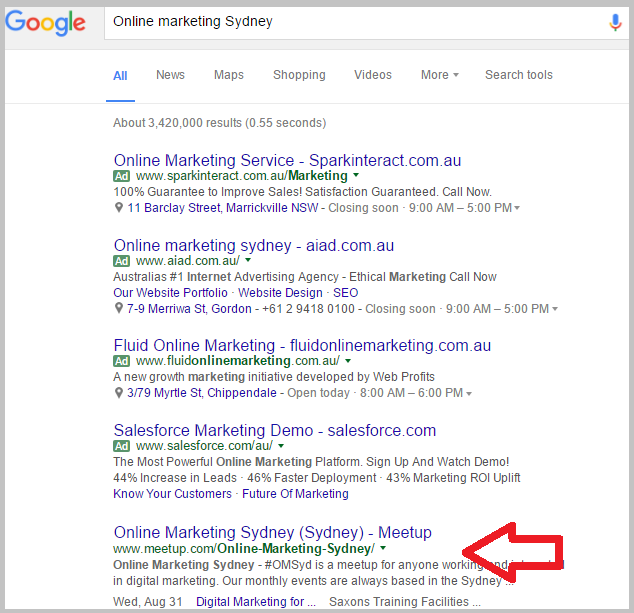
Best of all:
That keyphrase is not just informational, but it is something people are searching for to find a particular service – win!
For links?
It’s multiple.
People who signed up and attended your meetup might give you links from their blogs.
Bottomline:
Create an event and try to rank for highly competitive keyword.
Rankings and links.
Two birds with one stone.
66. Create Your Own Resource Page
Do you want to increase your links from resource curators?
There is one secret way:
Create your own resource page.
Come to think of it, if you link to other websites, may it be your competitors’ resources, you actually have a value to push in your pitch.
It is like baiting your competitors to link to your resource page, because you initiate doing so.
You are not just getting links from competitors but also from other resource curators as well.
For example:
This resource page about disability scholarship resources has been linked to many times by resource curators.

First, from websites listed in the resource page.
Second, from websites with their own resource pages as well.
Imagine:
Content isn’t expensive to create but you can acquire high-utility resource page backlinks.
67. Get Guestographic Links
Infographic promotion has been around for a long time.
Even up to now, it still works.
But one way to make this works more effective:
Pitching bloggers to write a mini-guest post right above your infographics.
If you can make a customized introduction for your visual content, you make it easy for them to publish your content – gives you more chances of getting relevant backlinks
The next time you promote an infographic:
Take away the burden from partner publishers by offering custom introductions for their infographics.
68. Use Blog Commenting for Referral Traffic
Blog comment is a branding strategy.
No doubt SEO experts still use it to market their blogs.
Check this out:
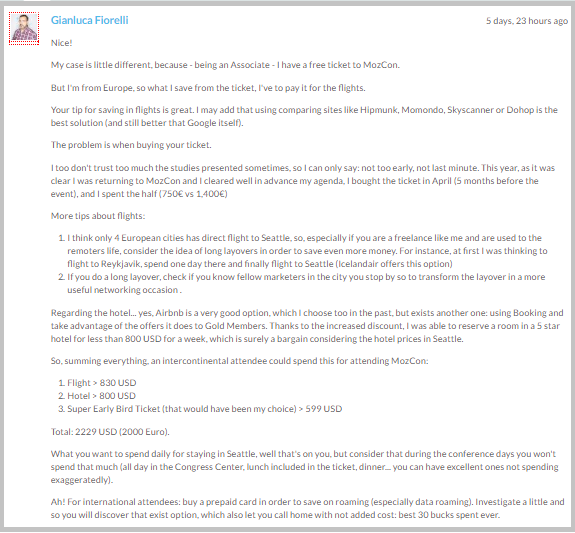
However, there’s one thing that differentiates their blog commenting strategy from others:
They do it to build their brand and to drive referral traffic.
If your mindset is just like that, you’ll have a good referral traffic from those top-notch blogs – see below of the traffic that I’ve gained from Brian Dean’s blog:
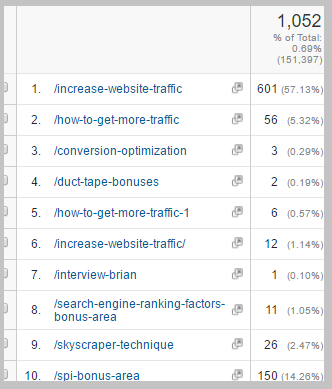
69. Link to Your Other Guest Posts
Does tier link building still works?
It depends on how you use it.
But for me, the proper way to do tier link building is to start with your external content.
Check out your guest posts. See which of them are still earning links.
If you have targeted keywords in a few guest posts, prioritize them
Make sure you link to them in your future guest posts.
When they are ranking at 6 to 10 for keywords with good search volume, you can still push them up to the 1st spot.
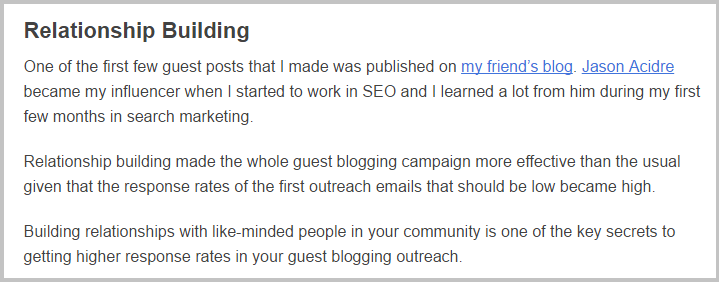
70. Organize Guest Blogging Process
If your number one link building strategy is guest blogging, one thing you need to remember is
organize everything.
Organization is important to improve your guest blogging process.
See this image below.
It has columns for:
- Domain Name
- Source
- Guest Blogging Guidelines
- Sample Guest Article
- Contact Name
- Email Address / Contact Form
- Relationship Status
Even if you have 3, 5 or 10 clients or websites, you can easily track the status of relationships with each target guest blog.
The best part:
It builds accountability among your team members (both remote and in-house).
71. Use Millionshort for Prospecting
Google is your bestfriend in link prospecting.
But you know what, there is one tool that you can use to make your search more targeted.
By using MillionShort, a tool that allows you to remove the top million or thousands pages for your keyword, you enable your prospecting to target mid-level blogs or sites.
This is very useful if you are not targeting DA70+ blogs which normally ranks for most of the keywords out there.
Next time you do your prospecting, try using the said tool.
It works.
72. Seek Link Opportunities Using Delicious
If you’ve been sharing your content quite often, you probably know Delicious that it’s a good place to share, save and bookmark popular content on the web.
Did you know the secret?
You can actually use that social platform to find highly targeted linkers.
How?
Use its search function to look for people who recently share and bookmarked a similar content of yours.
Check each profile if they linked to their websites to ensure that they are capable of linking to your webpage.
Gather all potential linkers in one list and reach out to them.
73. Create an Industry Glossary
Every industry has its own jargons.
If you can combine all industry terms and definitions into one big post, it’s a linkable content asset you can maximize for links.
Check out this glossary about gardening, there are 100+ referring domains.

The next time you run out of content ideas, create your own industry glossary.
74. Coin a Term
If you are a follower of Backlinko, you probably heard these terms:
Guestographics
Content upgrade
Skyscraper technique
Yes?
These are not fundamental terms that exist since the origin of the Internet, they are what we call, “coined terms”.
Coined terms are created commonly used terms by industry experts, publishers or influencers to state or define a new thing, process or trend.
Look at how many links Brian Dean acquired using that approach:

The better?
When you also target other relevant keywords along with your coined term, it would be easy for you to rank for them.
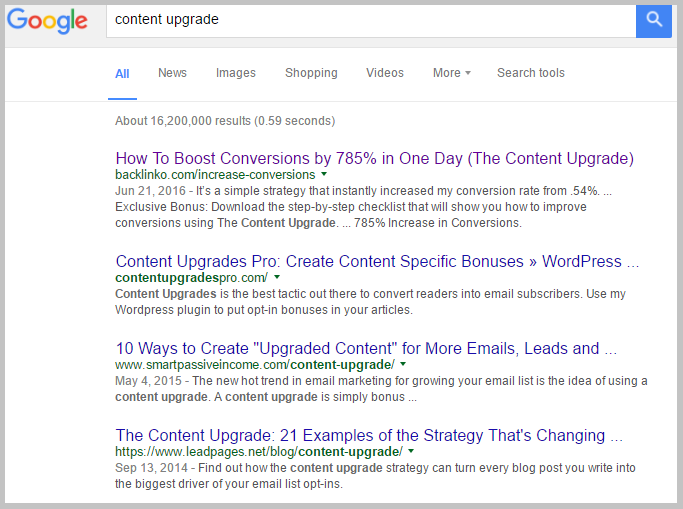
75. Create a Wikipedia Page With Ease
Ever wanted to get a branded link from Wikipedia?
Follow this link building process:
Write up a Wikipedia page for your brand (you can a professional writer to make sure the history, values and any important information are put into proper sections).
Then make sure to proofread it to follow Wikipedia’s formatting guidelines.
Finally, hire an experienced editor to submit your entry.
http://www.peopleperhour.com/hourlie/create-a-wikipedia-page/31502
76. Build Links Using Job Ads
To create new content is to build links.
Not all the time:
You have to look at your existing web assets and determine which one of them you’ll be able to use to acquire links.
If you take a closer look:
Your latest job application page on your website is one asset you can leverage:
Start with:
Finding available job boards in your industry and in your location.
Use any of the following Google search queries:
“list of “industry” job boards”
“industry” + job listings
“city” + job boards
“city” + job listings
Then get your job page included in those links pages when you do outreach (remember to have the job page published on your site beforehand)
77. Guest Post on Edu Blogs
Acquiring edu links is not an easy task.
But there’s one way you can certainly penetrate those types of links:
Contribute highly targeted content to them.
Look at this example:
Ryan Stewart is a SEO guy and he writes for big SEO and digital marketing publications like Moz and Ahrefs.
What he did is to write a post targeted to the market audience of the edu site – which is non-profit organizations.
His post about non-profit local marketing is a testament of how possible it is to get a contextual edu link.

Try this yourself:
78. Find Mid-level Blogs in Page 3, 4..
Ever wonder why you can’t build links right away?
If you are a startup and are targeting high publications to acquire editorial links from, then it’s not possible to do it in weeks unless you have existing relationships with industry publishers from those sites.
What to do when you want to tap mid-level blogs/domains first?
This little trick will help:
Go to page 3, 4 and pages after, first before looking straight at the 1st page for possible linkers.

Because chances are when you get straight to the first page, you’ll see top-domains (DA50 or 60+) for your head-term keywords.
79. Validate Contact Emails
Has this happened to you?
You pitch a webmaster then a few minutes, you receive a failed email delivery message.
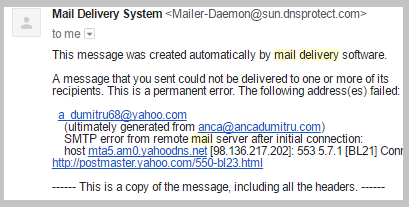
What does that mean?
The email you’re contacting to is not working and is not anymore the webmaster’s email.
How can you avoid this?
Use an email validator to identify which emails are still working.

Thought it’s not 100% accurate (estimate of ~10% inaccuracy), this helps you a lot when pitching hundreds, even more thousands webmasters.
You don’t need to worry if your emails won’t get to their proper places.
80. Analyze Your Competitors Properly
Don’t get links from competitors’ linking pages because you are only following footprints.
Most link builders will argue with this statement—and I’m one of them.
Why?
First, not because you get a link from a page where your competitor has acquired means you are just following the similar footprint – it does if you only target just one competitor.
Second, competitor link building diversifies your link profile. When you get a link from a page discovered through manual search and another link from your competitors’ linking domain, then it helps make your link profile diversified effortlessly.
How to do proper competitor link analysis:
First, identify the goal of your campaign, i.e. trying to get links from a whole domain with or without its subdomain, from a specific prefix (e.g. product category) or from a specific content/page.
Second, plug the page into Ahrefs and use the proper URL type for competitor link analysis (prefix if you want to find linking pages of a, let’s say a category and all pages further down, URL if you want to find linking pages to that specific page alone and domain with or without subdomain – self-explanatory).
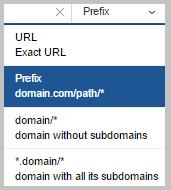
Finally, strategize how you’d be able to get links from pages you discovered. Apply any of the ink building tactics in this guide.
If you want to learn an advanced approach of this competitor link building tactic:
Continue reading:
81. Find Broken Links Using LinkMiner
Link rot is the new friend of every link builder – particularly those who practice broken link building.
It’s very time consuming when you manually find broken links on a resource page.
To ease the process, you can use LinkMiner to semi-automate looking for broken resources.
No wonder many link builders can scale broken link building because of this handy tool.
82. Use Interviews as Guest Posts
Have you interviewed someone and published his/her answers on your blog?
You get visits, shares, and links.
It’s even better if you use that content as a guest post to somebody else.
Win-win situation!
The interviewee gets an exposure.
You build a backlink to your website.
Examples are here below:
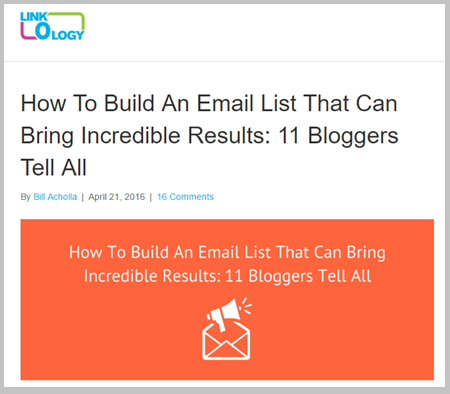
83. Use Videos for Guest Blogging
Writing a guest post for other blogs takes time, especially if you’re trying to make it as top-notch as possible.
But before you start writing, think about other ways you can leverage other content formats aside from text.
For example:
Dan Shure did a video-type guest post with few written texts.

Why this is effective:
- It sets you apart from other pitched emails, where they mostly offer text-based content (it increases your chances of landing a guest post).
- It improves user engagement on the target guest blog.
Try this strategy and see for yourself results.
84. Find Misspelled Domains and Get Links
Accidents happen.
Same goes when people link to your domain or page.
They might link to your site but had misspelled your domain name.
This mostly occurs when you had an established authority in your industry (not recommending this for startups).
Want to try this approach?
First, generate misspelled/typos of your brand name using this tool.
Second, find pages linking to those misspelled domains using Ahrefs Bulk Checker.
Finally, reach out to those webmasters of pages, let them know about their misspelled domains and ask them to update it.
85. Determine Websites That Used Your Old Logos
If your website has gone through a redesign or rebrand, you now have a link building plan to take.
First, use ImageRaider to upload all versions of your logo and the tool will send you a report of all websites not linking back to you.
Second, reach out to people who had been using old logo and ask them if they could update the image with the new version and link to you if they haven’t.
A short and sweet message will do:
Hi [FIRST NAME],
I noticed you’re using [brand]’s logo on this page on your site. We actually went through a rebrand [date/time] and part of our re-brand was a new logo. I’m attaching a new version of our logo, and we’d appreciate it if you could update the page with our new logo.
Thanks!
[your name]
86. Link to Influencer's Content
Reciprocation is one factor to influence someone (source: book).
It simply means that when you ask for something, you need to also provide value to that person.
This makes a big difference with how people will respond to your favor.
Think about it.
If you mentioned and linked to an influencer, expert, or blogger from your blog post, wouldn’t it be an instant value for them?
Next time you promote your blog post,gather all blogs and content you mentioned in your latest post. This will be your warm link prospecting list.
Reach out to them and tell them that you included their content in your latest post.
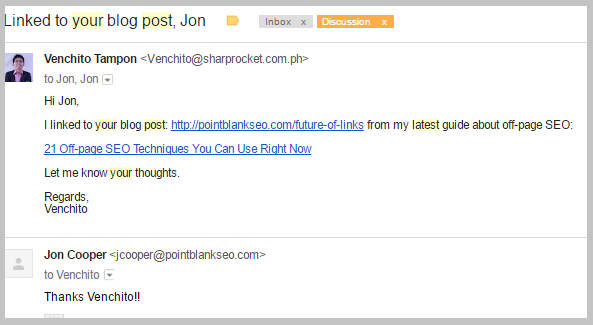
87. Use Related Search Op to Find Blog Prospects
Relevance should be your first considering factor when finding websites to target for links. Google looks at links (source)…
If you are having difficulty seeking for blogs in your industry, try this search operator – related:domain.com
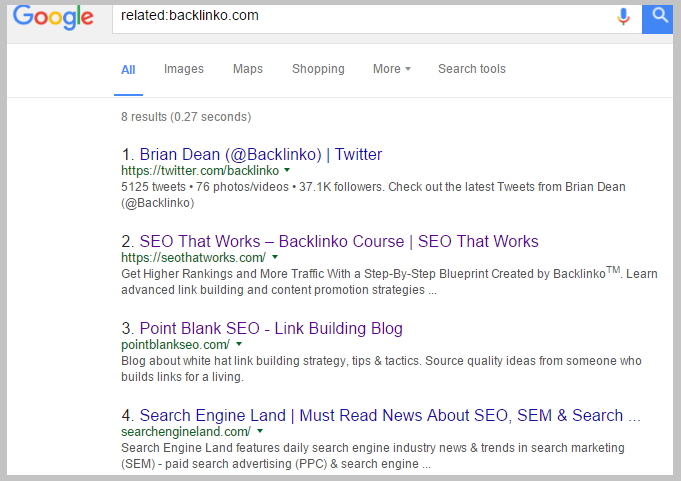
This will give you results of websites thematically relevant to the domain related search operator points out to.
88. Offer Content to be Translated to Other Languages
If you have a website targeting global markets, one of the best ways to acquire more links to your pages is distributing your content to non-English blogs/sites.
Start by tracking in Google Analytics for non-English countries and have a list of them.
Once done,try doing searches for country-specific domains in Google.
You can use the site operator to target domains with country domain expectations. Add any blogs you find to your spreadsheet.
And if your list is not enough,don’t forget non-English sites already linked to one of your pages. Plug your domain to Ahrefs and check out those existing linking pages.
They are likely to be your recurring linkers.
Your next step:
Pitch webmasters and offer if they’d be interested to translate your content to the languages of their websites.
You’ll be amazed with the amount of caliber links you can obtain using this approach.

89. Do 2nd-level Broken Link Building
Linkrot is a huge advantage for many SEOs especially link builders.
Because every day, there are resource/curated/links pages that are getting outdated, where some of them linked to pages that are not available anymore (404).
If you are aiming tons of high-quality backlinks, then that is a good news for you.
Broken link building is, by far, the most beneficial link building tactic for SEOs.
It’s even better if they can go through deeper levels in broken link building.
Links could come from:
- Resource page they’ve found.
- Pages linking to that resource page.
- Resource pages linking to external broken links of that resource page above.
So you actually have two actions in this approach:
Reach out to people who own those links pages in a and b.
Reach out to people who own those resource pages in c.
Getting confused?
Watch the video below to see the step by step process on how to properly execute 2nd-level broken link building:
90. Diversify Your Backlinks
It’s been a huge discussion in the SEO community on what to do and what not to do in link building.
In my experience, it’s not the nature of the law matters, what should be given more importance is the practice of it.
The best way is to diversity your backlinks.
91. Build Alliances
Relationship building is good.
But building alliances is much better.
Imagine if you have a few friends willing to regularly place links to your latest content within their next blog posts (as long as they are relevant), it is a set of recurring links that you can effortlessly acquire almost every month.
However, it takes much time and effort to build these alliances.
The reason:
Those alliances don’t just have their Twitter accounts, but they have their own websites that need some benefits from you as well.
Remember:
Reciprocation.
If you can find a few people that can reciprocate your efforts, it’s an effective link building tool you can leverage in the long run.
92. Aim Links That Will Get Clicks
There are three reasons why people click on a link:
First, it is placed in a position where it could easily be seen.
Second, anchor texts used to describe a link calls users to take an action (to click)
Third, the link is on a high-traffic/authority/trusted website.
The next time you build a link, here’s what you need to do:
First, aim for links with prominent position in the document (the higher, the better).
Second, use highly descriptive and longer strings of anchor texts that tend to be clicked more.
Third, get links from high-authority blogs – there are many ways to do it (see more tips on this page).
93. Use Partial Match and Highly Descriptive Anchor Texts
Google is hitting websites with aggressive anchor texts (exact match) for keywords in backlinks (further reading).
With that, anchor text diversity should be every link builder’s arsenal.
Also:
The way a link is described using anchor texts makes an impact to clicks to links.
Shoot two birds with one stone.
Anchor text diversity helps you make your link profile good in the eyes of Google and helps your brand get more referral visits from linking pages too.
The next time you do your backlink audit, check if you have a diversified anchor texts from your backlink.
If not, start using partial match and highly descriptive anchor texts in links.
94. Execute a Better Internal Linking Strategy
Inbound links help boost rankings of your pages.
But what if you can’t acquire several links in a month, is there another way to boost their search performance?
Yes.
Use a proper internal linking strategy.
Start by identifying pages sitting in page 11 to 30 in search results (use Search Console).
Once you have determined them, find pages where you’ll be adding internal links to (these should be your authority informational pages). Ahrefs can help you with this.
Finally add internal links to your promising ranking content.
95. Find Broken Links On Other Webpages
If you can’t find a broken link on a resource page, that becomes a problem:
You don’t have any broken resource to tell to the webmaster.
Now, the secret to finding value in broken link building campaign:
look at other broken links and pages found on his website.
Here’s how:
Plug your target domain on Ahrefs.
Check broken links tab:
Now, you have some broken resources to tell and to help the webmaster fix them.
96. Expand Your Guest Post Relevance
In my five years’ experience in guest blogging:
Let me admit,it’s hard to penetrate top-notch and mid-level guest blogs in a highly targeted niche – motor company for example.
But here’s the interesting thing:
You can makes all your guest posts relevant regardless of niche:
If you are able to select a content that is both relevant to the blog niche and to your site’s theme, that’s a goldmine.
Take this as an example:
Photography Printing and Cards Company
Parenting: How to Make Fun Memories With Kids
Holiday: How to Take Your Summer to the Next Level – tips to make your days’ worth
Education: How to Upgrade Educational Materials with Photo Cards
Wedding: Top 10 Things You Need to Prepare Before Marriage – one tip should be to hire a professional photographer
It turns out, if you have exhausted all guest blogs in your industry, try to go to shoulder niches and you will never run out of backlink prospects.
97. Use Your Linking Page as a Secondary Resource
Maximizing link juice for links you’ve acquired is important, especially, if you have the luxury of choosing which link to be added to a linking page.
Example:
If you are recommending two pages to be included in a resource page, why not choose the site/page where your link has already been hosted – as your secondary resource?
Win/win for you:
You get link to your target content from that resource page.
You get another link pointing to a resource page where your other previous link has been placed (tiered link building).
98. Turn Your Evergreen Blog Post Into a Page
Authority pages with natural links have very powerful boost in your overall domain authority.
That statement is not debatable, isn’t it?
When you have several evergreen blog post published on your site, they can flow ranking authority to other internal pages.
But you have an evergreen blog post just like that, you can make it more powerful by turning it into a page.
Because pages have higher staying power in search results, it’s much more likely to increase the likelihood of ranking for other more relevant long tail keyphrases.
99. Increase Your Domain Authority With Links
Having the right mindset in search engine optimization, particularly in developing link building campaigns for several clients/sites is very critical to the success of one’s campaign.
In essence, if your website can’t beat its competitors because of its lack of content authority and primarily of low overall domain authority.
Your goal when building links should be directed towards increasing your domain authority first.
So once it goes up, any published content doesn’t require too much of outreach, as they can directly or indirectly can earn links from publishers or content creators finding references through organic search.
100. Add Co-occurences Around Backlinks
Co-occurrences are words that appear around your backlinks, which help Google tell what that page is all about (source from Moz).
For example:
If you do a Google search for the key phrase – backlink analysis, you’ll see that OSE is ranking on the first page.
The page doesn’t include the exact key phrase in its meta-title nor could you see it any section of the page itself.

The advantage of adding co-occurrences around your links is that it helps your pages rank for relevant keywords, whether they are competitive or not, as long as there are mentions to your page/site, linked or not, that occur alongside with keywords tend to have good search volume (just like the example above).
When you have a chance to choose the words around your links, i.e. for guest posting, make sure to add other relevant keywords around your backlinks to improve the linking page’s relevancy factor.
101. Find Linking Sites of Shutdown, Moved and Rebranded Domains
There are websites that shut down, changed their names, moved or simply just rebranded by their owners.
If you find these websites, go and reach out their existing linkers and increase your number of links to your website using this approach.
Here’s the step by step process from Brian Dean of Backlinko on how to execute the exact process:
FURTHER READING:
Link Building For Bands and Musicians
The blogosphere in the music industry is increasing as new bands, independent artists, musicians, and solo songwriters are paving their way into the music scene and building their own personal brands online.
Consumption of music content is no anymore out of reach. Just a few clicks away and anyone can discover new musicians and bands — people can start clamoring if the content (songs) are appealing to its target listeners.
Though there are massive opportunities for upcoming and promising artists and for existing established bands, music creators still don't know how to market their own content online — even more so acquiring additional brand impressions through mentions and music backlinks.
The list of tactics I've shared in this post on how to build links to music Ecommerce websites can also be applied to websites of independent artists, bands, and musicians.
There are only some nuances given that the discovery is more through branded searches (as people know specific names of bands and artists) before they even do some research about it. This is in comparison to the basic process of discovering new entities through informational pages and starts with searching of informational keywords.
Let's look at some sources of content creation tactics and link opportunities for musicians' websites.
CONTENT FOR BRANDED SEARCHES
For musicians — solo artists, composers, and bands, you can maximize searches about your musician profiles. These are searches for any of your content — your album names, song names, lyrics, performance and other event dates, interviews, and a list of band members.
Identify any content gaps — where a keyphrase has a substantial search volume but without any content piece that serves the intended search.
Create new pages, if necessary, to serve the searches' needs, as those visitors who may be searching would have just been getting information from third-party websites.
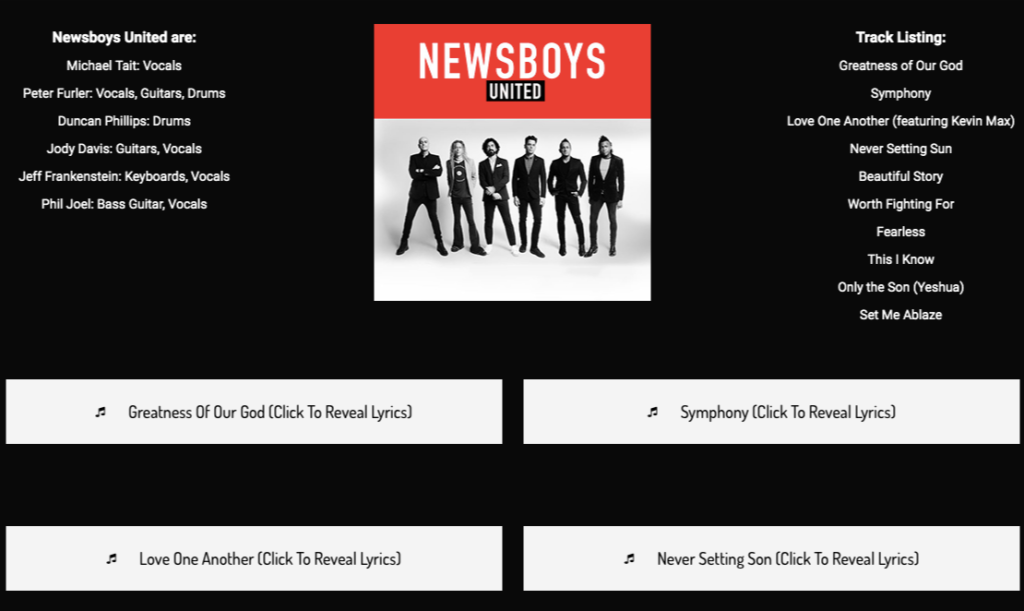
Maximizing this exact opportunity is a great way of not only getting more organic traffic but nurture your visitors into potential loyal listeners through some series of information-capturing funnels.
LINK RECLAMATION
Whether the client is famous or not, people who are working behind marketing musicians' websites should start monitoring any mentions of the brand. It doesn't just help in maintaining positive sentiments about the personality, but also in ensuring that there are appropriate links deserved those profile mentions.
The idea is to discover blogs and websites where you and your content have been mentioned, but with no attribution of links.
Create a list of possible mentions of you. Obviously, band or musicians name, titles of albums you've released or plan to release, and song titles — these are things you should start monitoring as often as possible.
Go beyond those immediately apparent searches. You can list down any misspellings of your brand name, one or two famous lines of your songs (chorus maybe), and tour titles (different from song/album titles).
Take a look at this resource on link reclamation.
PRODUCE AND PROMOTE VIDEO CONTENT
Though fans are commonly uploading their own versions of you or your band's live performance events, the idea of capturing it yourself and publishing it on your site and video channels helps you add more solid content assets to your site and to other video platforms besides Youtube.
In addition to the demands for videos of live performances, you can search for any common searches about your brand using Ahrefs' Youtube search. By using the tool, for example, it can help you discover songs that get high demand in searches for lyrics.
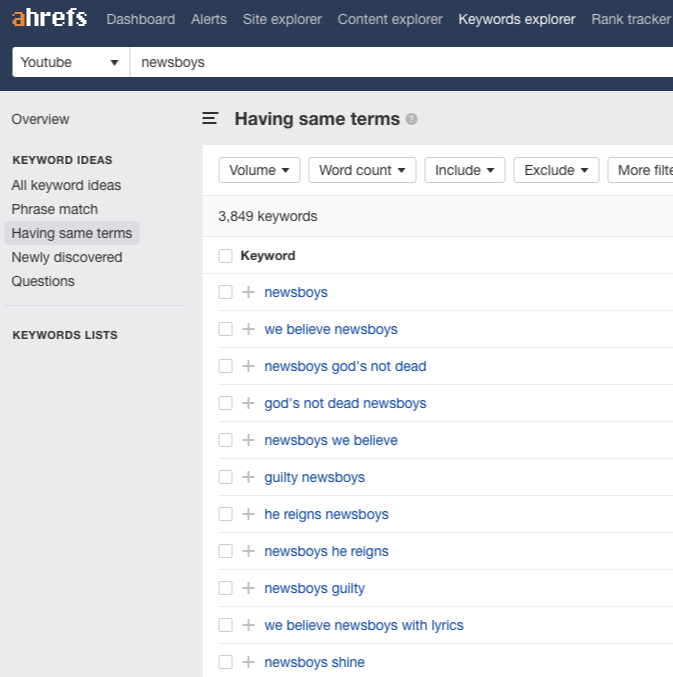
People want to sing songs while looking at the lyrics. Publishing lyric versions of your songs is a must nowadays - helping you gain an additional following from that type of avid listener.
Additionally, there are listeners who knew how to sing the song but would want to find the exact title of it. There may be a lot of search volume for a single song. Single lines in chorus that are popular can be served with a specific section of the page (or could be targeted in other lyrics pages).
Another search suggestion (or already a search option) is popular live performances or any associations you or your brand has with. Go over and check in Ahrefs' Keyword Explorer Youtube filter to find these relevant searches and upcoming/suggested search phrases.
PUBLISH EXCLUSIVE CONTENT
You may also create your own exclusive content and not just rely on what Youtube and other search channels suggest that you satisfy with online assets.
Here are some suggestions or ideas for your music exclusive content:
- Clips of stories and inspiration about how and why songs were written
- An explanation about the name of the brand or album you or your brand has released or is releasing
- Images of where your brand has originally written certain songs
- Informal interviews of your brand before, or after the concert or performance
GET LISTED IN WIKIPEDIA
If you (musician) or your brand is notable enough to get into Wikipedia, start the process of getting it listed.
You can check out this slide page on how to create a Wikipedia page for your business.
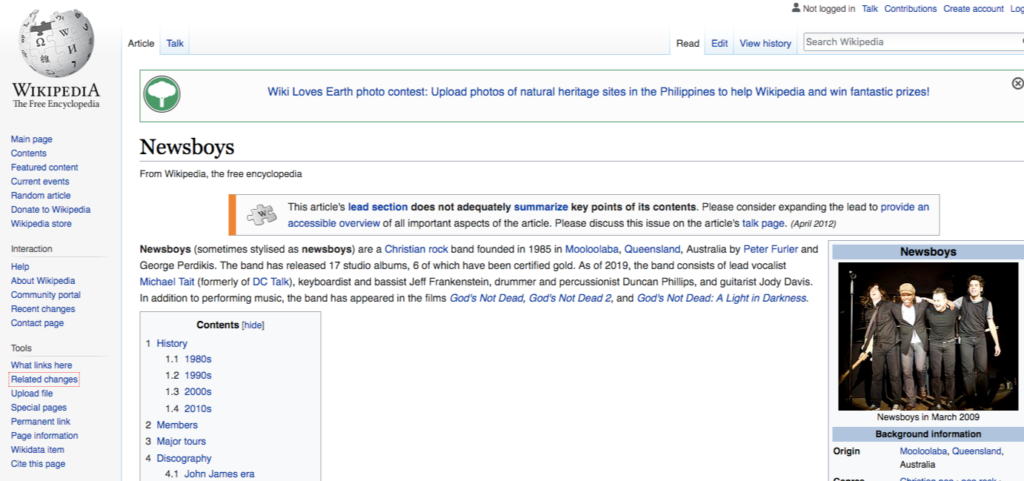
You can also hire an experienced Wikipedia writer in People Per Hour so you can semi-automate the process of getting you or your band listed in there.
ACQUIRE RESOURCE LINKS FROM ARTISTS OR "GENRE" PAGES
Resource link building is also applicable to websites of artists and bands.
Similar to other resource link approach, one has to know what types of topics get linked the most.
For example, in the music space, you'll find a lot of artists and music links pages. There are even resource pages that link out to specific genres of artist groups that can likely give a boost in relevant traffic to your site.
Artist links
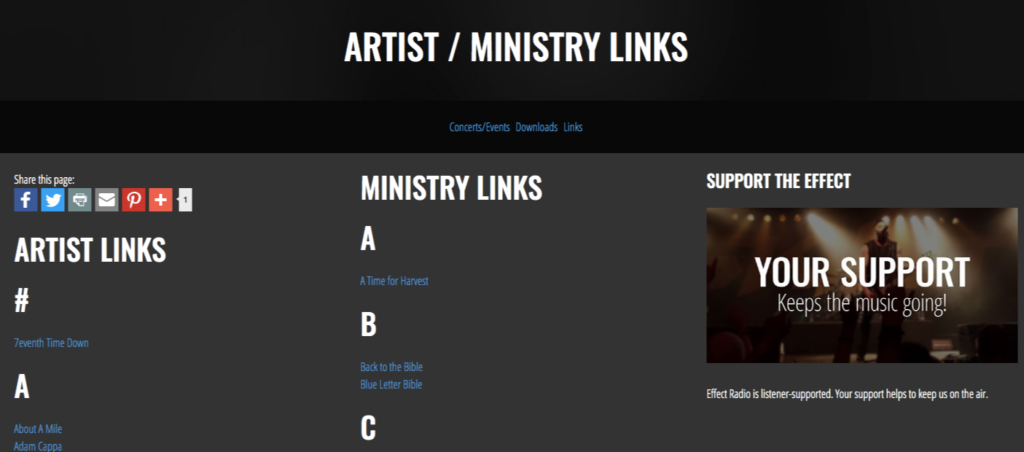
Christian group links

Go over these links pages through using link prospecting phrases. Find them either on Google and/or competitor link analysis using tools like Ahrefs.
If you know an artist group with the same genre as yours, plug their website's domain in Ahrefs and see which pages they're getting links from.
If you want a solid process for this particular link building strategy, you can read this guide on broken link building.
BUILD "BANDS IN TOWN" ANNOUNCEMENTS FROM EDU SITES
Artist groups who perform in school events can take advantage of mentions and links from announcement sections of edu blogs.
If the artist group has a specific clamor from students to perform, edu student writers can feature their profiles on the article. "Bands in town" news-type articles are ones commonly being posted in those blogs.
OBTAIN LINKS FROM EVENT LISTING SITES
It is best to start creating pages for individual shows of your group. This approach will allow you to get official ticket links from event organizers who have their own pages dedicated for future event performances, as well as their own network of event listing sites for ticket purposes.
LOW HANGING FRUITS IN MUSIC DISTRIBUTION SITES AND FAN SITES
There are low-hanging fruits for link opportunities you can discover simply from music distribution and even fan websites.
Popular bands and artist groups normally have their own fan club sites. There are likely some demands for membership — which may even have the interest to start their own fan sites.
MusicBrainz, a music listing site, music distributions sites, and fans club sites are types of opportunities you can continuously monitor as relevant link targets.
GROOVES IN LINK BUILDING
It's natural that when you're starting to promote your website, you don't have many link opportunities at hand. But as you go over and search for how and where your competitors are getting engagements and relevant traffic from, you'll see all sorts of different types eager to give links straight to your most important pages.
Find these both low-hanging fruits and hard-to-replicate contextual links. Then build momentum along the way.
Link Building For Music eCommerce Websites
The music industry is an exciting yet challenging field for link builders and SEO professionals, as it covers wide facets of approaches to link building phases such as link prospecting and outreach.
If you can execute strategies well, you can expect results just like this (see image below):
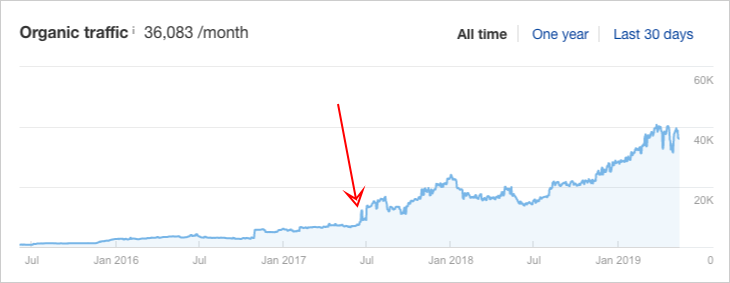
In mid-2017, we started building links to this eCommerce client that sells violins and cellos. As of today, the site is ranking for commercial keywords such as "violin" and "cello".
In this post, we'll cover how to build links specifically to music eCommerce websites (we'll have some more link building discussions in the next few weeks for musicians and bands per se).
For now, we'll have a closer look at online stores that produce and sell musical instruments, music sheets and music courses.
Let's go straight to some available link building tactics for online music stores.
LEVERAGE WHERE TO BUY PAGES
Whether you are a retailer, dealer or any merchant of musical instruments, you can't simply overlook link opportunities from "where to buy" pages.
"Where to buy" pages are specific pages for vendors, resellers, retailers, suppliers of a specific or multiple product line or services.
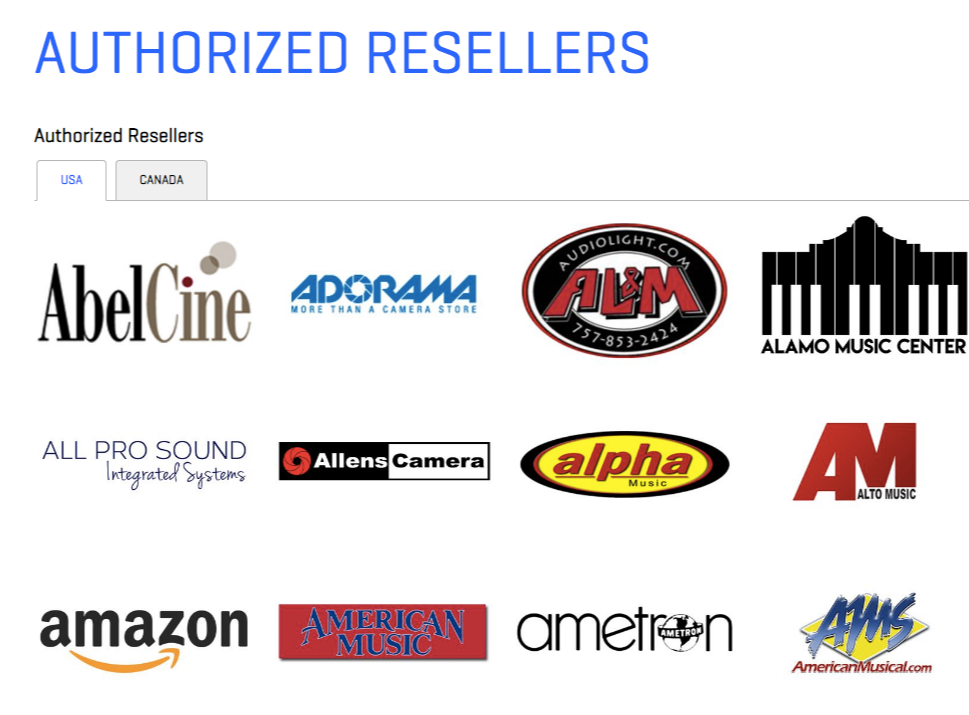
They are dedicated for customers and potential customers looking for a specific store location of the product/service they wanted to purchase.
One approach that you can make to find these "where to buy" pages is to get an inventory of manufacturers or suppliers (If you are a retailer). Check if each product or product line has its own "where to buy" or store locator page.
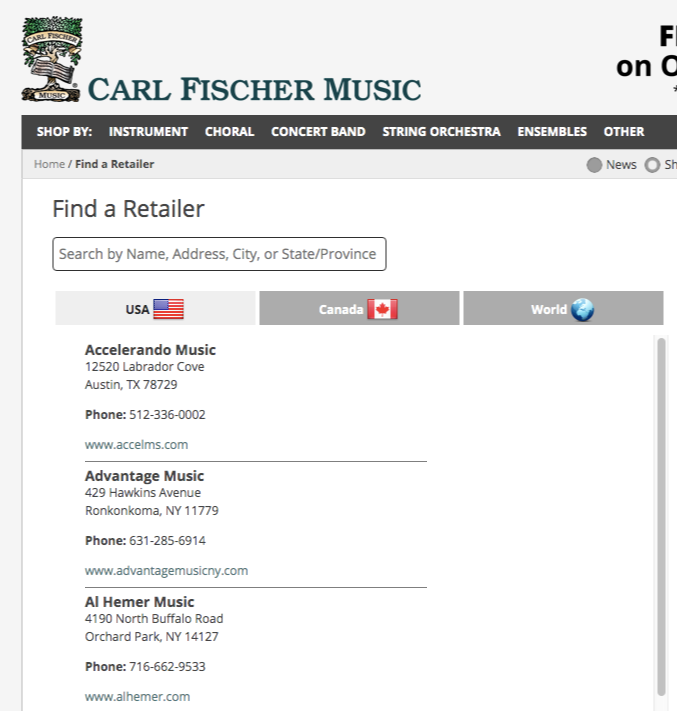
The next approach to discover this eCommerce link opportunity is to do Google searches for any of the following phrases (take note that your search would depend on what type of vendor are you):
- "store locator" "PRODUCTNAME"
- "authorized retailers" "PRODUCTNAME"
- inurl:links "suppliers" "INDUSTRY"
- inurl:dealers "INDUSTRY"
- inurl:links "merchant" "PRODUCTNAME"
- inurl:links "merchant" "INDUSTRY"
- "where to buy" 'PRODUCTNAME"
- "where to purchase" "PRODUCTNAME"
- inurl:"where to buy" "PRODUCTNAME"
The next phase of link building is to reach out to contacts handling these "where to buy" pages. Conversion rates for this type of outreach depend on the legitimacy of your partnership (i.e. if you are an accredited vendor of the product).
Use the corporate email address when pitching, as it gives you the leverage of identification with a specific product line or service. A corporate email sticks more than a Gmail account in a link request outreach campaign for list pages of commercial links.
DISCOVER .edu MUSIC LINKS PAGES
One of the challenges of link builders and SEOs is building links to commercial pages.
For music eCommerce sites, there is a strategic way to do this. You can actually get high-quality contextual links by targeting your site's category and product pages for links from .edu commercial-like links/resource pages.
You can start by prospecting for backlink opportunities using any of these key phrases:
- site:.edu "MUSICALINSTRUMENT" "links"
- site:.edu "music links"
- site:.edu inurl:libguides "music links"
- site:.edu "music library"
- site:.edu "purchase supplies"
ACQUIRE ASSISTED CONVERSION IN FORUMS
Forum link building is not dead. If it's executed properly, it can become one of the strongest lead generation sources of your site.
The reality in customer behavior is that they tend to conduct initial research before making purchasing decisions. So, if you're selling musical instruments and other related products (like chord charts and tutorial courses), you may look for any music-specific forums with ongoing threads on musical instruments.
Here are examples of forum threads on purchasing violin strings:

You can prospect by yourself or with the help of a virtual assistant thread discussions leveled on the decision stage of customers (e.g. want to purchase).
Here are some useful keyphrases that can get you started with niche forum prospecting:
- inurl:forum "case for violin"
- inurl:thread "case for violin"
- inurl:discussion "case for violin"
- inurl:forum "bass repair" needed
- inurl:thread "bass repair" needed
- inurl:discussion "bass repair" needed
- inurl:forum "best rosins"
- inurl:thread "best rosins"
- inurl:discussion "best rosins"
- inurl:forum "where to buy strings" "LOCATION"
- inurl:thread "where to buy strings" "LOCATION"
- inurl:discussion "where to buy strings" "LOCATION"
- inurl:forum "looking for" "MUSICALINSTRUMENT"
- inurl:thread "looking for" "MUSICALINSTRUMENT"
- inurl:discussion "looking for" "MUSICALINSTRUMENT"
- inurl:forum "in search of" "MUSICALINSTRUMENT"
- inurl:thread "in search of" "MUSICALINSTRUMENT"
- inurl:discussion "in search of" "MUSICALINSTRUMENT"
- inurl:forum "recommendations" "MUSICALINSTRUMENT"
- inurl:thread "recommendations" "MUSICALINSTRUMENT"
- inurl:discussion "recommendations" "MUSICALINSTRUMENT"
Make variations with your keyphrases, i.e. for the query, "inurl:discussion "bass repair" needed, you can change bass repair to violin or cello repair (if you're offering repairs for violins).
GET CONTEXTUAL LINKS FROM RESOURCE PAGES FOR MUSIC CONTENT ASSETS
We went over discussing getting links from links/resource pages for money pages.
Now, let's go over to some types of music resource pages where your content assets can earn organic links from.
If your eCommerce site has a blog section for publishing extremely good content assets that can be well received by links pages - like free music sheet downloads (if this is not one of your online products), you can find any related links pages.
Here is one example below of a resource page for bassists that links out to music sheets, guides about history of bass, learning materials for school teachers — to name a few.
BUILD INITIAL LINKS IN COUPON SITES
Any starting eCommerce sites in any space need a couple of links to get the ball rolling. And these links aren't the ones that are quickly automated, but you should find your initial set of links that are still relevant to what your business can offer.
For example, if you provide coupon codes for customers on a regular basis, you can submit your coupon code page that are likely to give links to your money (or money coupon pages, which you can internally link to its related offer page).
BE HARMONIOUS IN LINK BUILDING
There are a lot of facets in the link acquisition process - they may come as difficult in the execution process, but well-worth if you have to find the right opportunities in the market.
In the music industry, it's pretty much about understanding where the potential customers are engaging. Getting the most out of the links, not solely for rankings, gives you the ability to hit both top-line and bottom-line goals.
Link Building For Travel Booking Companies
In a study conducted by Booking, a travel fare aggregator website, they found out that 80% of their customers prefer to self-serve in order to get the information they need.
This gives rise to the continuous establishment of tour, vacation management, and travel booking companies.
Aligned with this reality, there are a lot of marketing agencies that cater solely to brands in the travel and accommodation industry.
More often than not, they have core strategies for initiating research specific to the market, investing in technologies and platforms to adapt to travel trends, and executing both content and technical initiatives for more travel customer engagement.
However, there is still room for conversation when it comes to doing proper search engine optimization especially in doing link building for travel booking companies.
Let's discuss some of the best link building practices for this industry.
LINKABLE CONTENT STRATEGY
You can't create any content in the travel industry. There has to be a demand in the link market for the topic you'll be discussing. It also requires local relevance to gain more value in terms of link juice and its authority for rankings.
To give you an example, there are a lot of historical attractions in your location that may need some content if you haven't discovered it later.
Here's an example of simple content about "Statue of Liberty Facts & History".
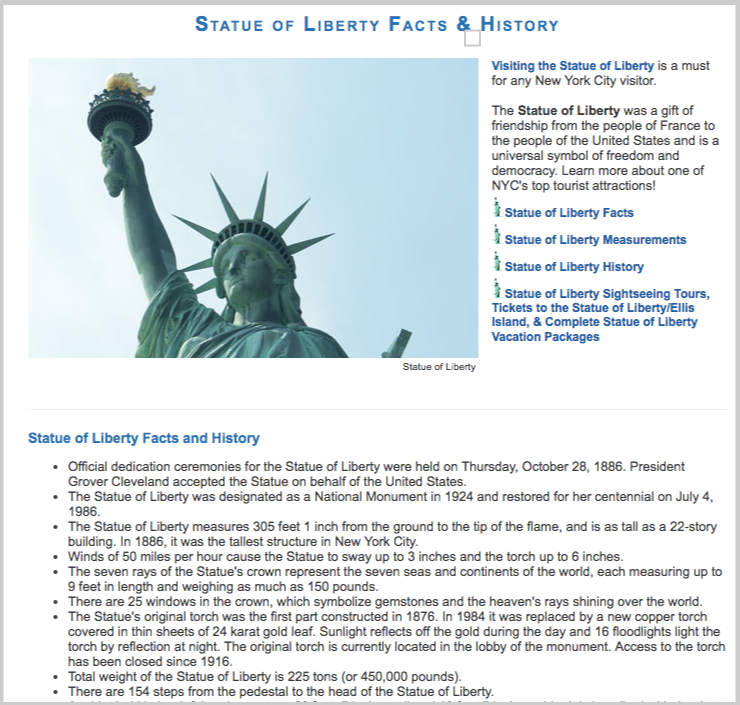
If you're not familiar with what places in your city you can be proud of, you can search for "attraction" "YOUR CITY" on Google. A quick search like that would give you attraction topic ideas that you might consider creating as content pieces.
While creating your local attraction-like content asset, you may prospect for resource pages who might be interested to link to your page — primarily, these are webpages that list down references and resources on history (see elementary pages below as an example), library pages from Edu sites (that can get you edu backlinks) and local webpages on travel.

There are hundreds of this type of page and may require some due diligence in prospecting to find a majority of them.
You may check out these guides on using link prospector to find thousands of backlink opportunities in minutes and this cheat sheet on search engine queries.
SEASONAL LINK BUILDING CAMPAIGNS
We've covered seasonal link building campaigns before. In a variety of ways, these initiatives get more often than not links if executed properly.
The hype of traffic and links to seasonal content assets must be properly taken care of to sustain performance, and not just conduct it as a one-off campaign.
For tour companies, one way to maximize link performance is to start ranking for seasonal events in a city.
By developing content pieces in advance (through proper planning) any brand in the travel space can integrate seasonal events to the theme of the blog. 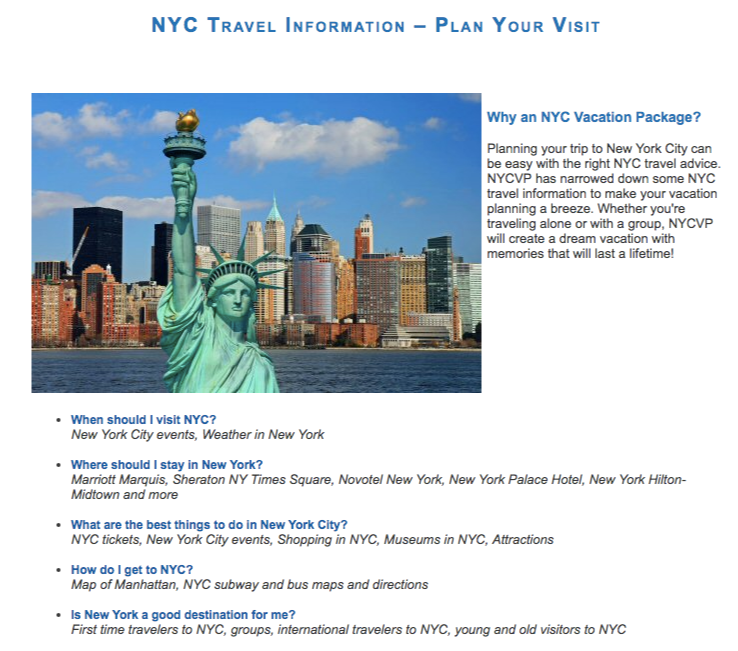
For holidays like Mother's Day, Easter, and Valentine's Day, bloggers on the average plan ahead their editorial schedule — as early as 38 days in advance.
Timing is critical here if you're producing content, and it's quite challenging to land placement from those blog publishers.
For a seasonal campaign just like this, it takes planning to put everything into account. Improving relationships, pitching emails, and getting a sense of the average days/weeks in advance of content creators publish are all critical to the success of a link-based seasonal content campaign.
"THINGS TO DO", TRAVEL GUIDES, AND EVENT BLOGS
You don't have to reinvent the wheels in content creation. There are blog ideas that have been tested to provide value from time to time.
One example is "things to do" content — these are basically simple travel guides for first-time travelers and tourists in a specific location. You may also be seasonal in approach if you add a monthly series for that (e.g. things to do in New York in November) - depending on how frequent changes in local activities are.
In addition, there is still much demand for travel guides, whether it is for newbies, intermediate, or veteran travel enthusiasts. You can't go wrong with creating last-minute travel guides.
To stand out among travel guides out there, you need to make sure you're putting more comprehensive information on the topic than what other guides can provide — e.g. give them a quick hint list on top.
For busy people, it's well worth their time to read a very quick list of any travel information. You've got to understand how your target audience consumes content in your space. It's a good strategy to produce on-top list travel info at the top of your page (giving your visitors quick answers to their questions).
LAST-MINUTE TRAVEL GUIDE
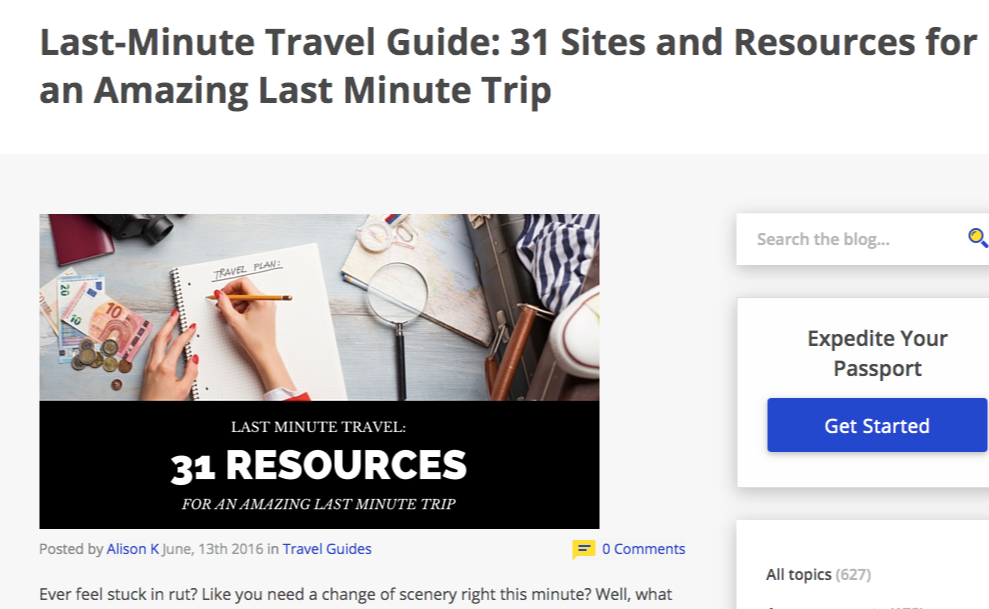
VISITING PLACE CONTENT
LOCAL AND NICHE-SPECIFIC RESOURCE PAGE LINK BUILDING
Links pages are low-hanging fruits in every industry. Given that these resource pages have the inherent intention of giving out links, it would be easy to pitch an offering that matches their actions (to link out).
While that may be easy to say, it requires content assets that give value to their targeted audience to be able to deserve organic links from those pages.
Either you promote a travel resource you've just created or get straight to share what your brand does (for links pages that link out to money/commercial pages).
You can check out this guide on broken link building and finding more links pages to get an overview execution of the link acquisition process.
NON-COMPETING LINKS PAGES OUTREACH
Tour brands ignore their add-on offering as a way to increase contextual links for their site's backlink profile.
It would be an overlooked opportunity if that's the case, given that there are readily available link prospects that can point out to travel offering pages.
For example, if your tour company offers services like car rental service, you can search for links pages that list down brands that offer such services. There are lots of pages if you could diligently discover them.
LINKS THAT TRAVEL FROM PAGES THROUGH PAGES
There are a lot of link opportunities that are available out there in the travel space. You've just got to make sure you put the effort into finding ones that can drive referral traffic to your pages. Those acquired contextual links with traffic in mind drive more value than generic directory links. Find links that travel from pages through pages.
How to Use Reddit For Search and Content Marketing
With 330 million monthly active users (source), Reddit is a great place for traffic generation, additional content visibility, and content ideation.
By taking every initiative seriously, you'll get the maximum benefits from diving into how Reddit marketing works.
You would tap an incredible amount of feedback from users who are eager for new content in their specific industries and have the potential to distribute a content piece worth sharing.
How to Find Subreddits For Your Content
Your success in Reddit content distribution is based on your own identification of subreddits that fit your brand.
I mean your brand, not your industry. Going generically with your industry for Reddit marketing won't make it a huge success. Start identifying a demographic fit for the content you are producing.
The question is, how do you find subreddits for your content?
Reddit search
Reddit has good search functionality based on the keywords you input. Start with that.
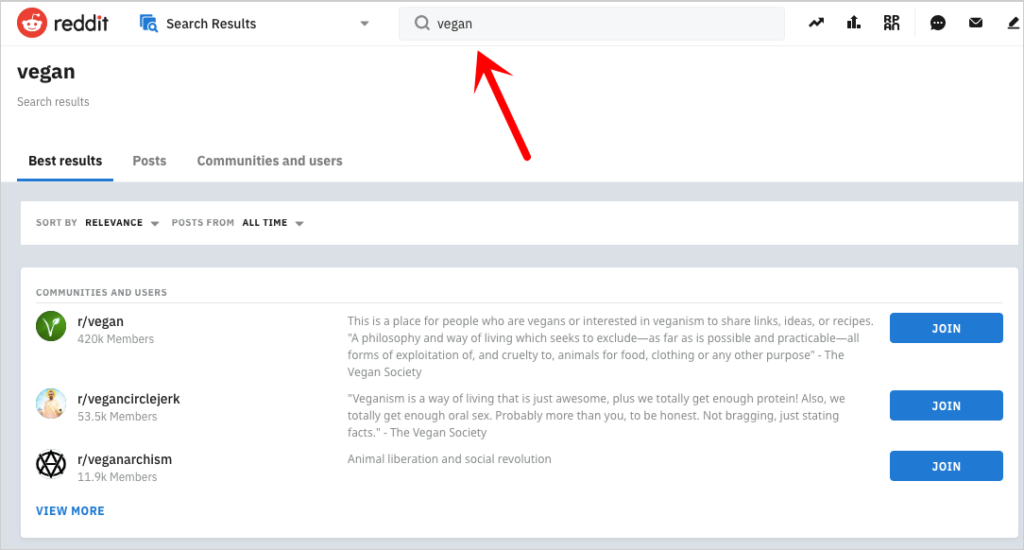
It is best you can create a spreadsheet that lists down all possible subreddits you can check later on.
Google Reddit search
Besides Reddit search, discover deeply relevant subreddits on Google search itself.
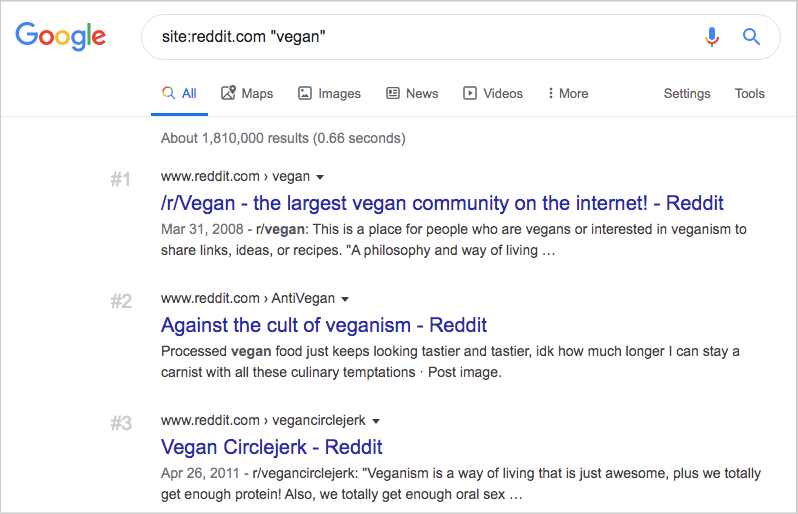
You will see subreddits that you wouldn't find in a Reddit search. Google will take subreddits where topical content has been submitted to, or has received good engagements — not always the case, but use this search methodology to add more subreddits to your list.
When you go to subreddits, you will also see related subreddits — which you can include to your list, as it fits.
Brainstorming with your team
Set up a meeting with your content team and try to tackle what topics you prefer to publish on your content.
Match those topics to available subreddits you discover.
Of course, the broader you get into your brand content strategy (in terms of content ideation), the more subreddits you can list down further.
Use Reddit websites to assess growing subreddits
There are new subreddits flying and growing an activity count.
You can use Subreddit Stats and Reddit Metrics to check any growing subreddits you think can be added to your Reddit spreadsheet.
Discover more with SiegeMedia's list
SiegeMedia curated popular subreddits by industry. You can check out their list to find ones fitting to your brand.
Reverse engineer with Ahrefs' organic keywords
At most, if you want to look for any subreddits, even specific Reddit discussion threads that are currently ranking for keywords related to your site, you can use Ahrefs Site Explorer.
Simply plug in reddit.com to Ahrefs, then go to the Organic Keywords section to find what keywords any Reddit page is currently ranking.
You can discover topical subreddits by searching for your industry keywords in Ahrefs search bar.
What to consider in subreddits?
Before we dive into specific Reddit marketing tactics, let me go over a few considerations you need to take in every content promotion or content marketing initiative.
Submission policies
Go over your list of subreddits and check each subreddit.
Look for sections about submission policies. There are subreddits that have a dedicated portion for that — letting existing and potential subscribers of what they should expect with some rules and guidelines for sub-communities.
There are subreddits with restrictive submission policies; others don't have it included in their overview sections.
For the latter, that doesn't mean you go to the subreddit and spam them regularly with your post links. Be careful not to do, or else your domain will be banned.
Respect Reddit and its users.
Subreddit size
Subreddits plainly show their existing subscribers. This gives you an idea of how many eyeballs you can get when content is properly promoted in a specific subreddit.
But not only should you be looking for subreddit total subscribers, check also the next consideration:
Activity count
Activity count refers to how many people are currently online over their total subscribers.
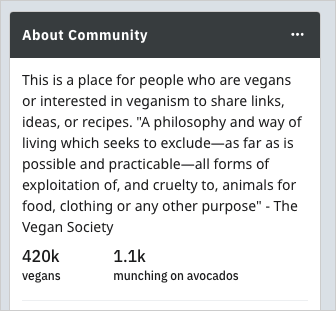
Of course, people who go online during the time you visit the subreddit variably depend on timezone, day, time, and other factors. But this gives you a good assessment of the possible eyeballs you can get to your content.
Now, let's go straight to different methodologies where Reddit can be extensively used.
How to Use Reddit for Content Ideation
Content creators can generate enough ideas when they care enough about the subreddits users' behavior — what and when users post in a specific subreddit.
For instance, you can discover blog post topics simply by searching for any of these terms:
- how do you
- figure out
- I'm struggling with
- tips
- challenge
These are all leading words toward problems subreddit users want to get solutions or questions they quickly need answers.
On content formats
Subreddits have their own content formats users want to see and distribute to co-redditors.
You may opt to not just look at your industry-relevant subreddits, but try to replicate other subreddits' content formats. This is one great way to be the first in your industry to have the content format popularized.
On headline edits
Copywriting is a must skill when creating content to fit your Reddit marketing strategy.
By writing headlines that quickly capture the attention of users, you increase the chances of more eyeballs to your content.
You can check out this latest Reddit research on some tips when writing headlines for Reddit content.
See more:
How to Use Reddit for Content Promotion
Once you reverse engineer what type of content and which content idea has the potential to go mainstream in a specific subreddit, it's time to promote the piece.
Understand the specific subreddit communities you want to engage in. Before submitting any post links, have a good grasp of the community's behavior.
You can browse the past content types — images, Today I Learned, Ask Me anything, text submissions containing advice, questions, and even stories.
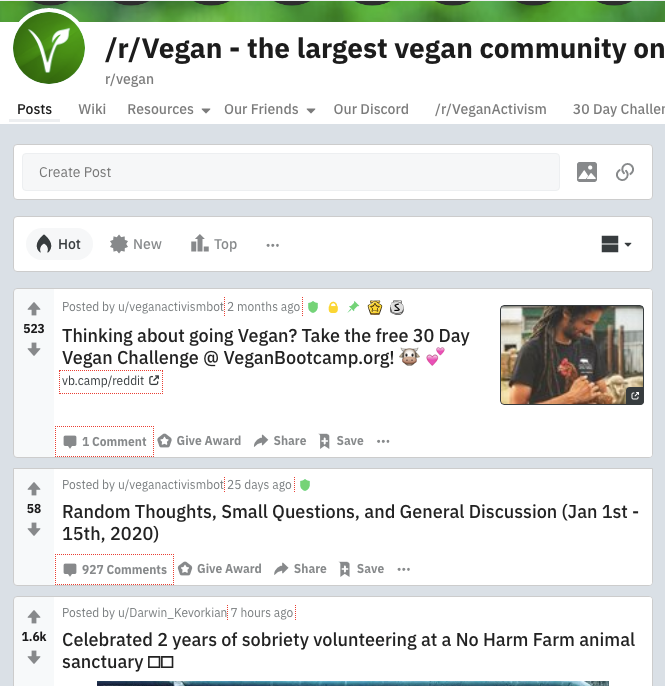
This means you don't jump quickly to the subreddit and post a link.
There would be a period of time where you just learn the behavior of co-redditors, even ask questions to any Ask Me Anything portions to see how people interact.
By doing research, you don't plan to ruin your content marketing strategy for Reddit.
See more: How to Promote Your Website Through Link Buiding
Care About The Community
Identify subreddits that fit your brand. Understand the behavioral patterns of redditors. Start sharing content that provides them value. Care about the community.
If you're looking for an agency to help you out with marketing, you can check out our content writing and link building services.
How to Set Up Google Alerts
What is Google Alerts?
Google Alerts is a content change detection and notification service, offered by the search engine company Google. The service sends emails to the user when it finds new results—such as web pages, newspaper articles, blogs, or scientific research—that match the user's search term. Source: Wikipedia
Maximizing tools that can monitor your brand, websites, and people within your industry is essential to growing your business.
Why is this necessary?
You get to benefit from monitoring mentions of your brand and other industry websites/people in ways such as:
- Understanding how your brand, your product/service, even the staff working for you are being perceived by netizens (this includes checking if there are negative reviews/mentions you need to be aware of).
- Discovering opportunities to network with bloggers, publishers, and non-competing organizations who can help partner for producing well-crafted content in your space.
- Engaging in niche-specific online communities where you can deliver so much value with your expertise by answering tough questions.
- Find out upcoming content creators in your vertical who can be part of your publishing team.
There are a lot more opportunities you'll be missing out on if you don't monitor web mentions.
There are several tools out there that will assist you in this web monitoring. In this post, we'll only cover one free web monitoring tool - Google Alerts.
How to Set Up Google Alerts
Here are four steps to setting up your own Google alerts.
- Go to google.com/alerts in your browser.
- Enter a search term that you want to track.
- Click Show Options to narrow the alert to a particular source, language, region, frequency of alerts, types of results, and which email alerts will be delivered to.
- Select Create alert.
That's how easy it is. You don't have to be a rocket scientist to apply those four steps.
The next question is, where can you apply monitoring web mentions?
How to Use Google Alerts For Business
Seven ways aren't that all to maximize Google Alerts. We couldn't cover ALL methodologies, but these 7 approaches are enough to get you started with monitoring important mentions, websites, and other web elements.
1. Monitoring your brand
By monitoring who mentions your brand, you could possibly find all sorts of things you can maximize for further link acquisition and other content promotion initiatives. Here are examples of what you can find out:
- Publication websites from your industry and from other niches you could possibly tap for guest blogging.
- Up and coming bloggers whom you can connect with for promotion of your content and/or of your offerings.
- Academic organizations that have quoted content of your brand (which can help you generate unique opportunities or strategies to tap this kind of market).
What are the things you should keep monitoring regularly about your brand?
A. Brand Name or Website Name
First, you start by monitoring websites that mention your company but are not linking to you. You get these mentions primarily because you have your offerings (products/services) reviewed, cited, or one of your staff members has been interviewed for a publication feature.
Set up a Google alert to find mentions of your company name. Enter your company name as the term you want to track. You can also add variations of misspellings that you think people can make when mentioning your company name.
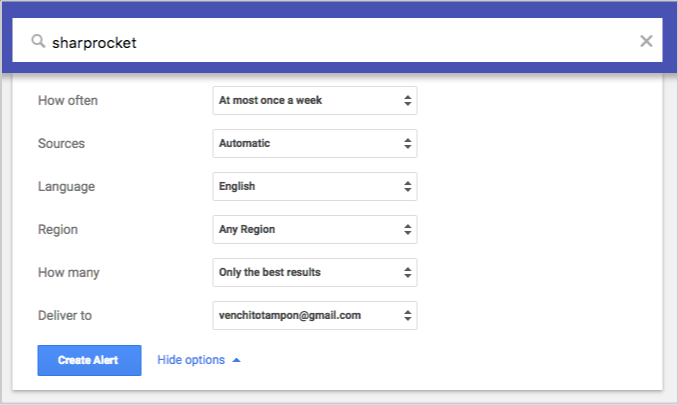
For example, in my former link building blog, Digital Philippines, I often see unlinked mentions of a misspelled brand name - Digital Philipines (missing one letter P).
To look for potential misspelled words or phrases, you may use this Keyword Typo Generator to get a list of likely human misspellings of your brand name.
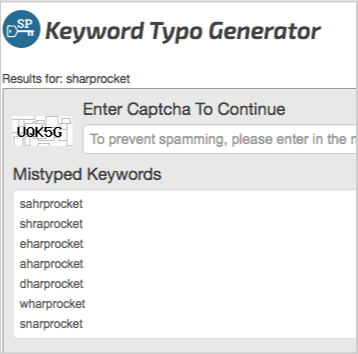
B. Website Name
You would notice that I separate brand name from the website name, as there may be subtleties here.
For example, I"m From The Future is the brand name of a company while its website is FTF.agency (not the website that most would create, e.g. imfromthefuture.com).
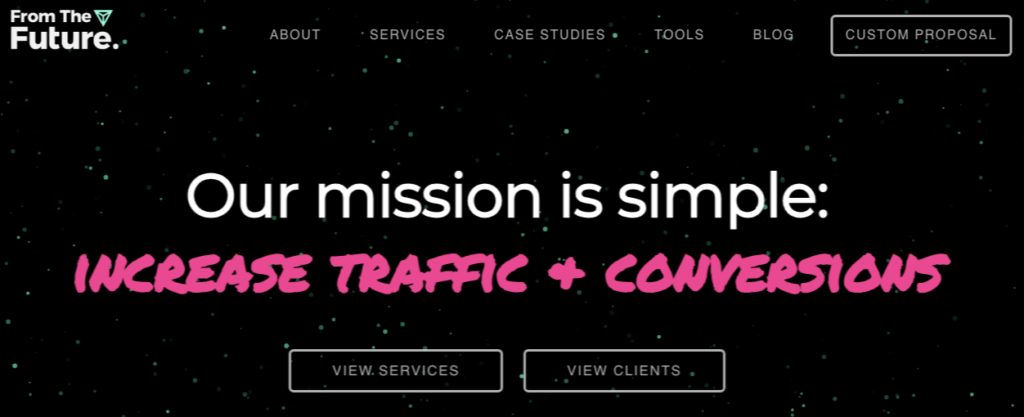
Set up a Google alert for the website name.

You may also add misspellings of the website and variations of TLDs - in case you don't have a .com website. There are cases when people are linked to a .com version of your site (e.g. digitalphilippines.com or ftf.com) instead of the right versions (e.g. digitalphilippines.net or ftf.agency).
C. Team Members
You'll be surprised that not only people would mention your brand name or website name, but also names of people who are working with or for you.

Here are some guiding questions to let you identify who are these people:
- Who are your brand ambassadors? These are people who are paid to represent your brand.
- Who are your staff writers, marketers, or publishers contributing content outside your website?
- Who is the face of your brand online? You may not have a brand ambassador from other entities, but have someone who frequently asked for media interviews or press exposures.
- Who do you send out for conferences to speak or organize events?
Identify these people and list down their names. It's very important to know them first so it would be easy for you set up Google alerts for each one of them.
You'll be wondering now what kind of mentions that those brand personas would receive.
These are just handful types of mentions your staff members could possibly get:
- Dedicated pages of industry conferences and events where one of your staff members highly participated in - these include speakership, sponsorship or community works.
- Crowdsourced content like group-sized interviews (listicle type of interviews) where your CEO, a marketer, or a writer of your team has been asked to answer one specific question.
- Your CEO or top executive's popular quotes or statements, which were highlighted in an online magazine or column.
- A praise statement for a well-deserved award or recognition in the industry that typically mentions the President of your company.
Once you have the list, you can set up individual Google Alerts for each of them.

D. Company products
If you have several products, it wouldn't make sense to create individual Google alerts.
First, there will just be clutter in your alerts, as you will probably get alerts for mentions of products that are not yours.
Second, if you have thousands of products, not all of them are getting mentioned on the web - we'll get into this a little bit later.
Here are some recommendations if you want to set up alerts for company products.
Start with products that are attached to your company or brand. There are products where your company has created in the first place. One example is USANA (I'm not affiliated with them), but they have products where their brand is attached to it (e.g. USANA Essentials).

Go over your popular products or highly sellable products. Chances are, if they are popular, they'll get some mentions one way or the other on the web. List down your popular products or those ones that get positive reviews.

Setup another alert for each of your company products - both for products attached to your brand (so you can be very specific with alerts) and highly sellable products.
One good note to consider is when you're a retailer of products. If you have an eCommerce site and you're reselling products of other companies, this kind of alert monitoring may not be a recommended option for you.
Even if you find all mentions of a popular product, when you reach out to people and ask for links of unlinked mentions, you won't get any, since you're not the manufacturer of the product.
2. Monitoring Your Competitors
There are more reasons to track your competitors than just knowing their popularity level and how good their products are as far as positive reviews and customer engagement are concerned.
Here’s why you should monitor competitors for online mentions.
- Direct link opportunities
- Potential publication websites for interviews
- New distribution websites for content
Let's tackle each of this one by one.
Direct link opportunities
By monitoring your competitors, you'll find a website with a dedicated listing page that linked out to two or three of your competitors.
If the page is in context with you and is currently being updated, it's an opportunity for you to reach out and ask for a link.
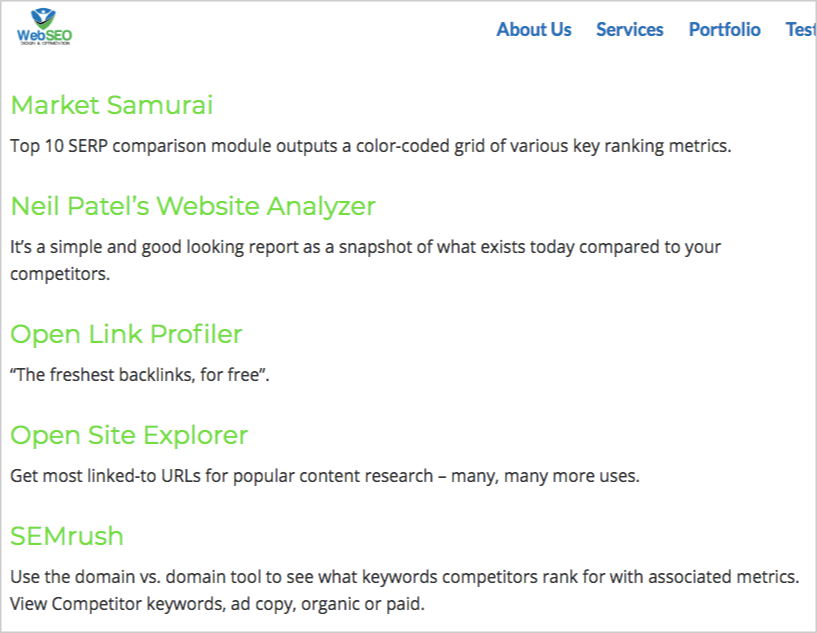
You'll find all sorts of mentions that are linked to your competitors, but not you. If you could figure out why they get mentioned by checking and understanding page titles, section titles, and descriptions before link placements, you'll get a felt sense if you have a chance of getting a link as well.
Potential publication websites for interviews
Your competitors may be getting media exposure through interviews - both group, brand or brand persona. By tracking which publications have mentioned them, you may have a list of websites to collect and qualify based on the probability of getting featured.
New distribution websites for content
What monitoring your competitors allows you is that you'll find new content distribution websites that are sometimes unique to your vertical. You would often find out that there are websites not included in the list of "top [industry] forums" or "top [industry] submit content" articles.
By setting up alerts, you will discover new distribution websites that are very unique to your industry.
Setting Alerts for Competitors
For competitors, here are some search terms you can track regularly. Customize these alerts on the basis of your competitors' brands:
- "YourCompetitorsBrandName"
- "YourCompetitorsWebsiteName"
- "YourCompetitorsProductName"
- "YourCompetitorsBrandAmbassador"

Recommended Tip in Finding New Competitors
In web monitoring, you don't just stick looking for who mentioned your current competitors or competitors you would consider relevant to your business.
But it's also critically important to seek out new competitors in your field.
There are three reasons why I think it's good to discover new competitors in your space:
- You will see their current strategies that allowed massive results in a short period of time (rare as it should be, but it is possible to grow a brand quickly).
- You will notice what these new competitors are trying to do to differentiate from you and from the competition (are they focusing on unique opportunities you may have missed?)
- You will seek out news publication and content distributions websites that are receptive to new or startup brands or websites.
If you wish to find new competitors, you can set up Google alerts to discover them.
- "YOURPRODUCTNAME VS"
- "COMPETITORPRODUCT VS"

What this particular Google alert does is that it gives you mentions that compare your product or your competitors' product over a new competitor. Though the newfound competitor may not be as new as you think, if it's not on your list (or you haven't checked it out), you can take a look and see if they're a relevant competitor.
3. Monitoring Coined Terms
Whether you're a solo writer or part of an editorial team, you have may have coined some terms in your industry that have been frequently used by other publishers or content creators.
If you can find who uses the coined term but haven't linked to the original blog post on the topic, then that may be a good opportunity to earn more links in the process if you do some outreach.
For example, Brian Dean of Backlinko coined the term, "Skyscraper Technique" . Since he has published and popularized that SEO strategy, a lot of SEO and internet marketing bloggers have started applying it on their own SEO campaigns and have shared results in a form of case studies.
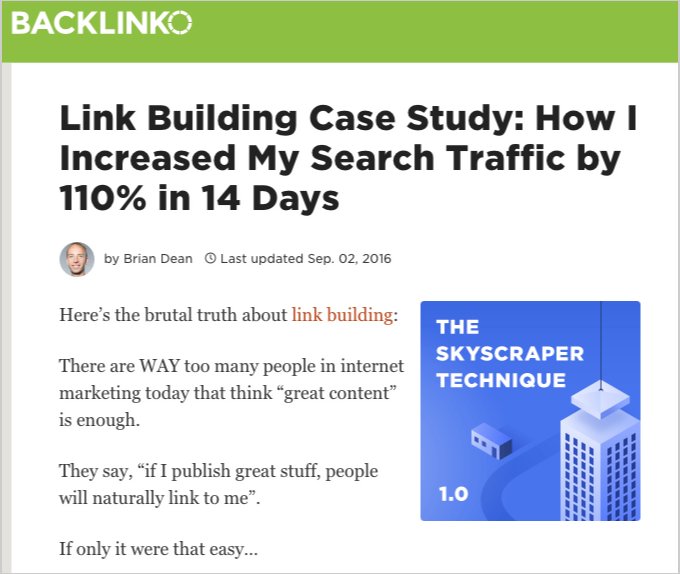
By setting up a Google alert, you'll be able to receive notification alerts of blogs that mentioned or used the exact term on their blog content. You could enter any of these variations of terms to get the most of the alerts.

Below are some examples only.
- skyscraper technique
- skyscraper strategy
- brian dean skyscraper
- skyscraper backlink
Of course, you'll be thinking how this would be possible for your industry or for the industries of your clients if they have coined one term or at most, just planning to do so.
Here are some things you need to consider if a coined term is worth monitoring.
Does your coined term affect other people's performance both professionally or business?
Your coined term should literally get people to take action, assuming it provides a unique value that when practiced or applied to business and life can make a significant difference.
The reason is that if the coined term affects results, it would later be referenced on blog posts and case studies of publishers in your space.
Can your coined term be categorized under a specific section in your industry?
If a coined term has been placed under a category of a blog or publishing website, it increases its visibility of getting found by people who may refer to it in their works.
Every time you have coined a term and people are starting to use them, do not neglect setting up a Google alert, even if the coined term is not yet too popular.
By waiting for months or years to get traction, you'll have missed out on early mentions of your coined term, which were supposed to be converted into initial links by then.
4. Monitoring New Guest Publications of Publishers
One of the best practices in executing a guest blogging campaign is finding where's the next blogs or websites top industry guest publishers publish their content.
Monitoring new guest publications of writers is like semi-automating the process of finding new blogs to submit content to. Not only does it speed up blog prospecting, but also actually helps filter those blogs that really accept guest contributions (from those who don't) and blogs that are of high quality and with probably good engagement (from those blogs that are not).
Before setting up a Google alert for that purpose, it's important to first have a list of top guest bloggers in your space. One important note is not to restrict yourself to bloggers, but also look for industry practitioners who are publishing their works online.

Once you find them, you can create different Google alerts that track a variety of mentions. Here are examples of these varied terms:
- "BLOGGERNAME" guest post
- "This is a guest post from BLOGGERNAME"
- "guest post from BLOGGERNAME"
- BLOGGERNAME "new post"
- "guest author" BLOGGERNAME
- "guest contributor" BLOGGERNAME
5. Monitoring Niche Questions
One way to build up your branding is to answer as many niche-specific questions as possibly can - but where your expertise really lies.
The first in many effective methods of finding industry questions is to subscribe to industry forum newsletters, subscriptions or alerts where you'll receive daily or regular filtered questions.
What I've found with the aforementioned approach is the vulnerability of distributing content on only one platform or website. Vulnerable given if the niche forum or Q&A website has been turned down, your distributed content in the form of answers may be wasted.
As an alternative, you can set up Google alerts for forums or Q&A sites.
What you would like to monitor are the following:
- Niche-specific questions in the top forum and Q&A websites (e.g. Quora)
- Newly added categories and sub-categories in the top forum and Q&A websites (e.g. SEO tools section in Quora)
- New industry and general forums and Q&A sites
Let's go over each of the above opportunities.
Niche-specific questions in the top forum and Q&A websites
Apparently, the top-most opportunity you'll get by setting a specific alert for this is you'll find the exact industry questions you can answer.
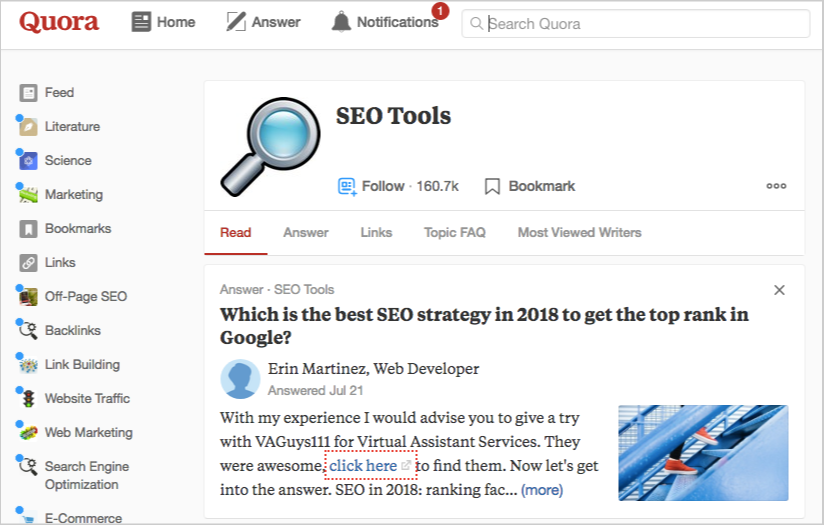
If you have regulated your alerts to real-time updates, you can set the alert to real-time. The earlier Google gives the notification, the earlier you can answer the question.
Be prompt in answering questions as they tend to stay a little longer and often have the benefit of receiving more views and engagements from both people who are looking for answers and people who intend to answer those questions too.
Newly added categories and sub-categories in the top forum and Q&A websites
I often see this happening in top Q&A websites given the similarity and demand of answers from community users, and it would be more helpful for users to create a separate specific section on the topic.
By being the first one to dominate a targeted question market, you'll be able to capture more audience from the answers you provide.
New industry and general forums and Q&A sites
New different forums arise from the need to engage with very targeted audiences.
You'll not be able to find these new forum websites by just searching, as they may not be listed yet in top niche forums articles.

However, you may discover them by monitoring on Google Alerts. Start by tracking these search terms:
- YourNiche "forum"
- "Quora" "topic"
- "LongTailQuestion" "forum"
6. Discovering New Freelance Writers
The demand for freelance writers has grown over the years, whether its purpose is to create a series of articles for a company blog or write content fairly distributed on other relevant websites.
However, the problem I often see is finding freelance writers who are highly skilled and have a good track record.
More than that, if you can look for freelance writers who have connections with other publishers in the field, it would be a big plus for your link building campaign. You need not worry about an additional list of prospect blogs and you'll be able to spend more time in other phases of the link building campaign (i.e. making customized strategies).
To discover new freelance writers in your field, you can utilize Google Alerts.
It is best if you have specific job board sites in mind (e.g. jobs.problogger.net), where you can create a custom Google alert for them and be able to get a supply of alerts for technical writers.

Here are some phrases you can use as tracking phrases in Google Alerts:
- “Jobs.problogger.net” + “Travel”
- “Buffer” Design
- “SEO Tools” Freelance Programmer
- “Looking for a freelance” Pixar
7. Generating Content Ideas
Google alerts aren't only useful for monitoring mentions of your website and of your competitors, it's also a great tool for generating topics for your content.
There are many content marketing tools out there that can help you with discovering new industry topics. Buzzsumo and Ahrefs' Content Explorer are some of these examples for scaling content ideation.
As far as the receiving method is concerned - receiving email notifications on what's popular out there in terms industry data, and newest reports - you can use Google Alerts.
To set this up well, I would start by using the filetype advanced search operator along with the topic of choice.
This is the exact search term you'll track using Google Alerts.

Once you have created the alert, you'll be receiving email notifications of new pdf published. Examples of these are:
- Fact sheets of top industry organizations
- Data survey and reports for relevant and timely topics
- Evergreen academic resources
These niche resources can help you craft better content with supported data and powerful insights from authoritative entities in your space.
How to Manage Google Alerts
It's one thing to set up Google Alerts. It's a different thing to manage them.
Of course, you'll receive thousands of email alerts, and that's where the problem lies.
You have to be able to manage Google Alerts in its most simplistic way.
One tool that I think can effectively help you manage alerts is Google Inbox.
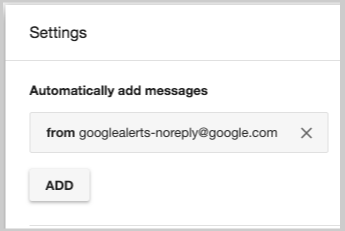
When you sign in, you'll see a section called, "Bundled in the Inbox". This is where all your inbox filters will be placed.
Start by creating an inbox bundle. Insert the email googlealerts-noreply@google.com - this email is the exact automated email from Google Alerts.
You can also filter alerts based on the campaign type or purpose. For example, for alerts that give you new blogs to target for content distribution, you can create an inbox bundle for Guest Blogging. To track unlinked mentions, you can make another folder for Link Reclamation.
By doing so, you refine the process of managing Google alerts and let you focus on the current campaign type. One by one, you deal with each email alert.
Maximize What's Free
It's easy to be overwhelmed with new premium content marketing and mention tracking tools. But if you can get your hands on free tools like Google Alerts and get the most out of it, you'll never know how much it can help you semi-automate some of your link building and content-promotion practices.
If you have additional tips in using Google Alerts more effectively, let me know in the comments.


